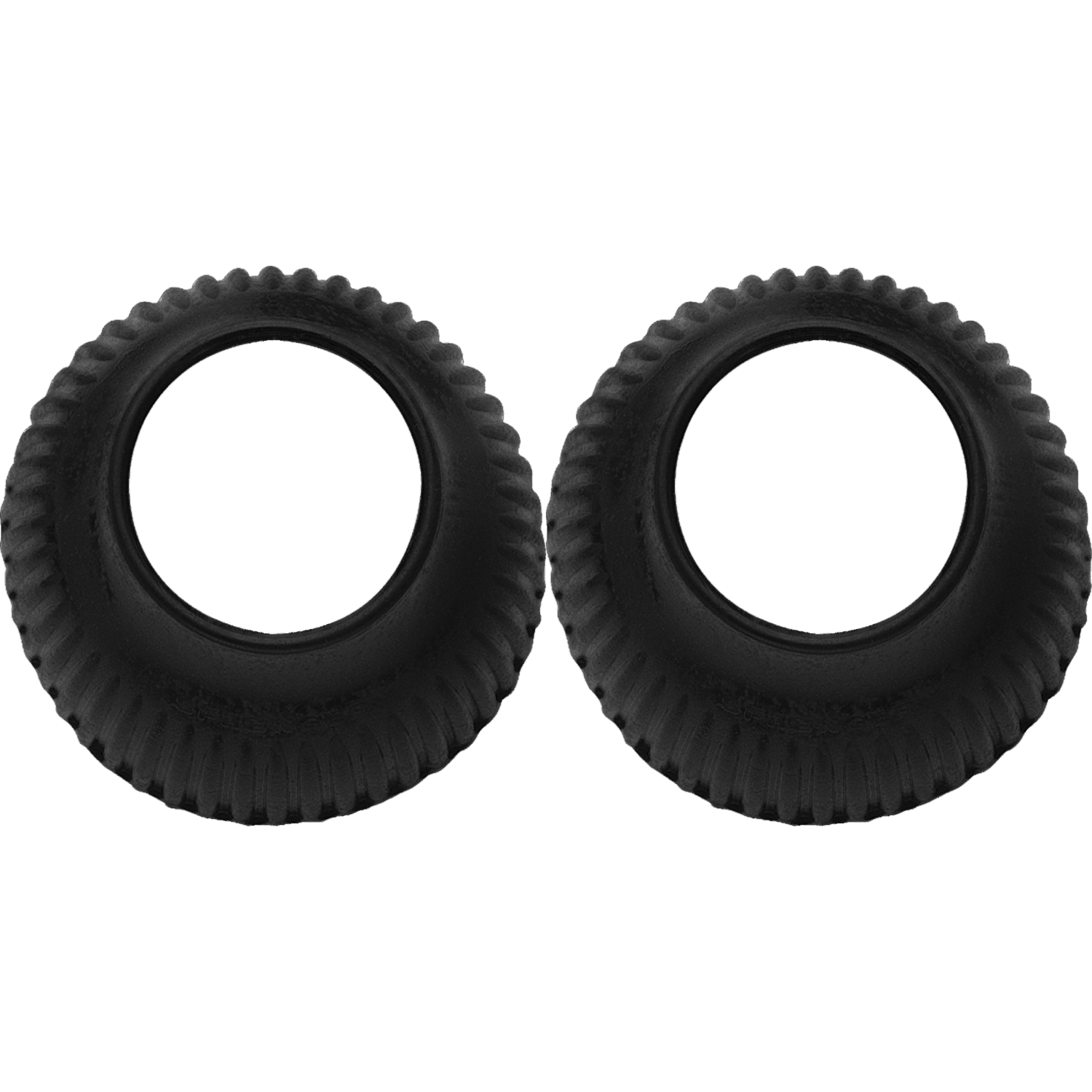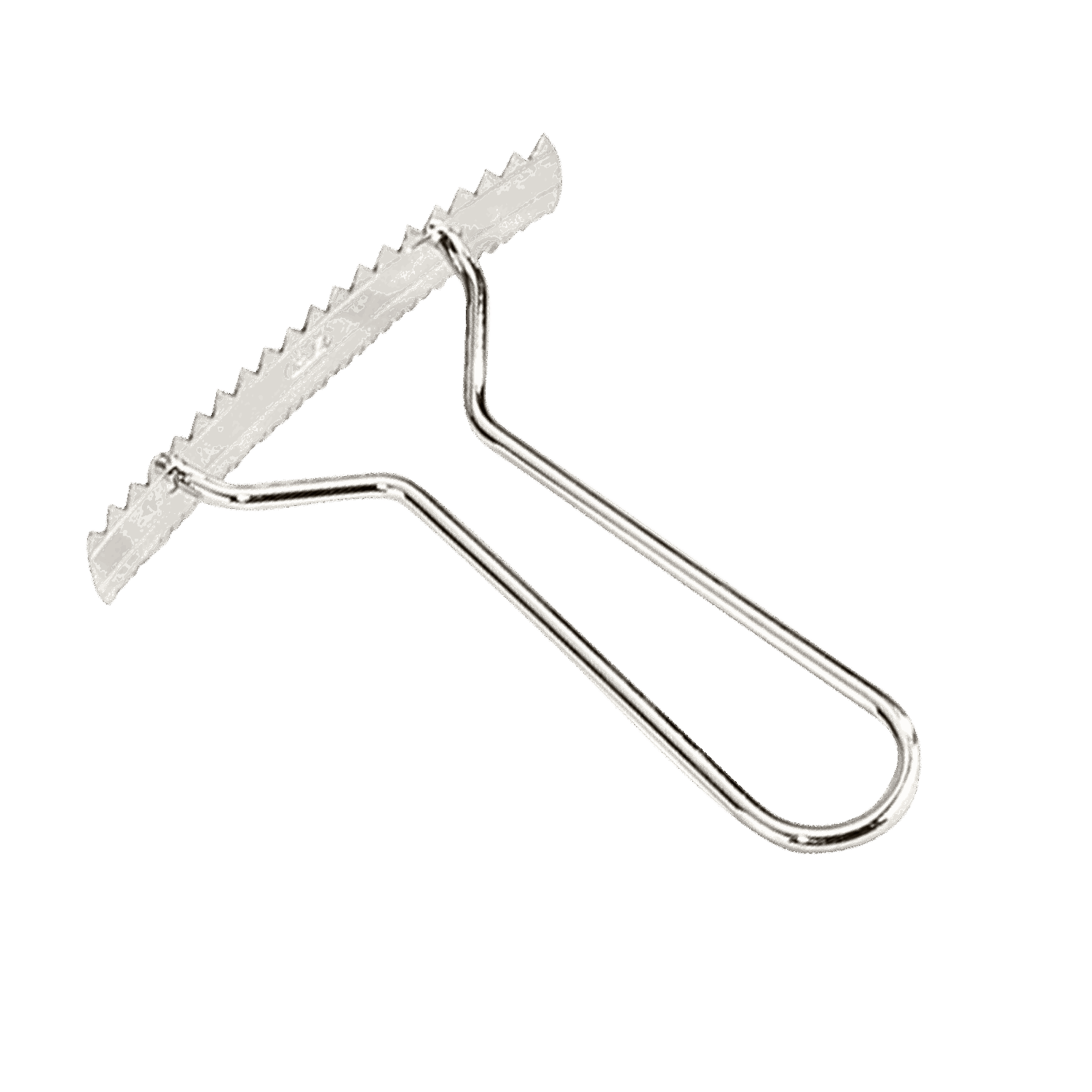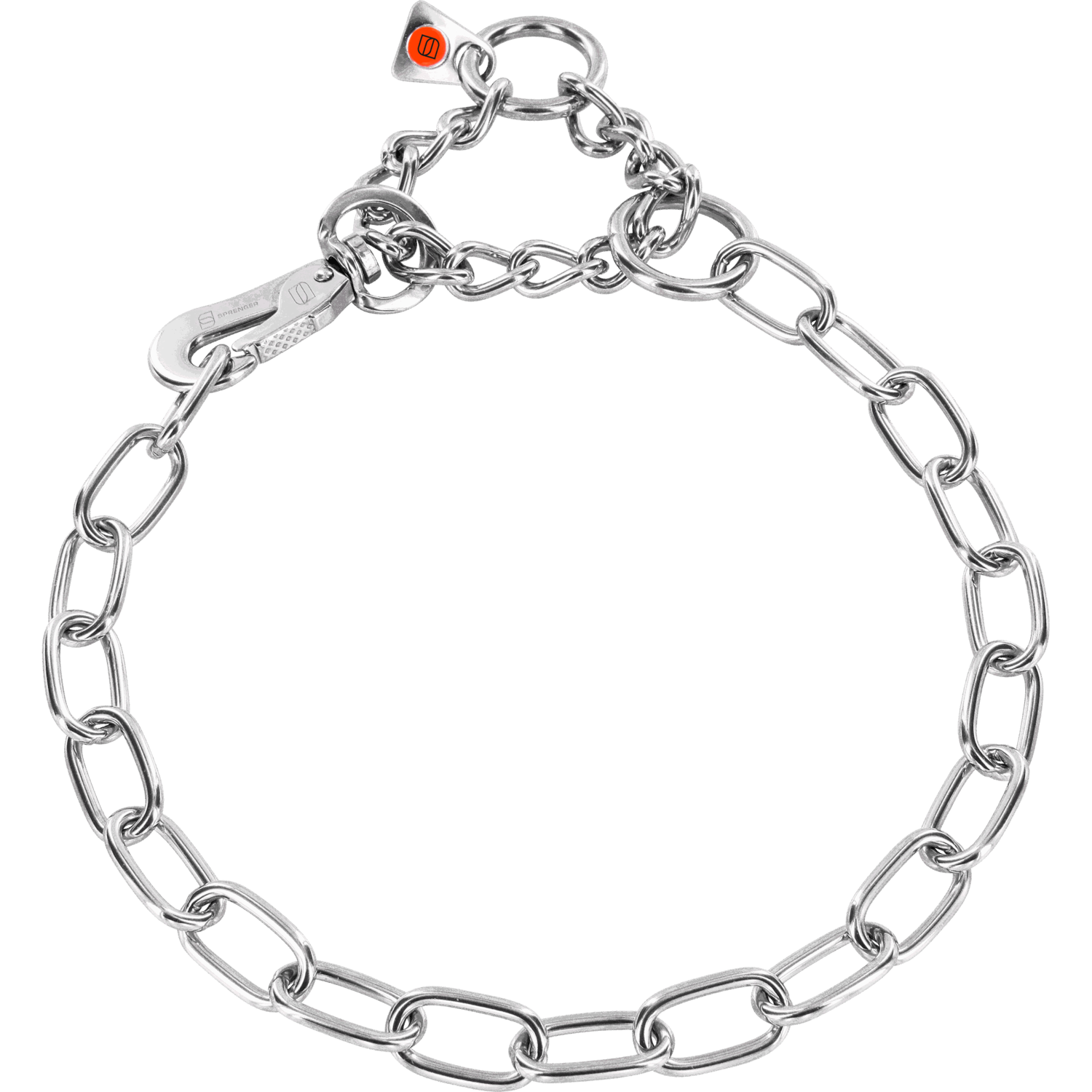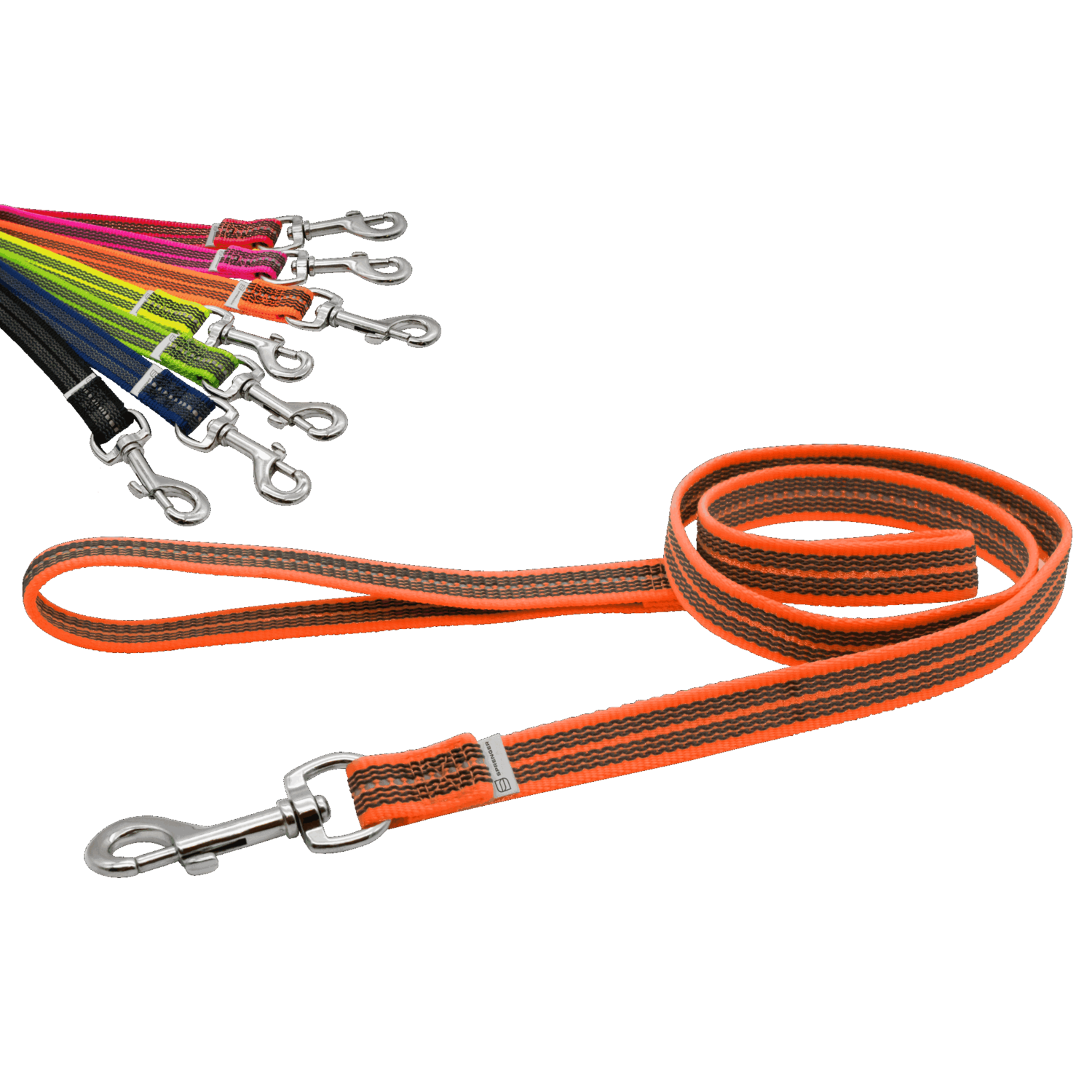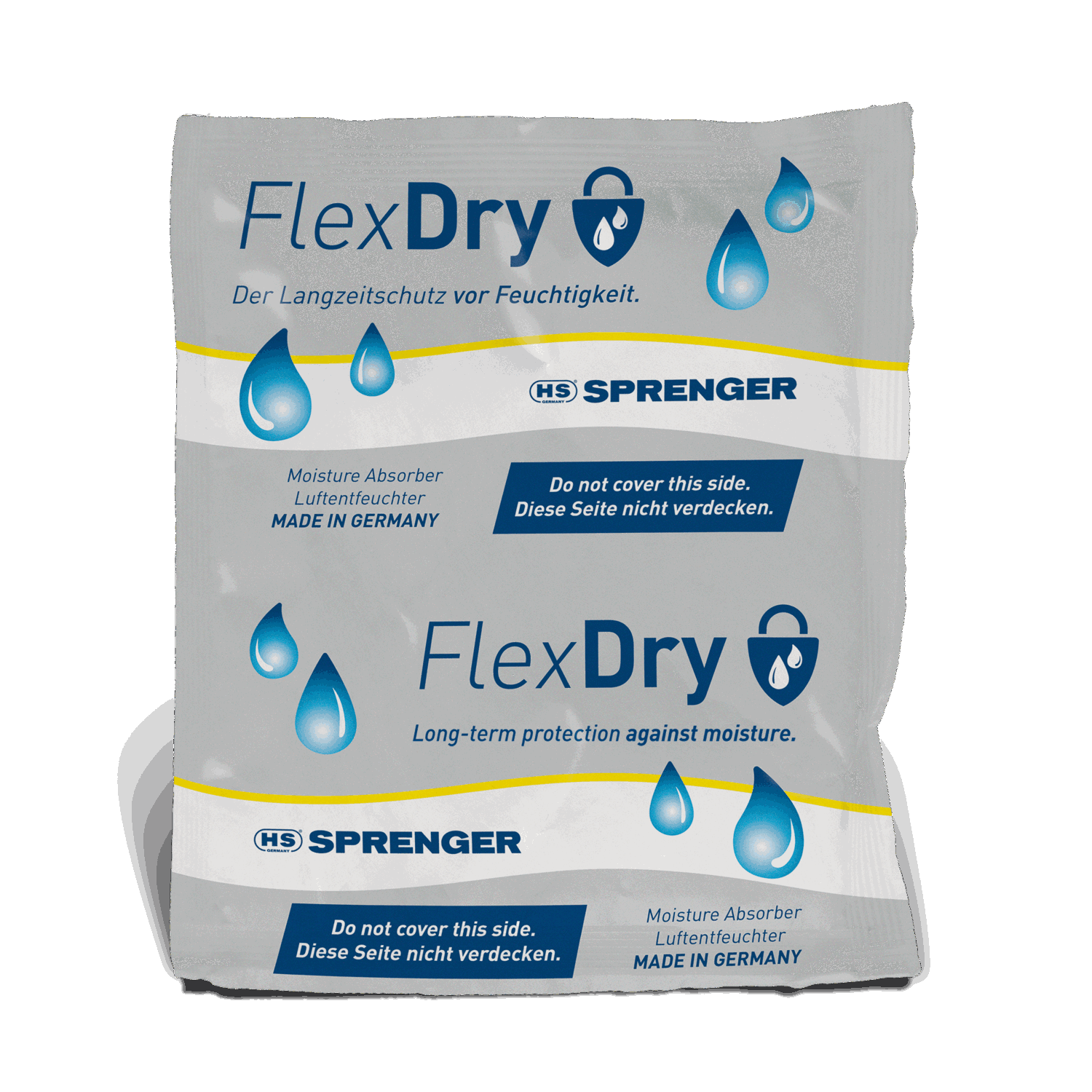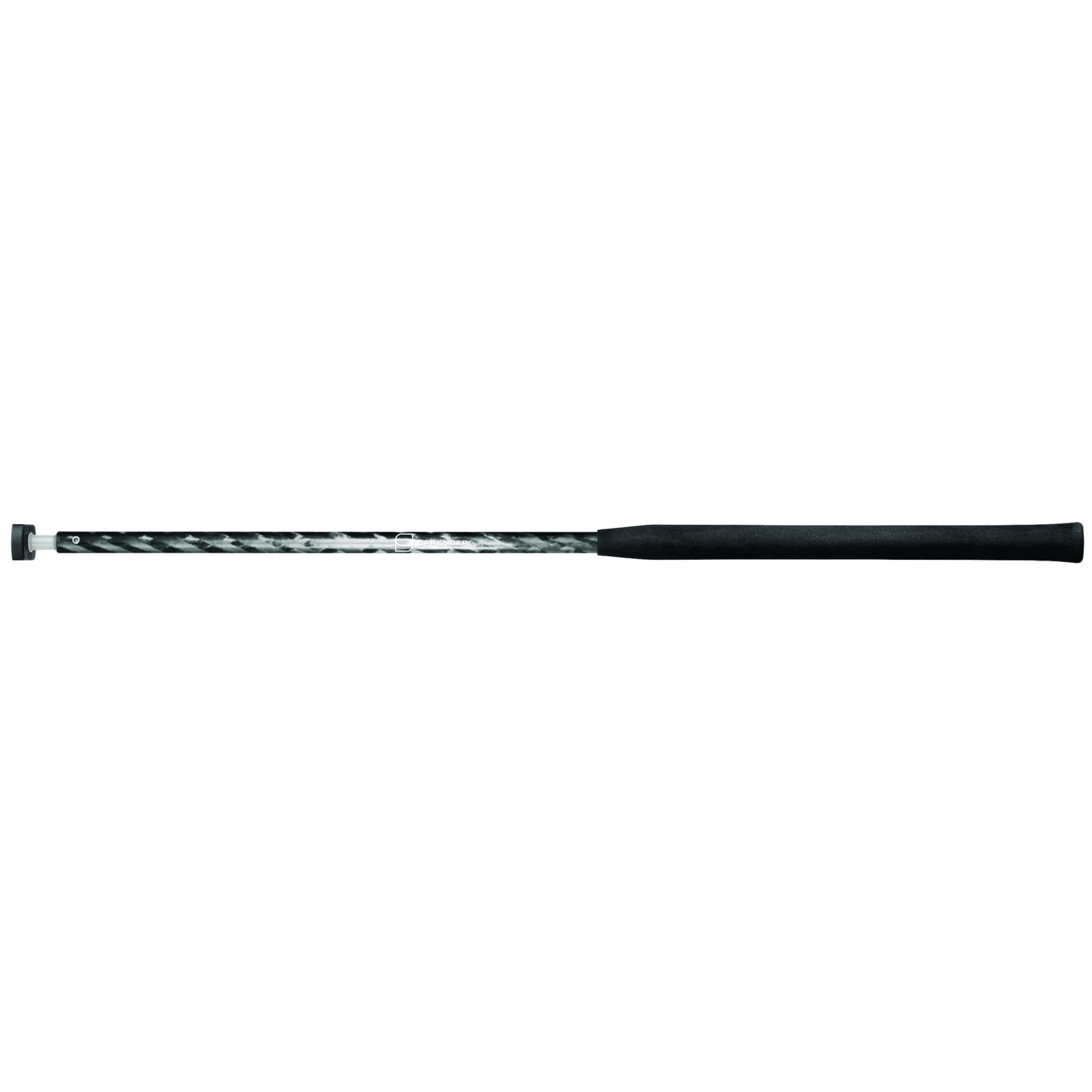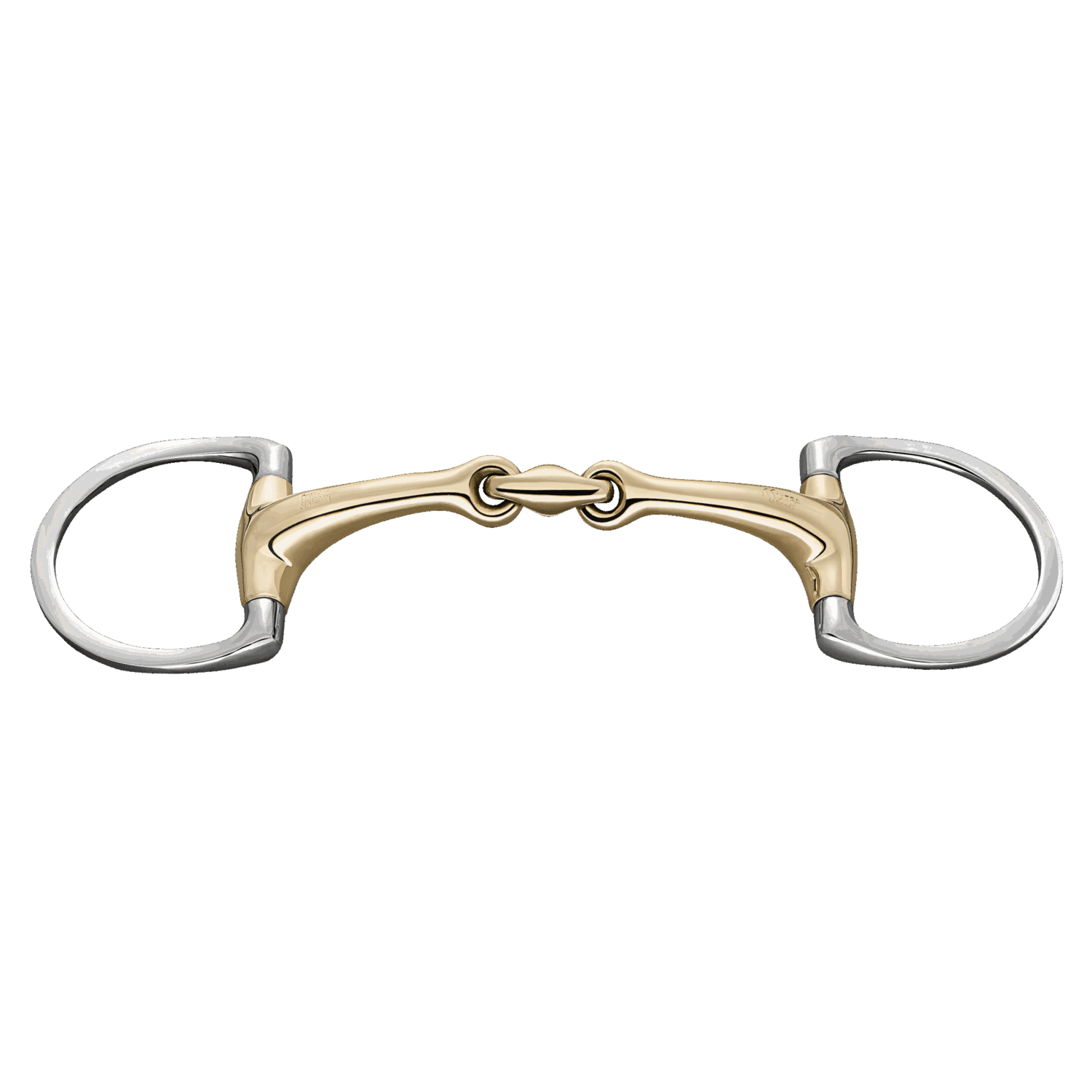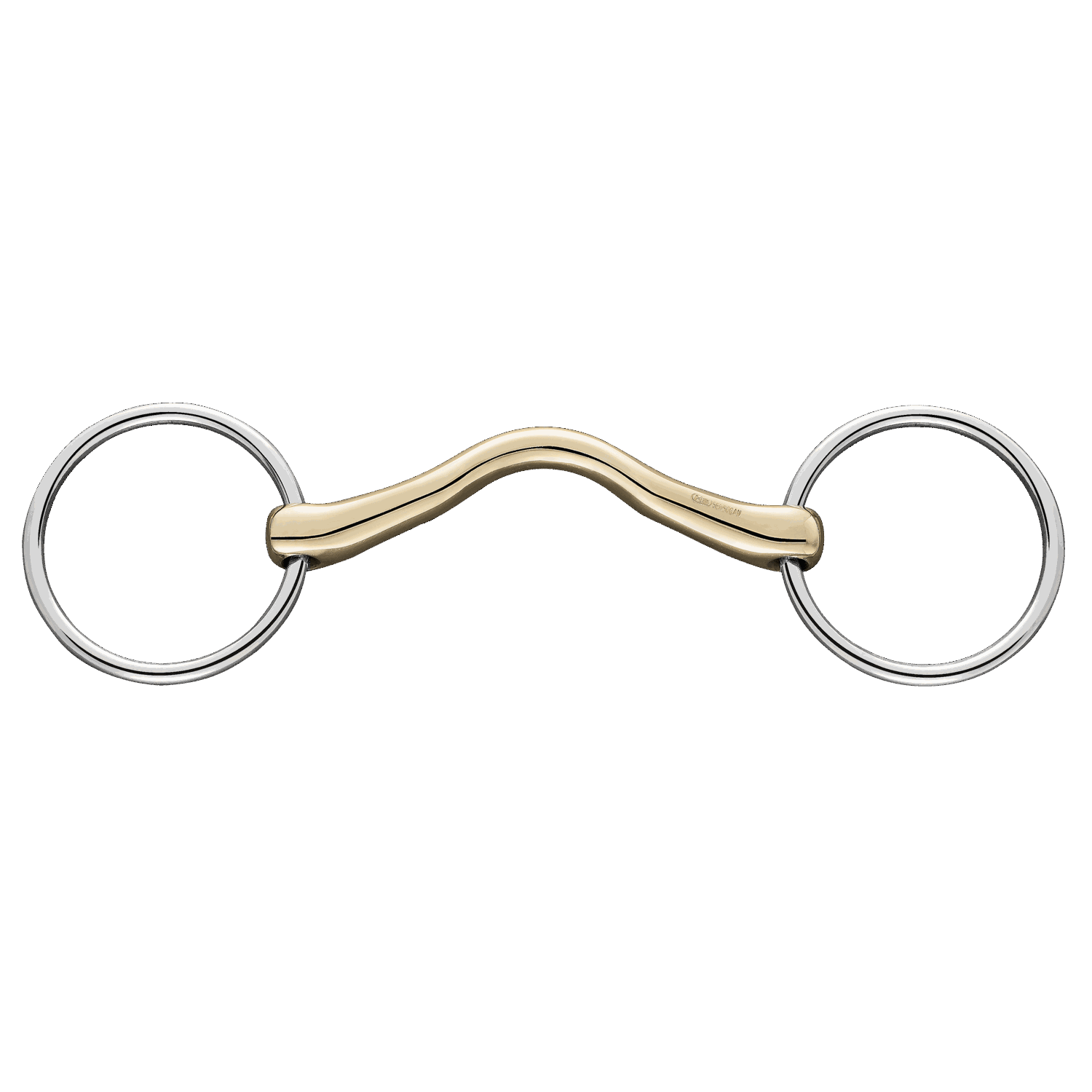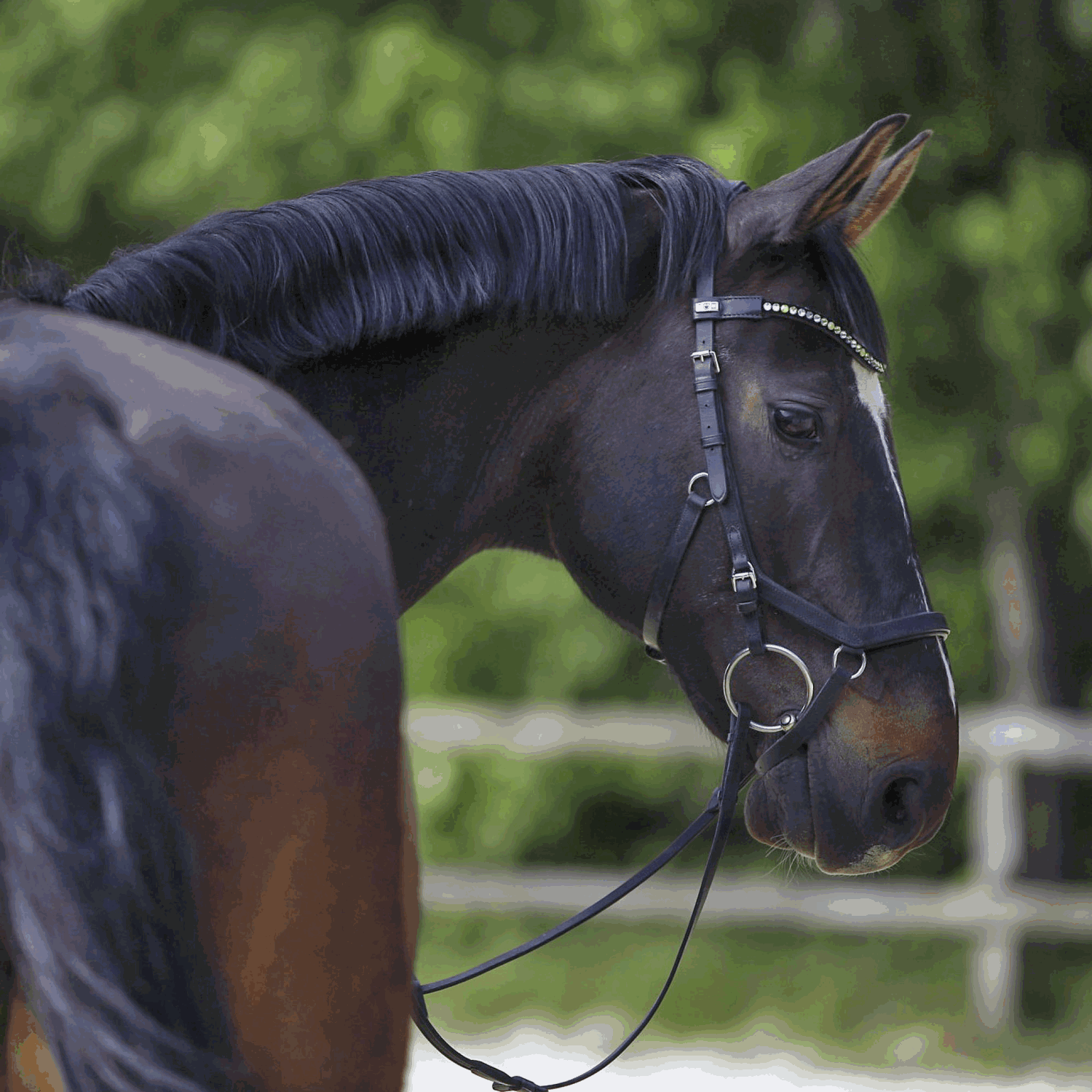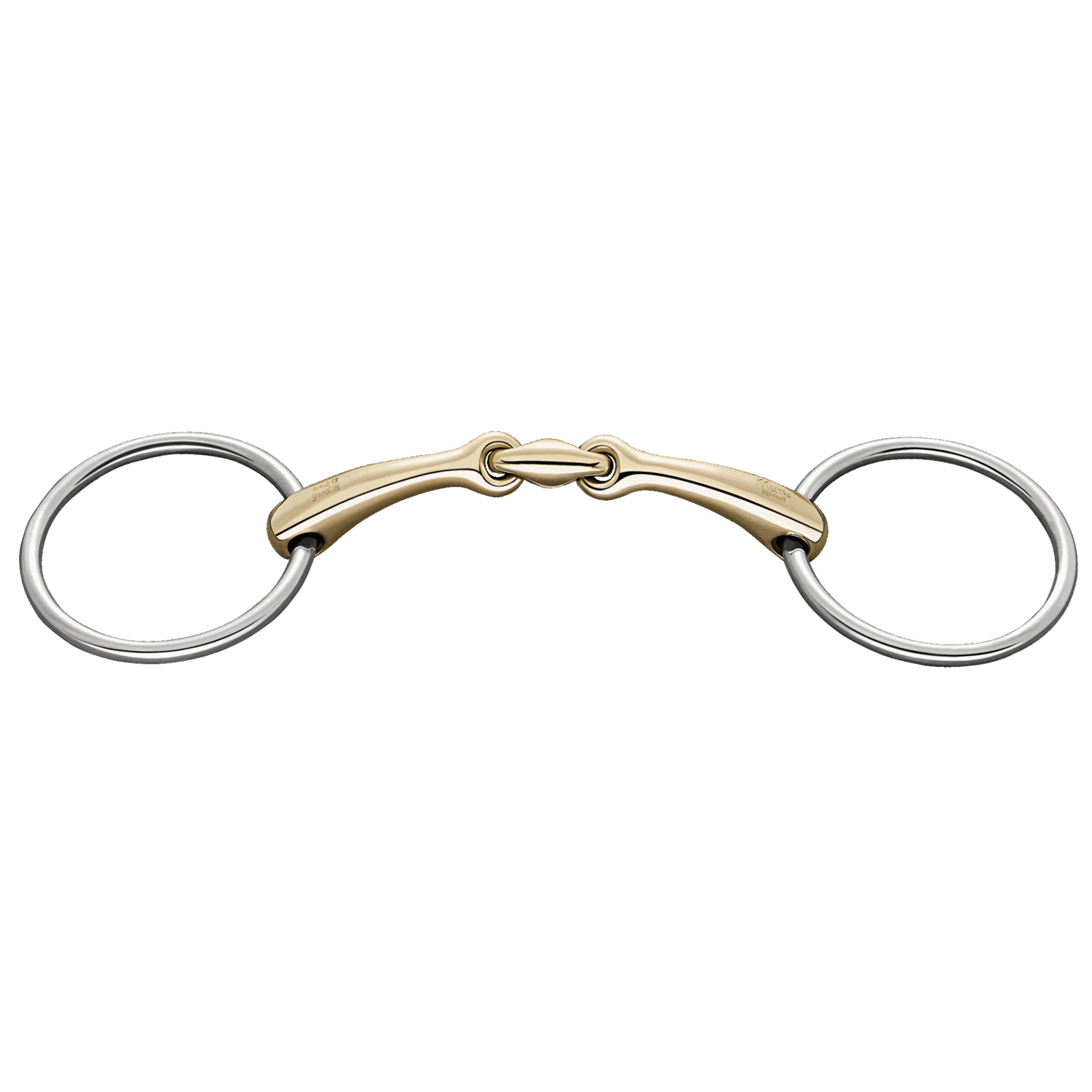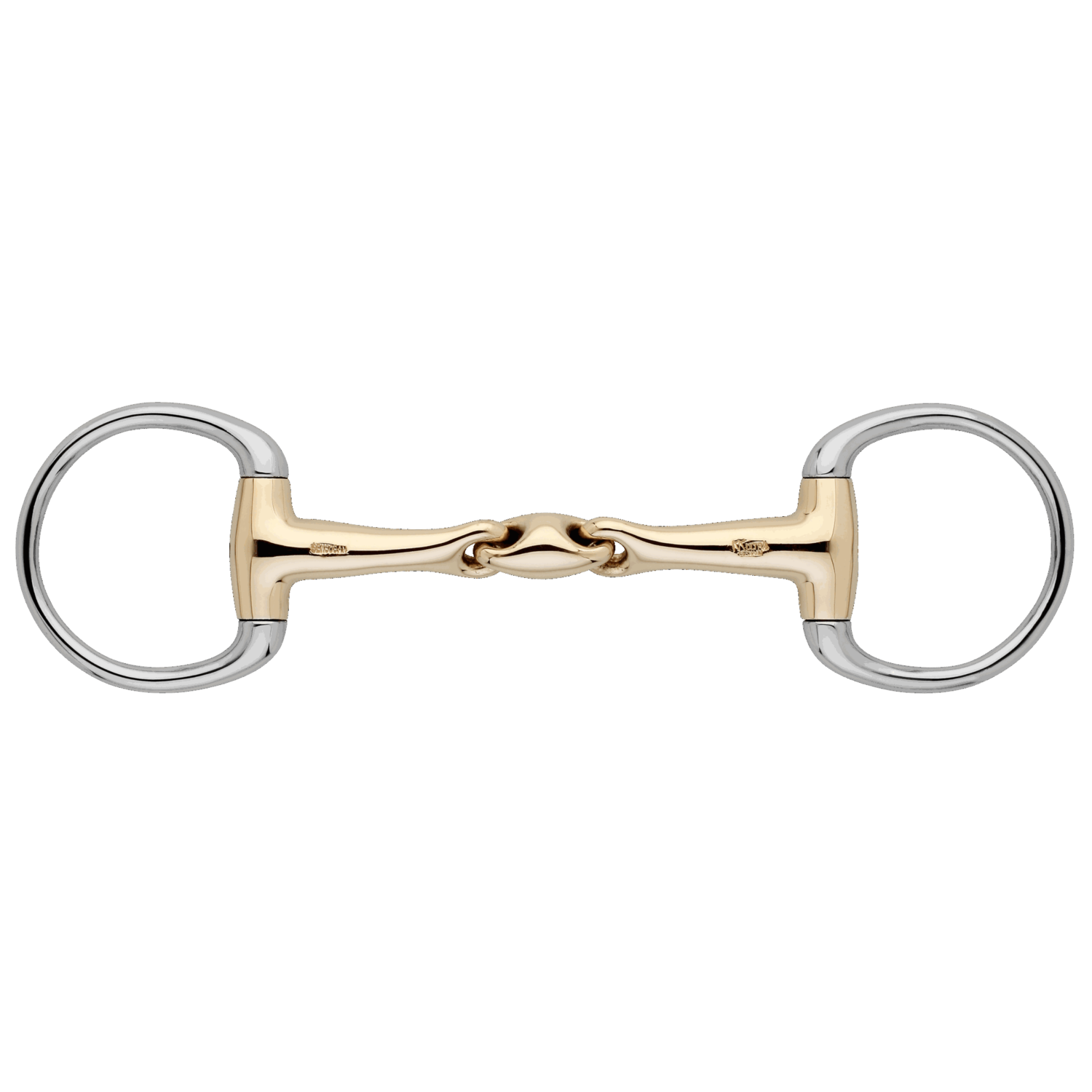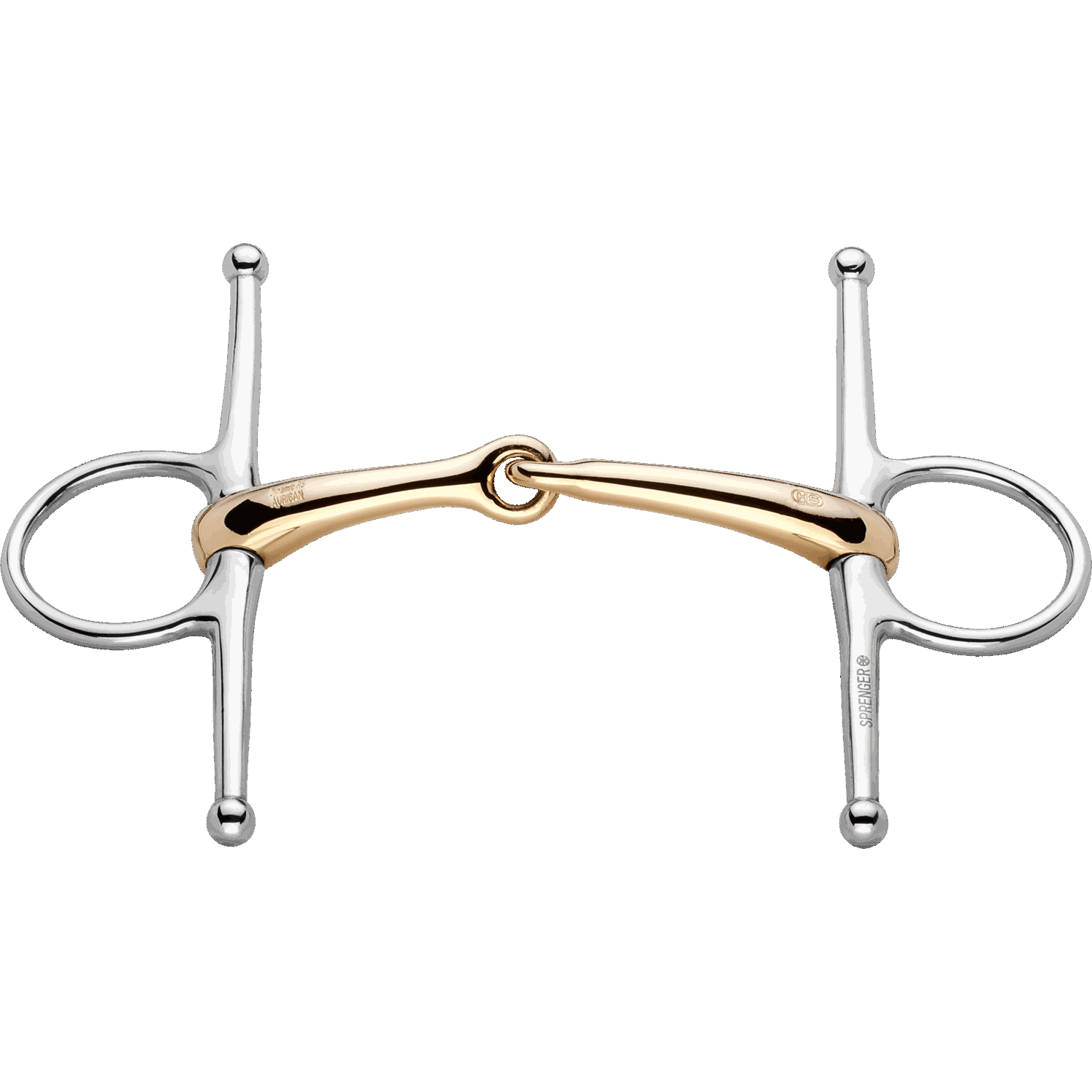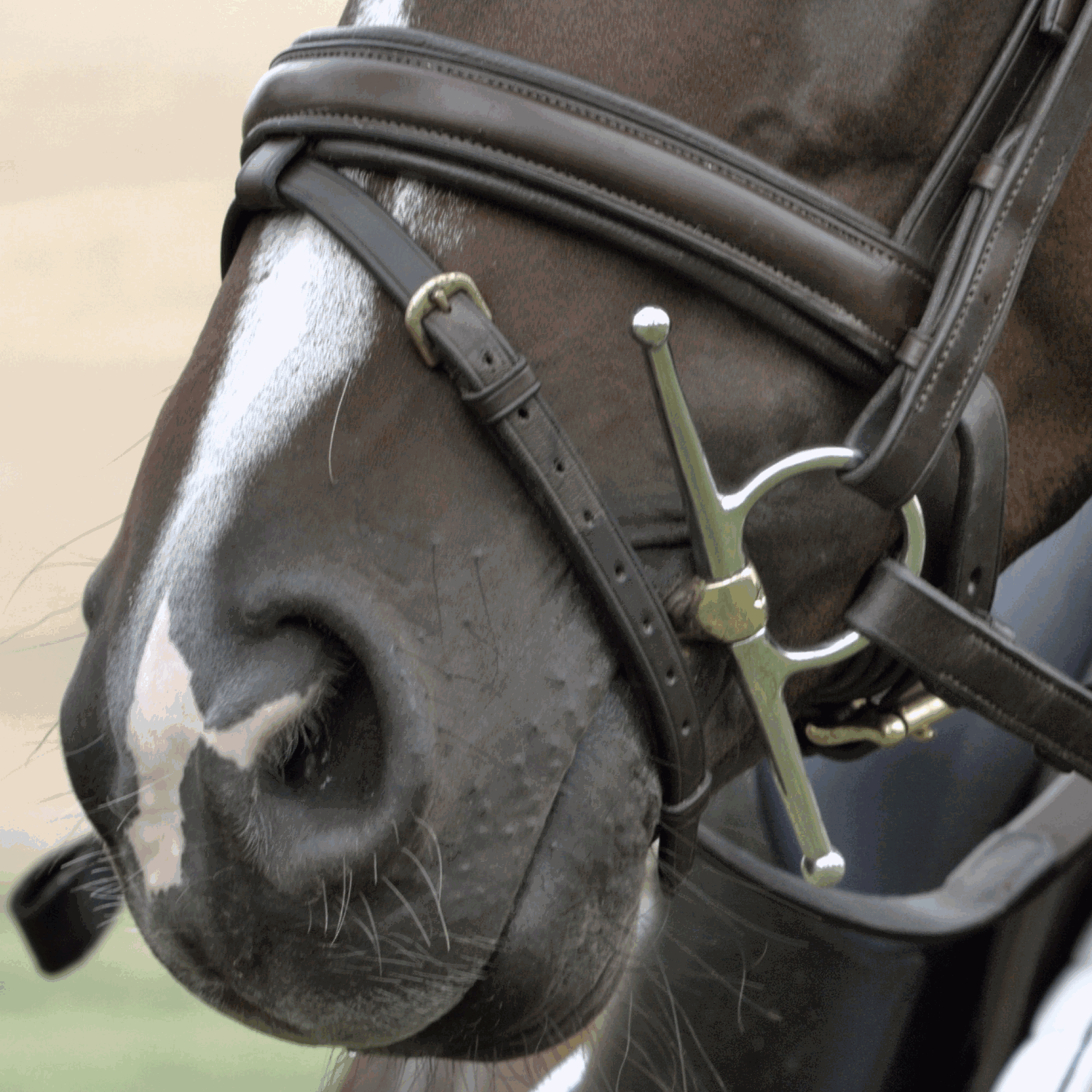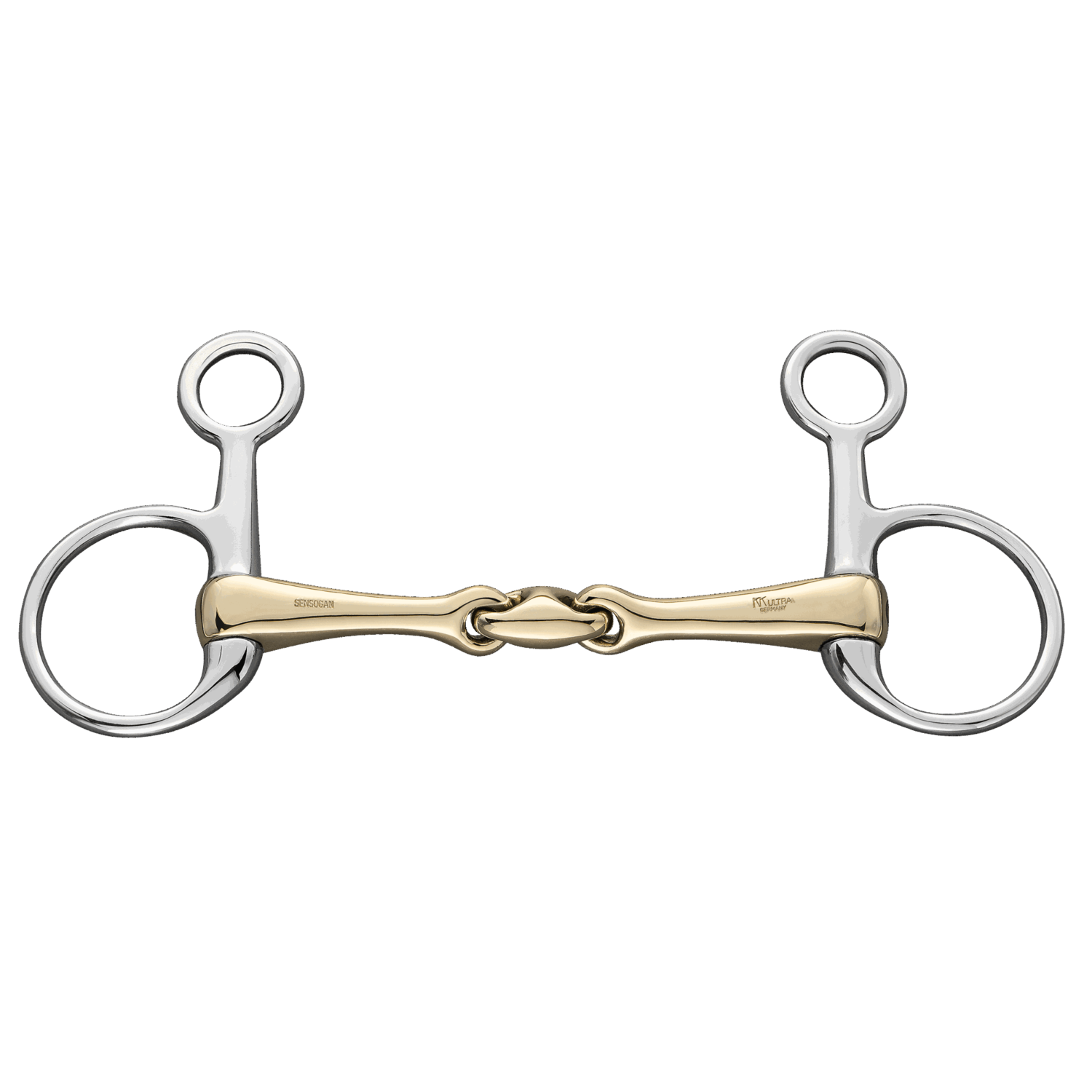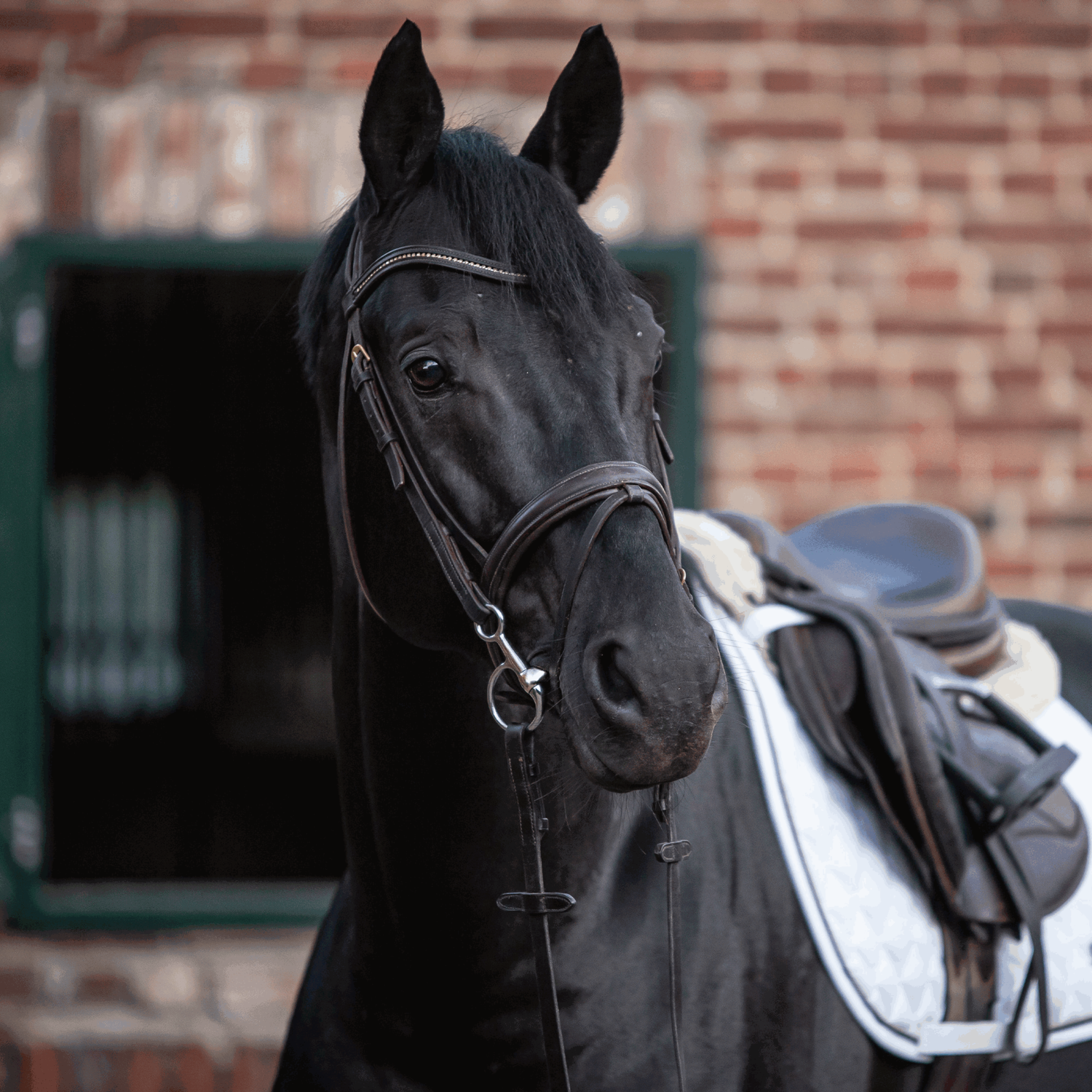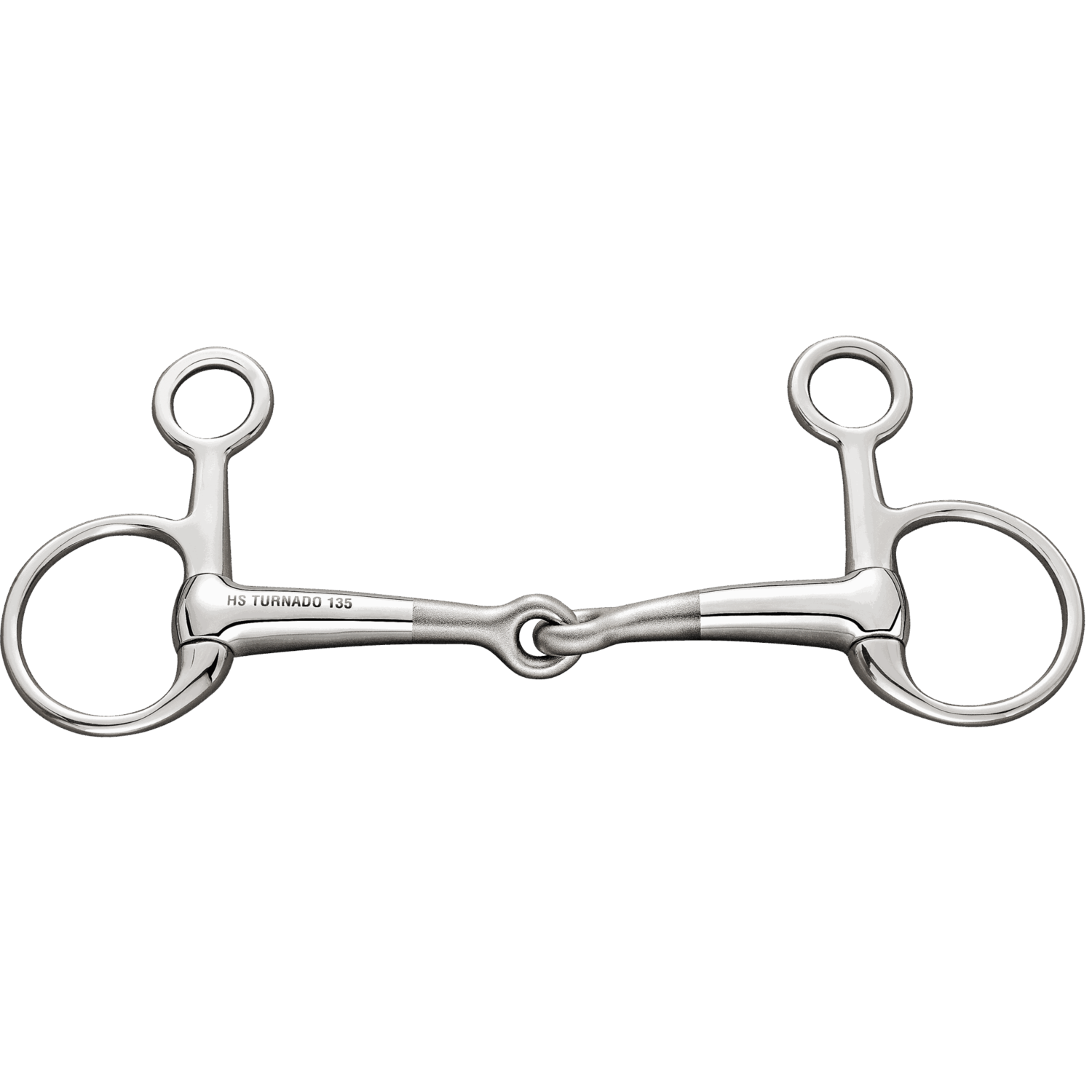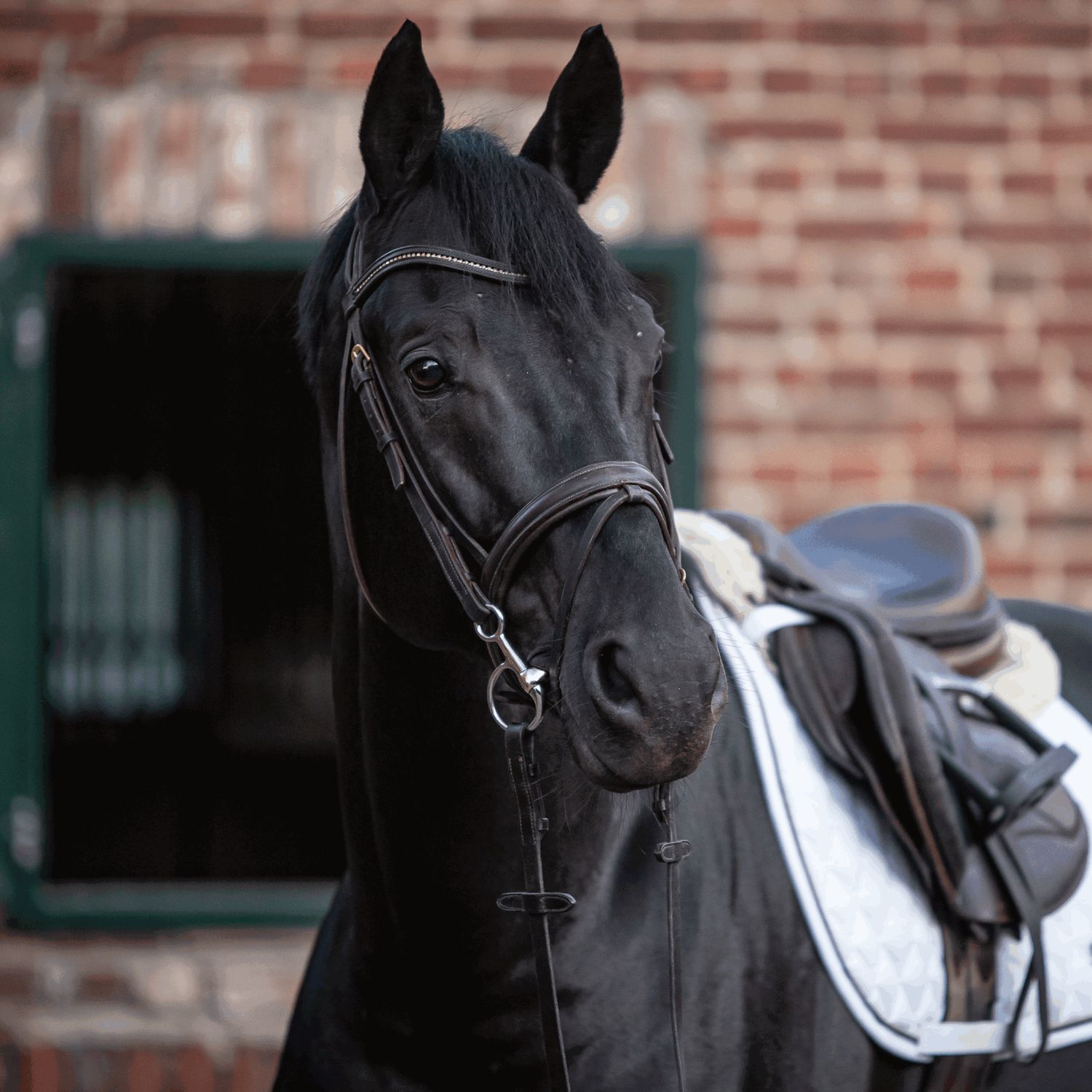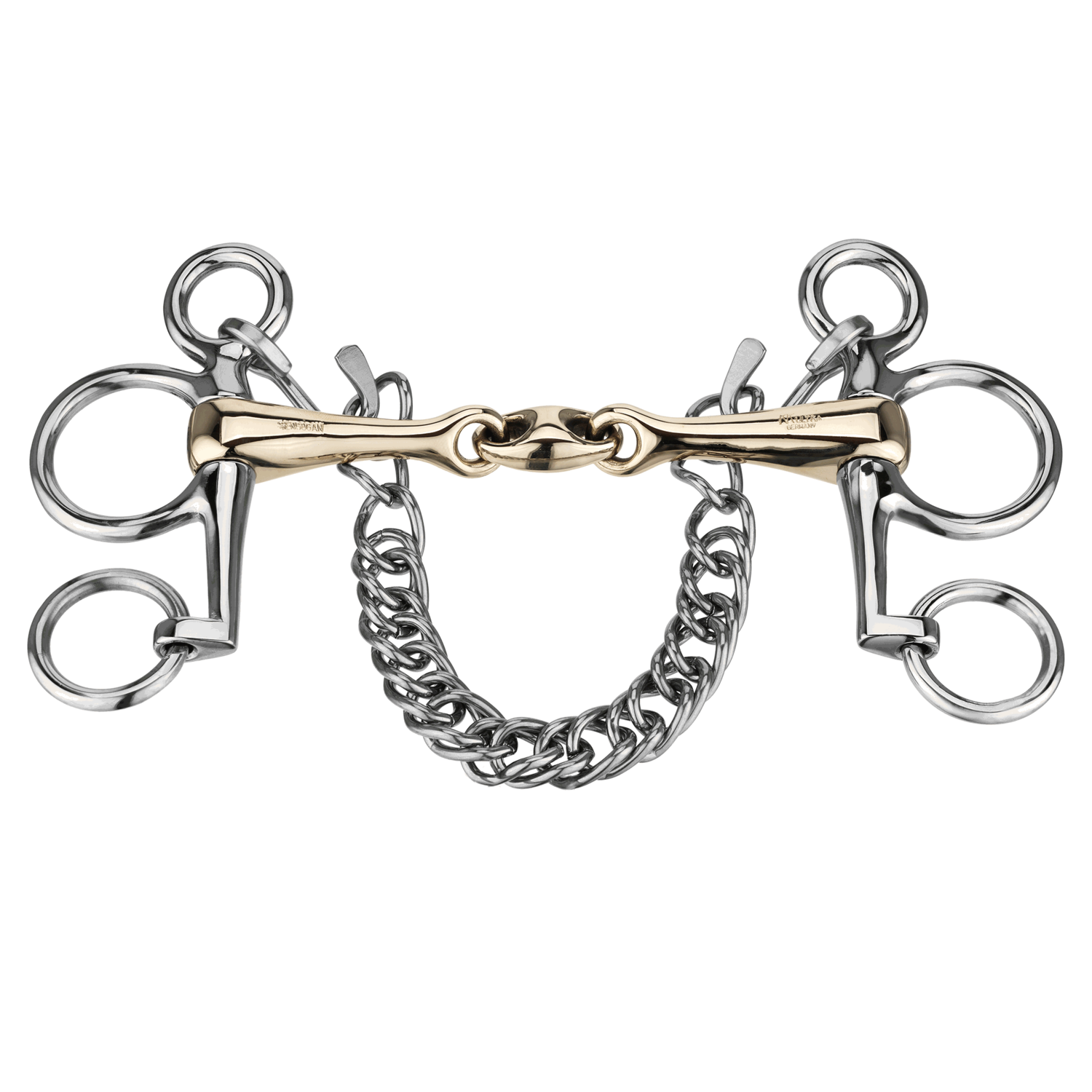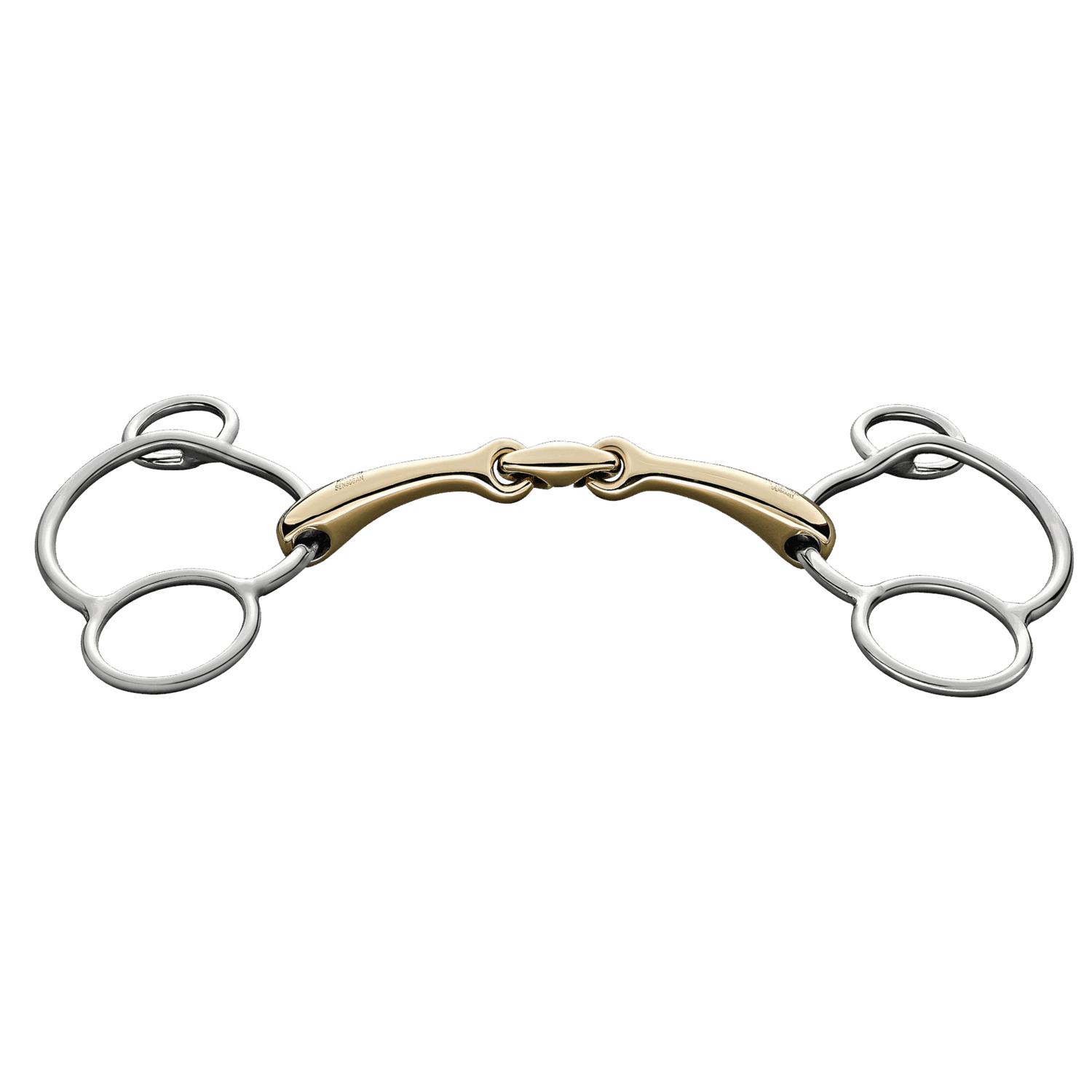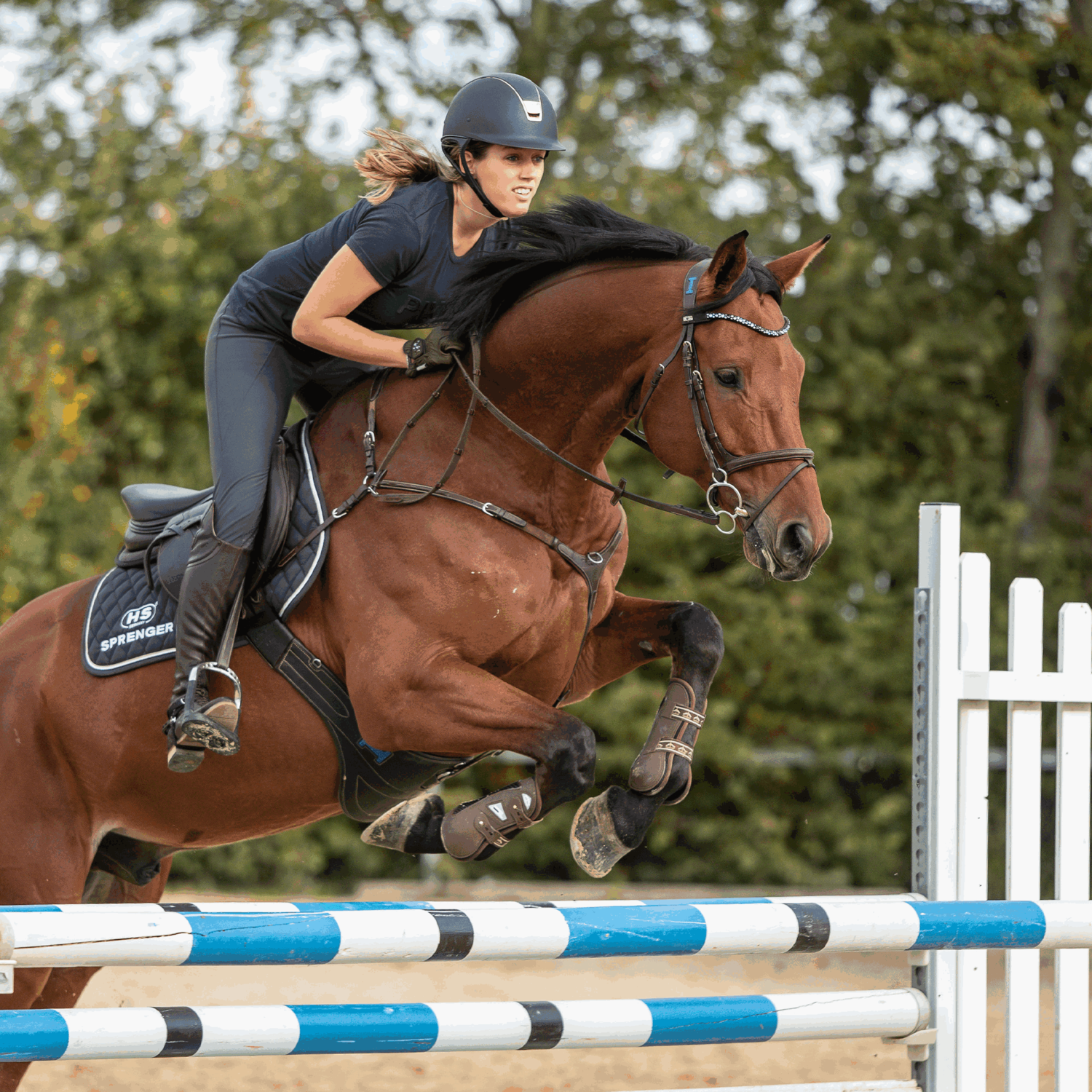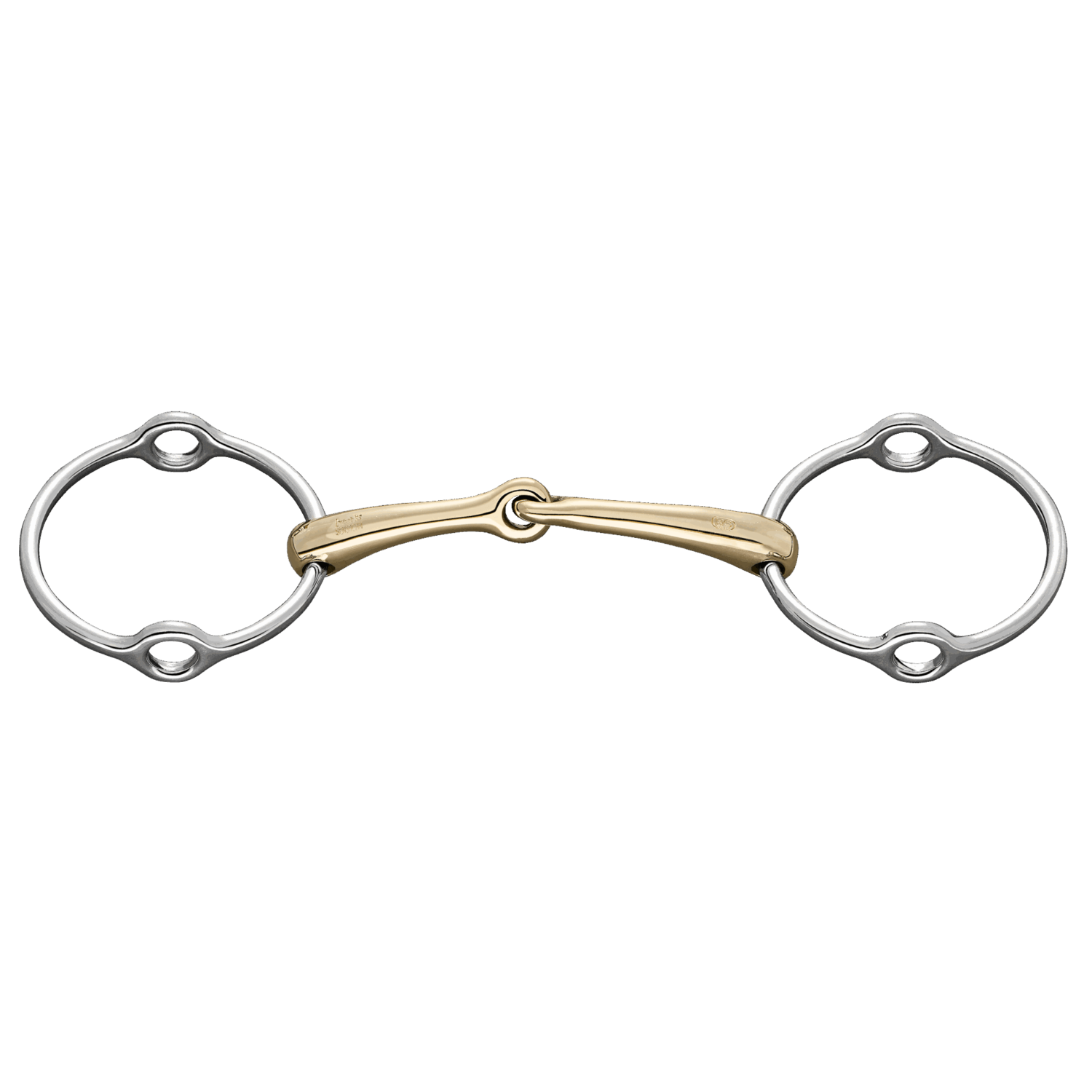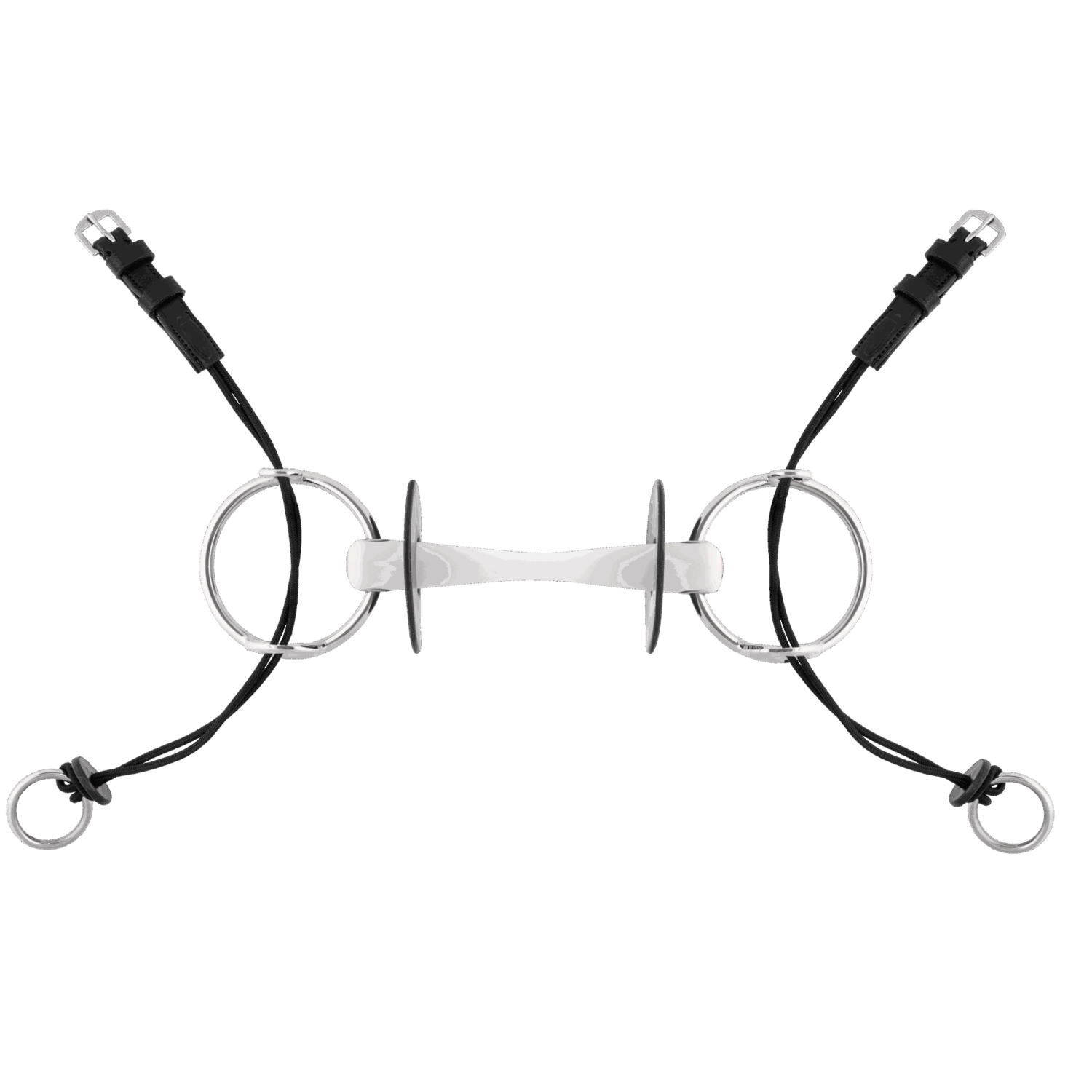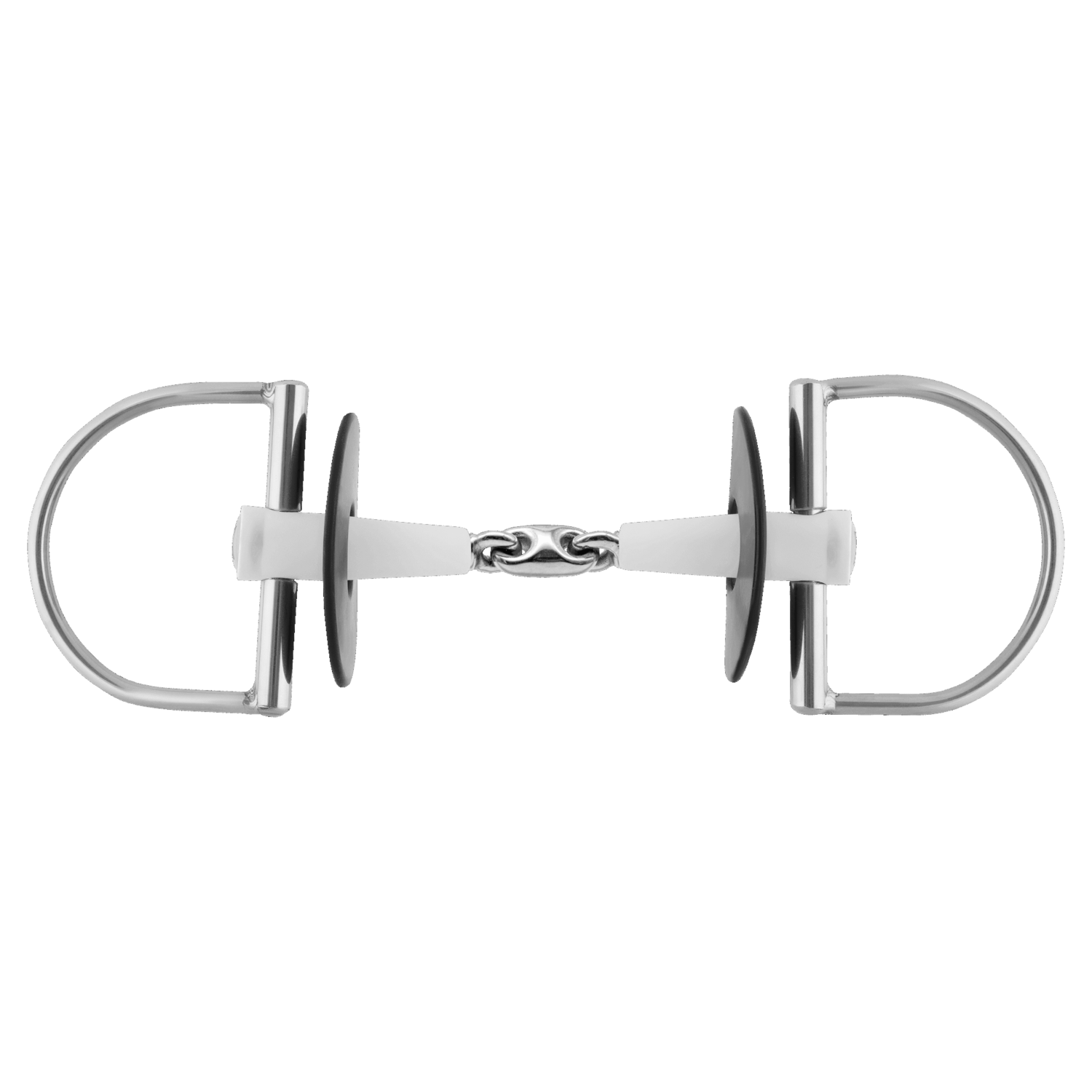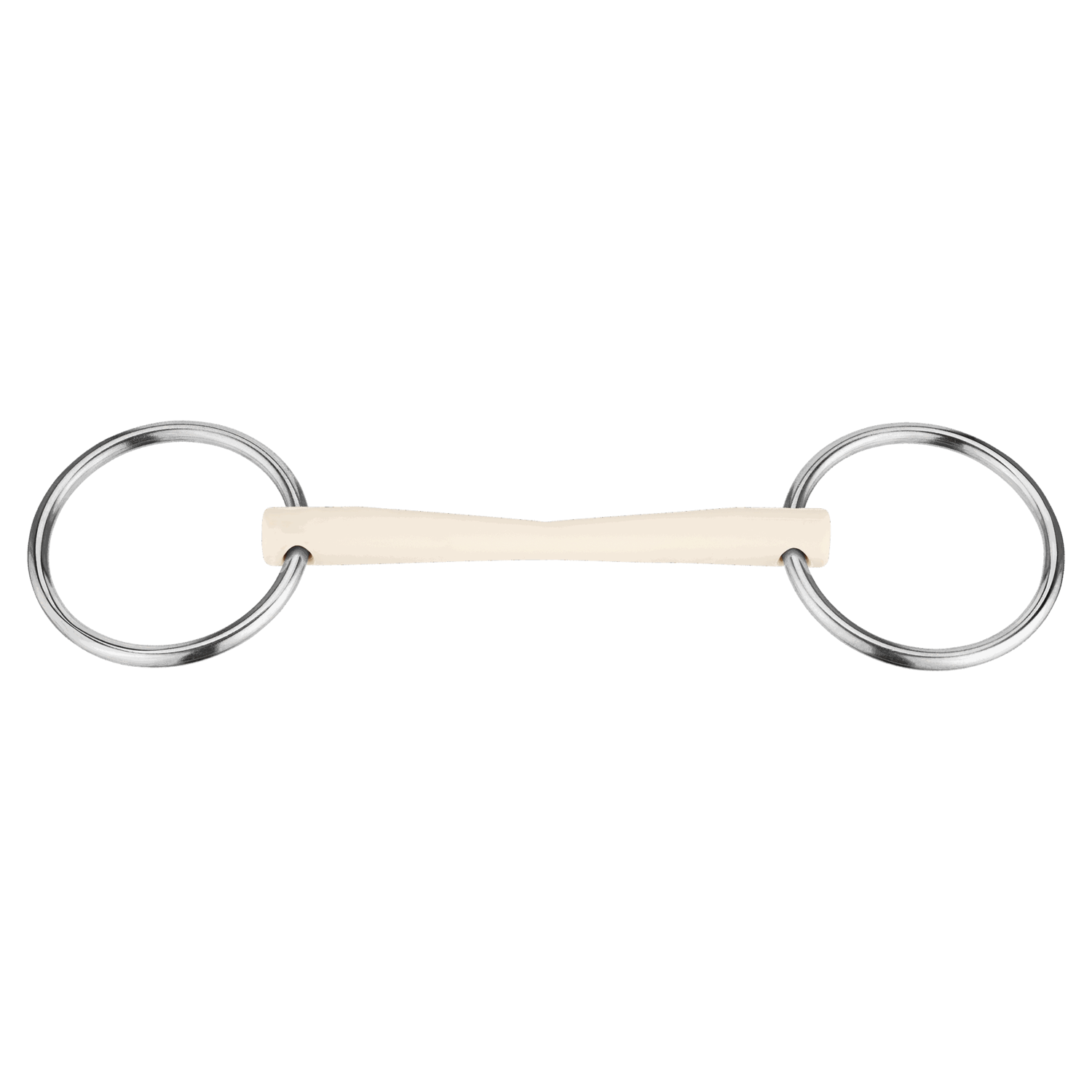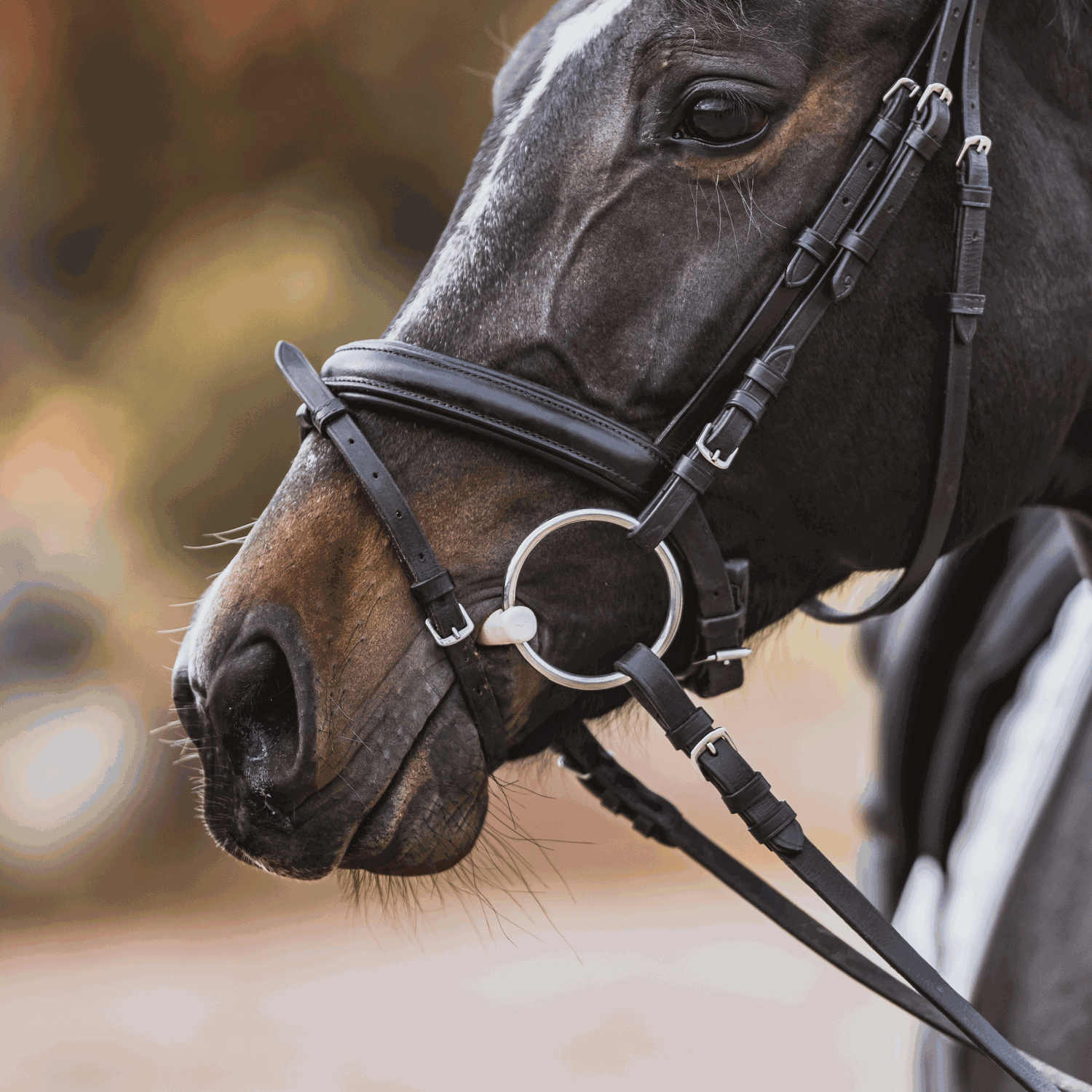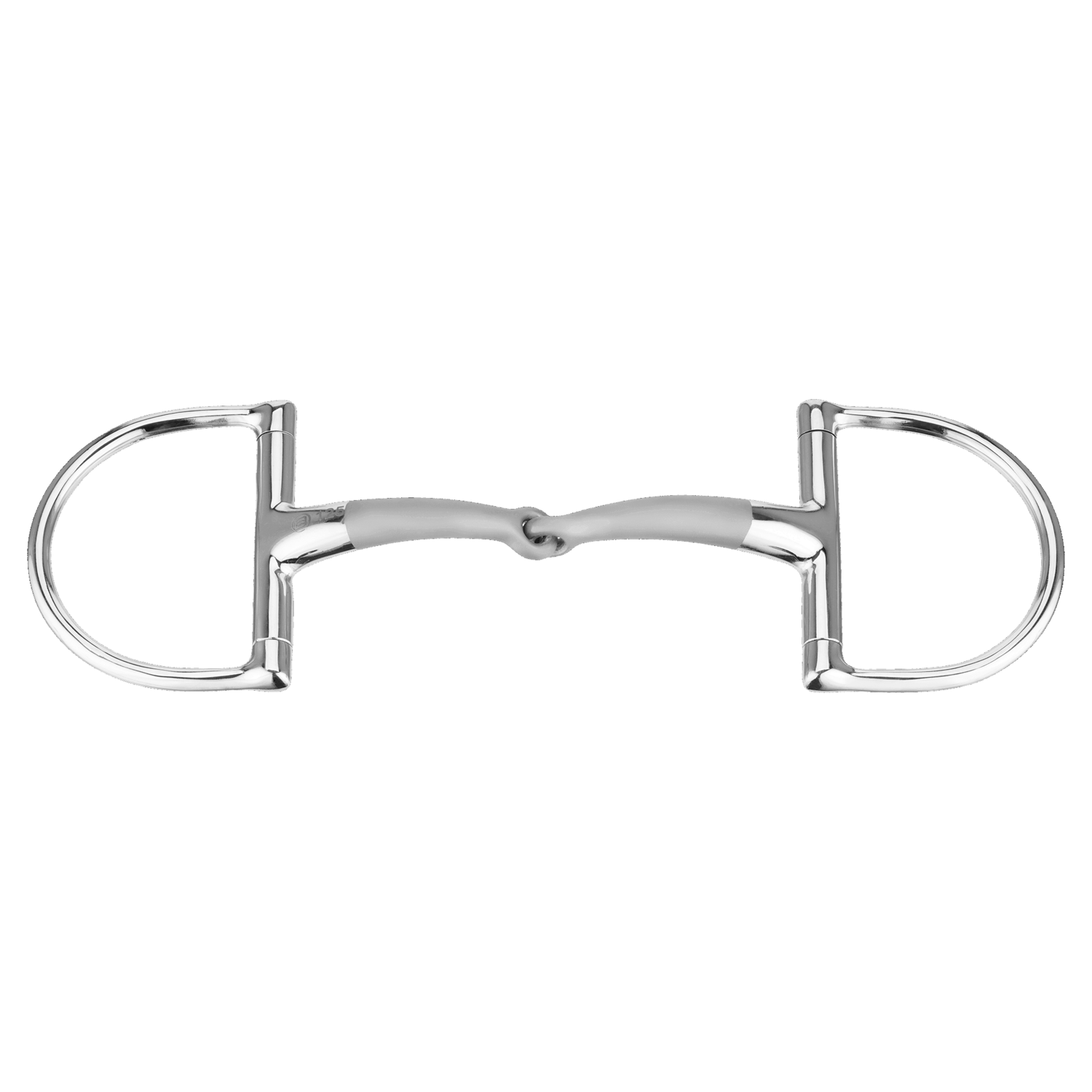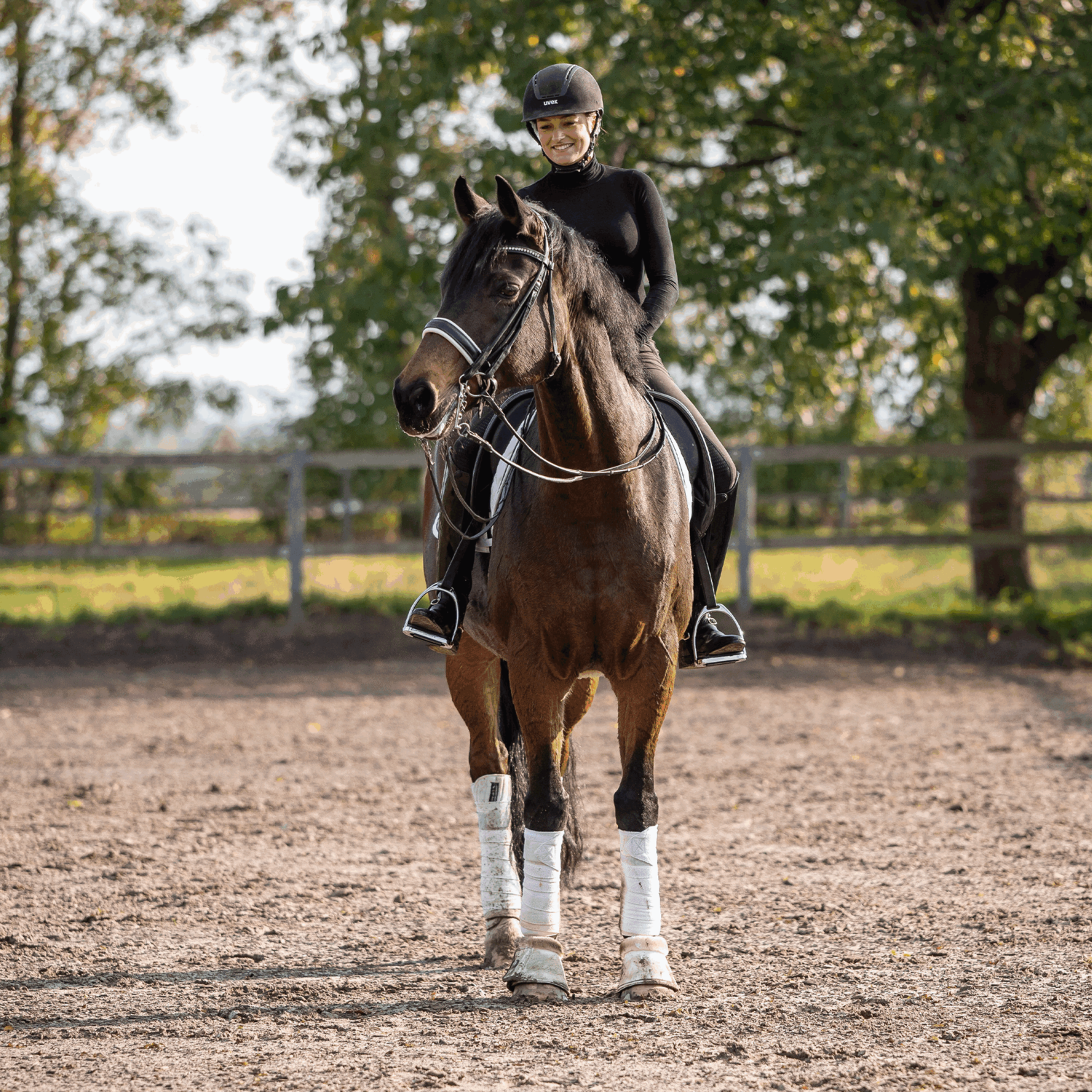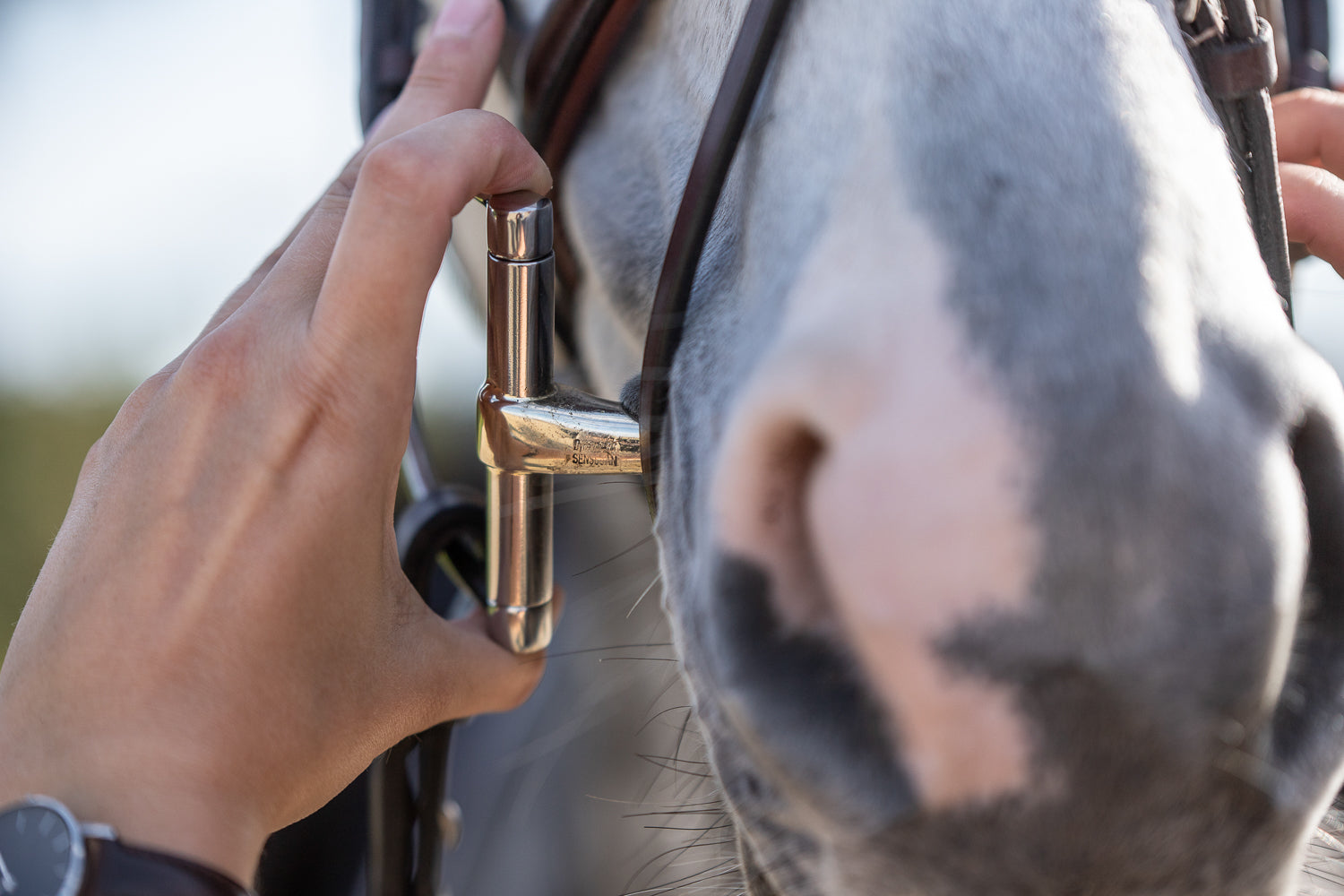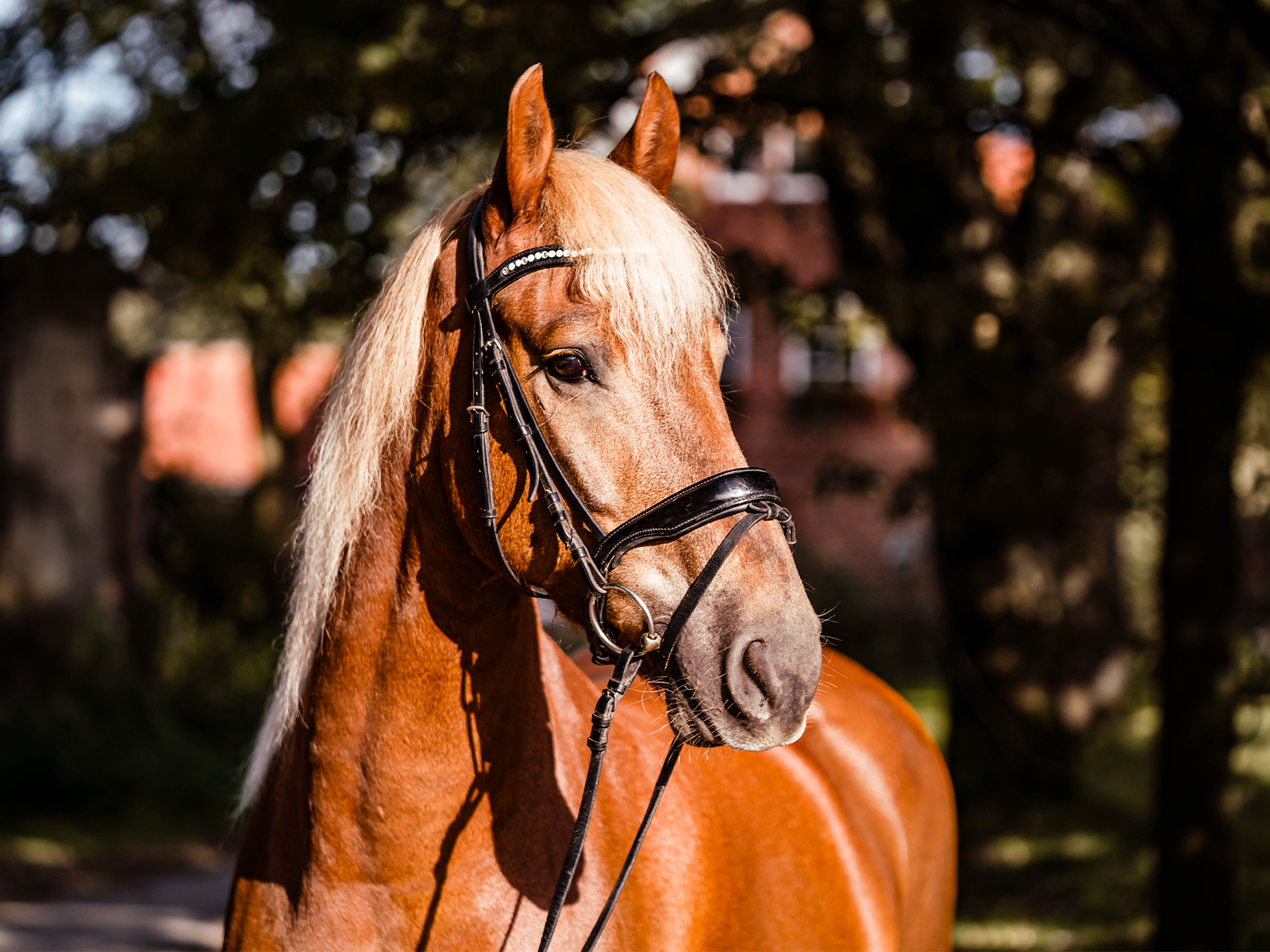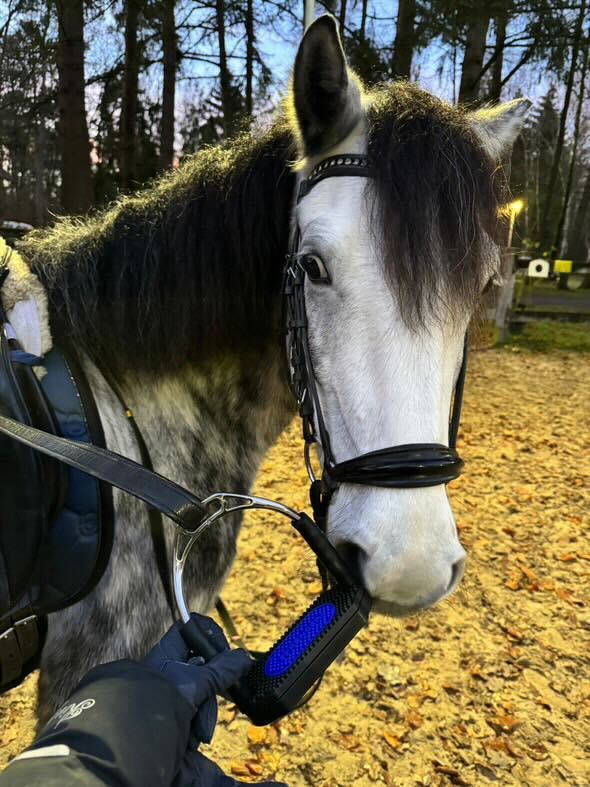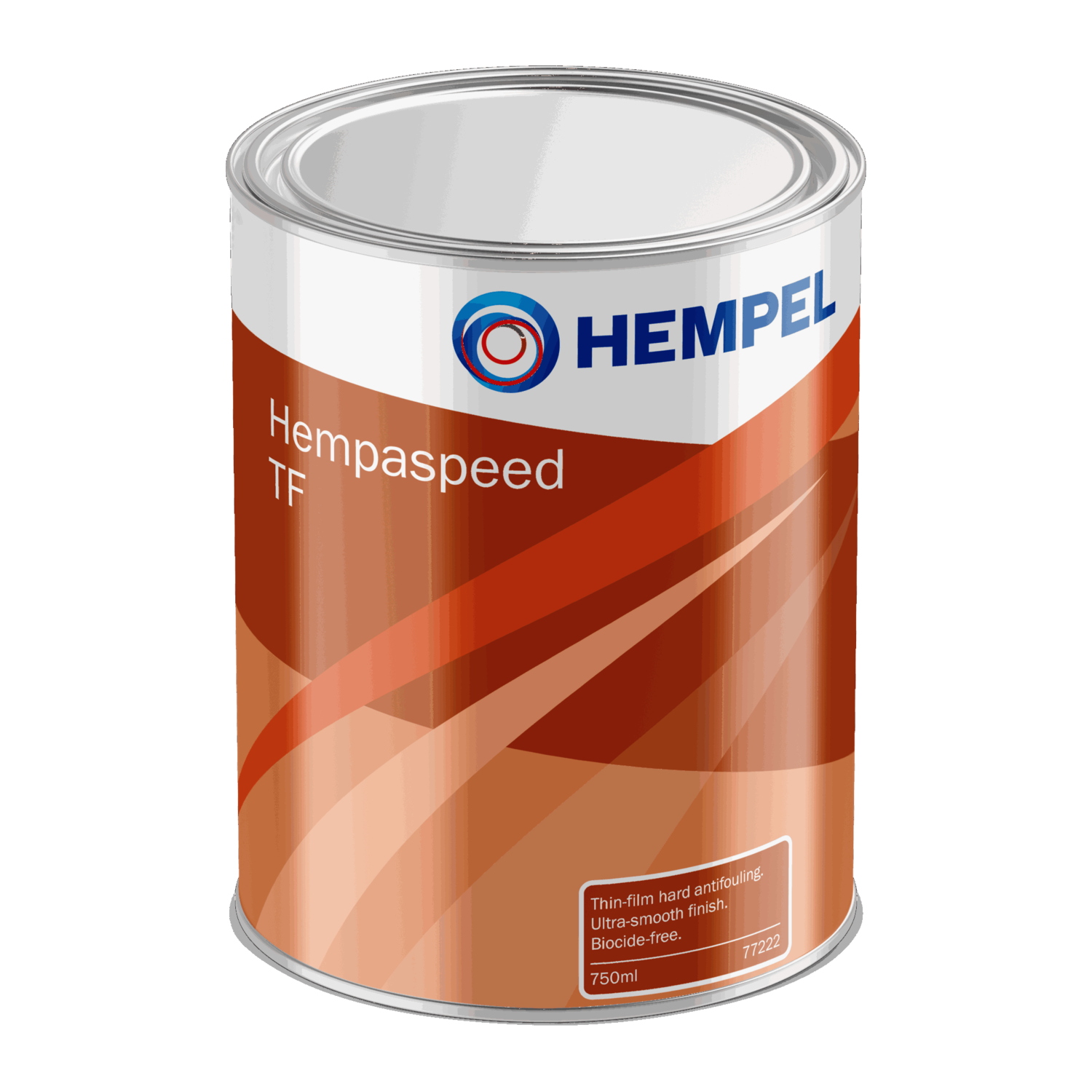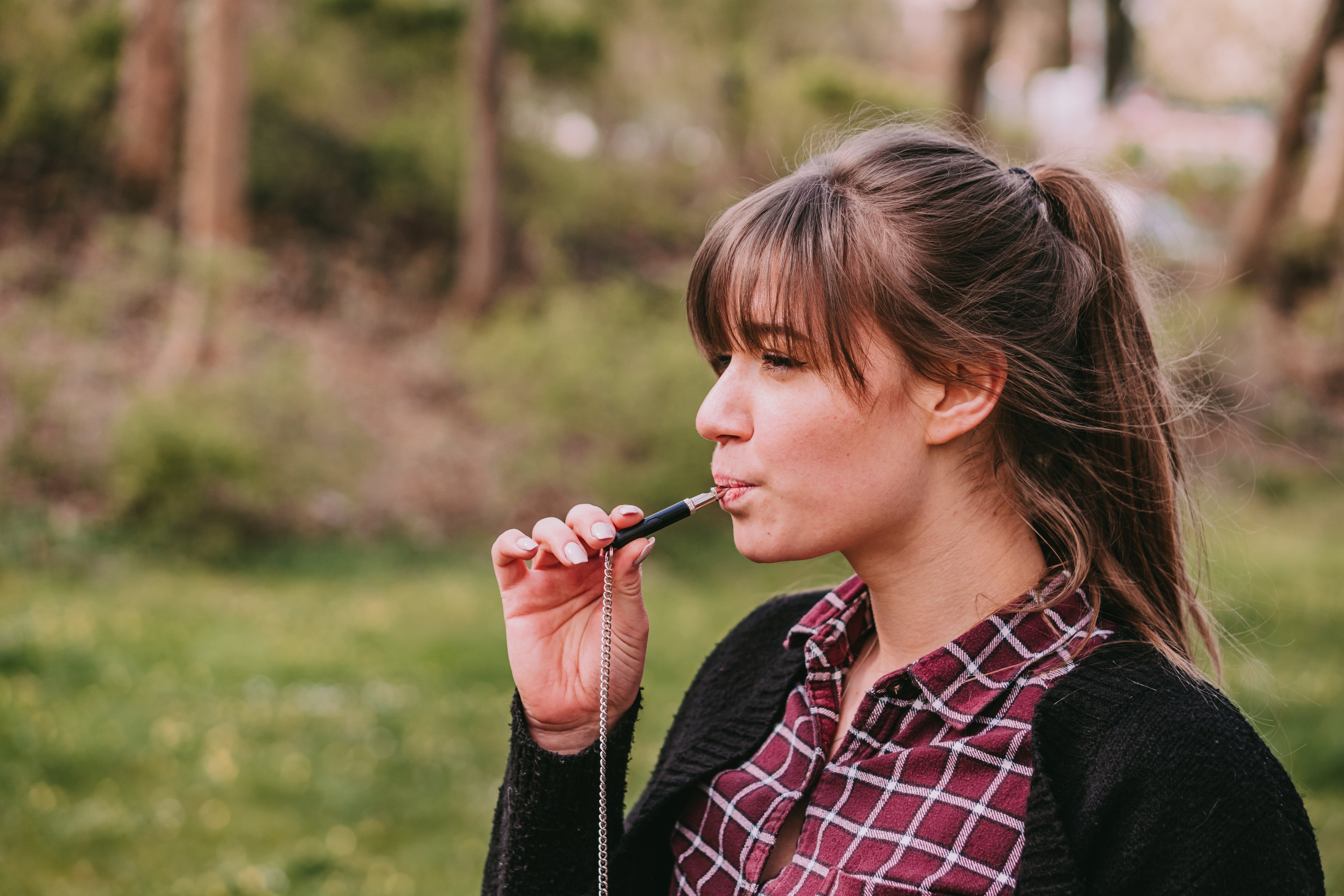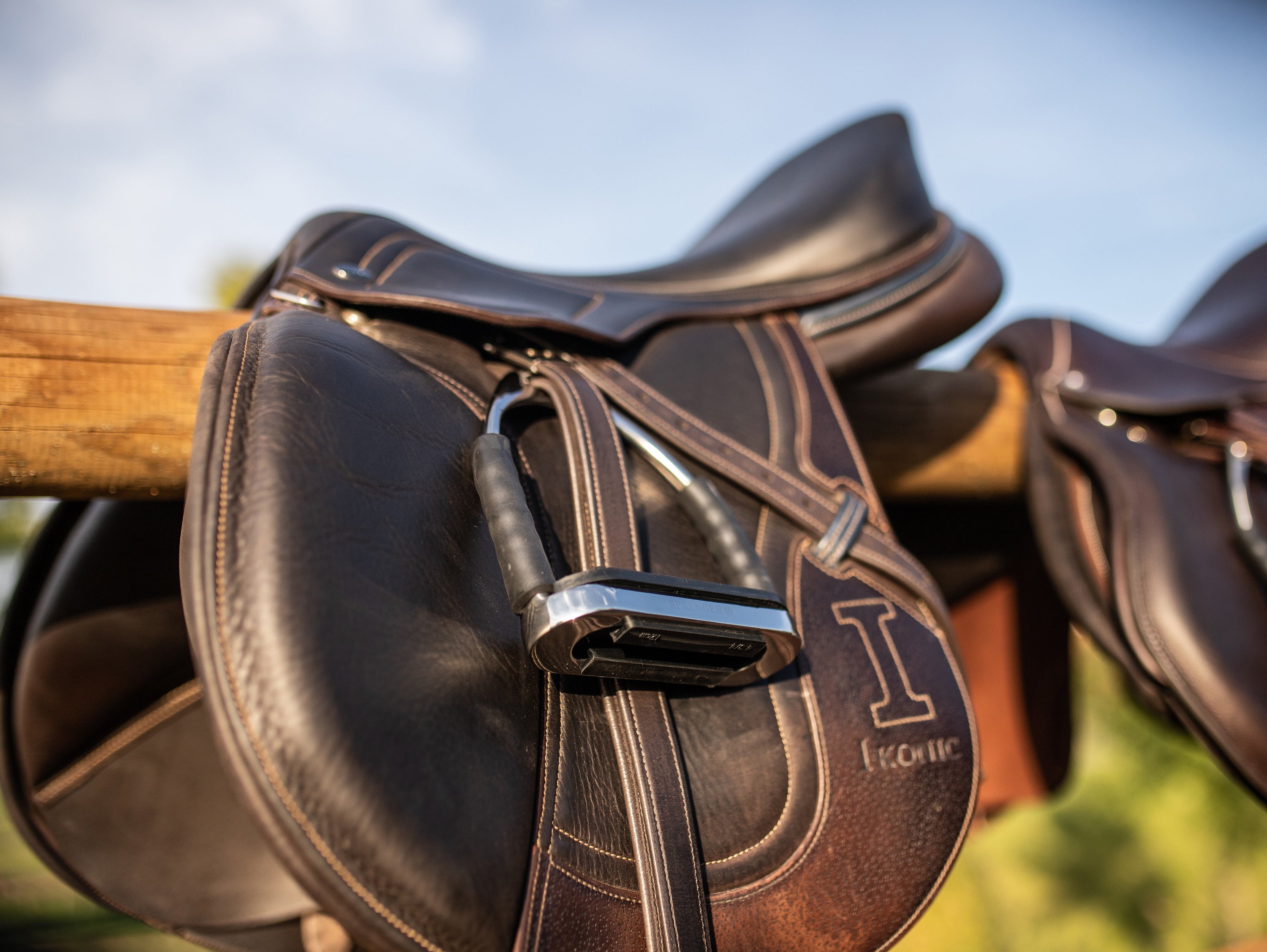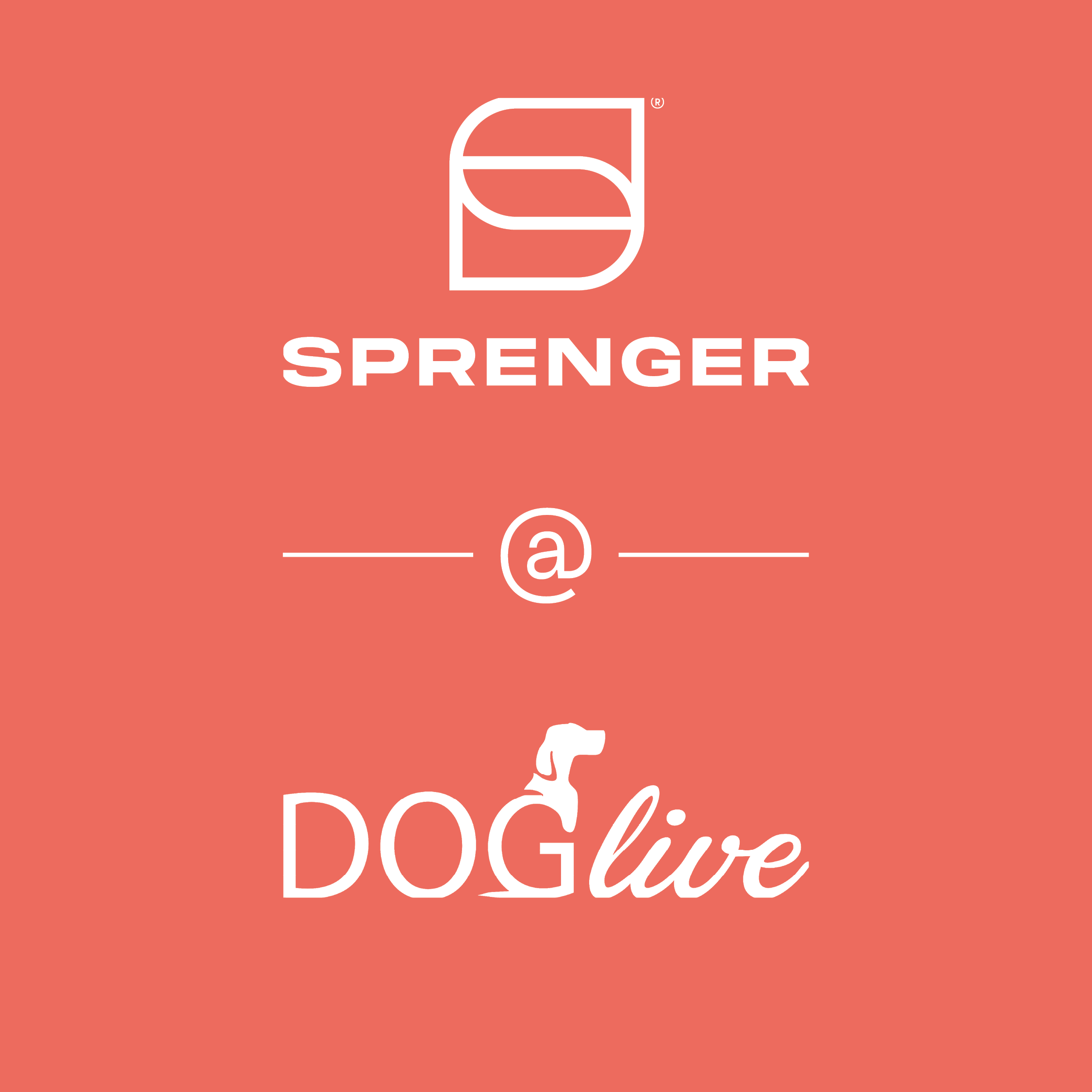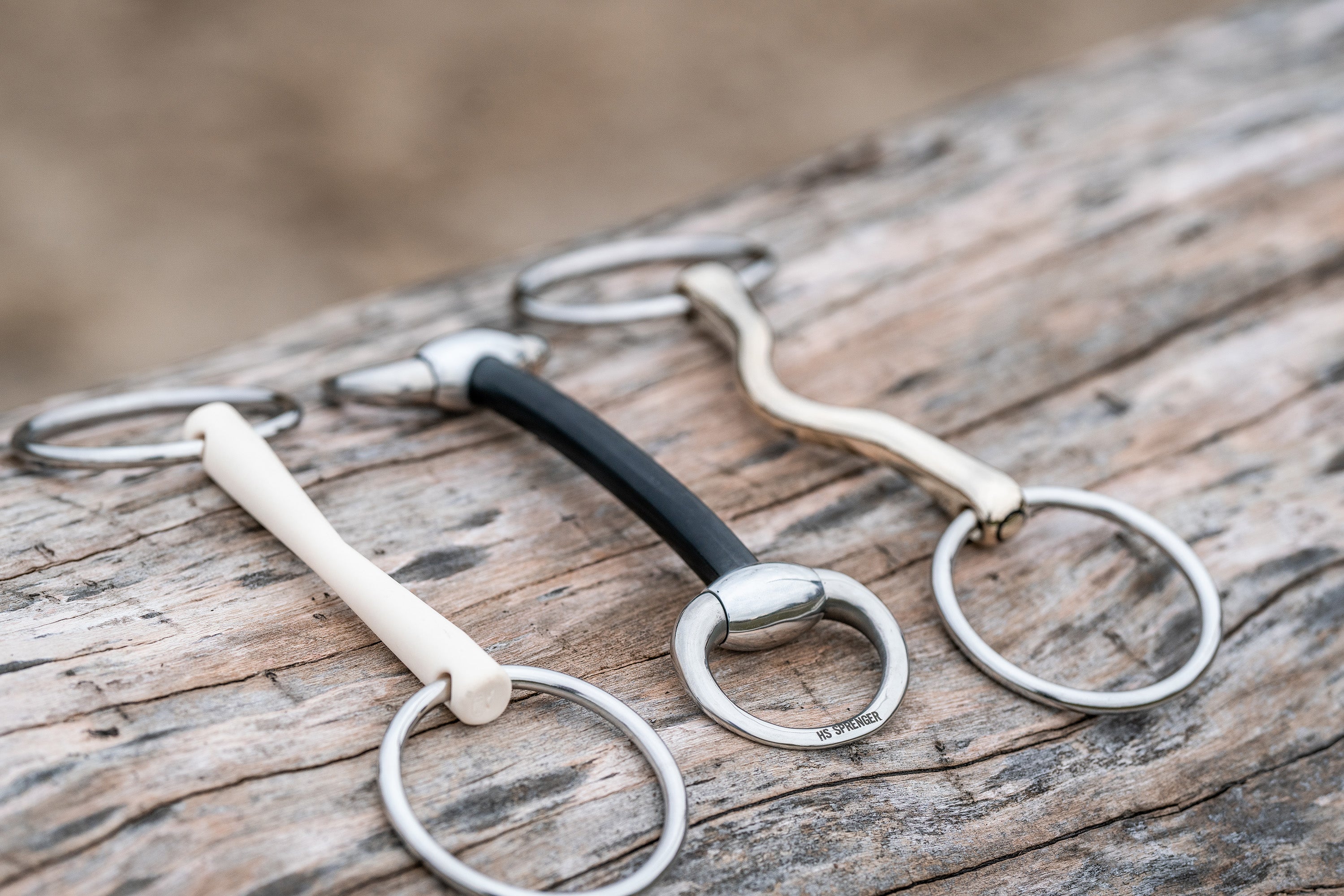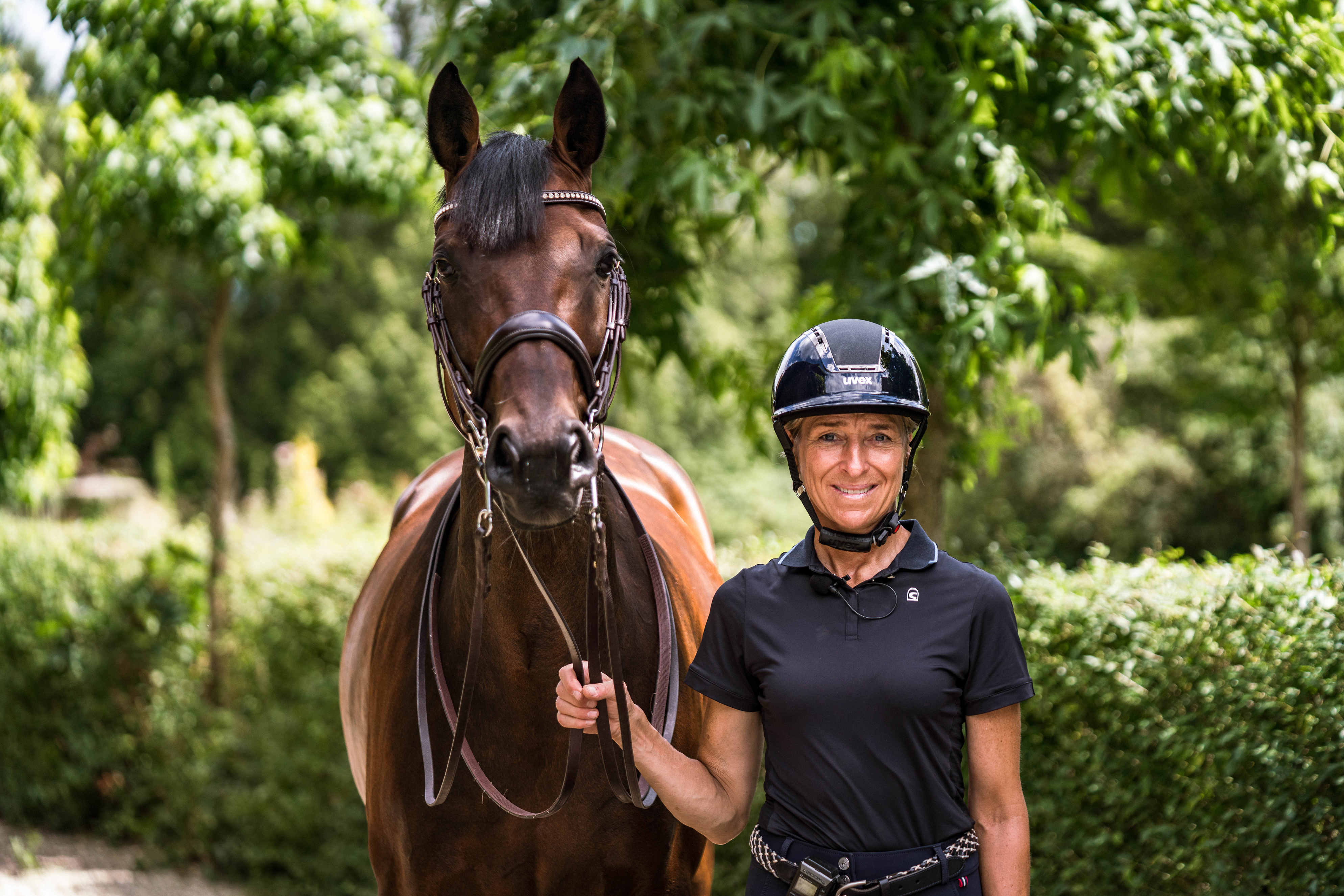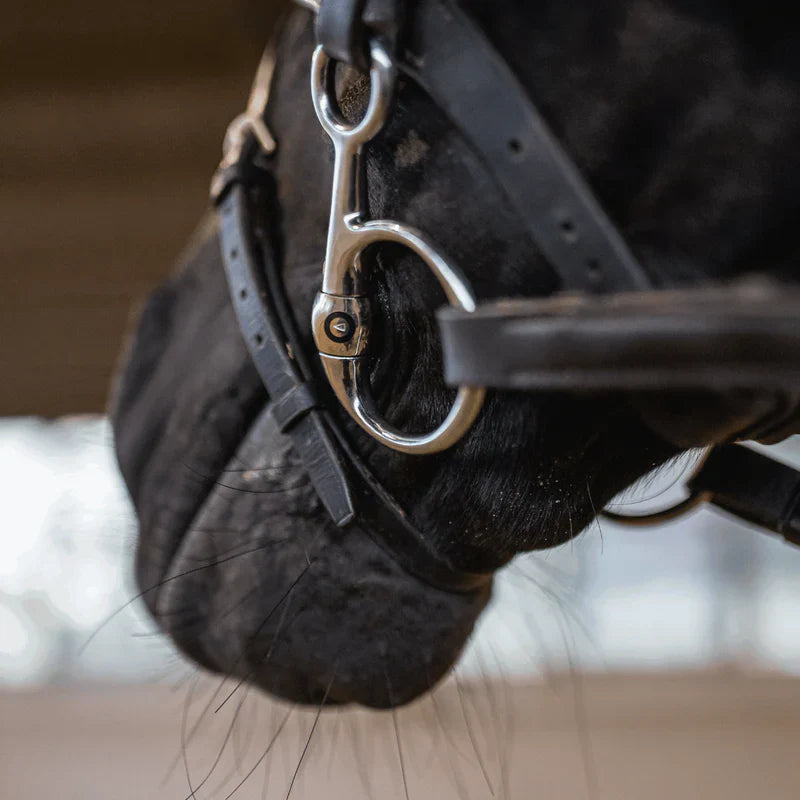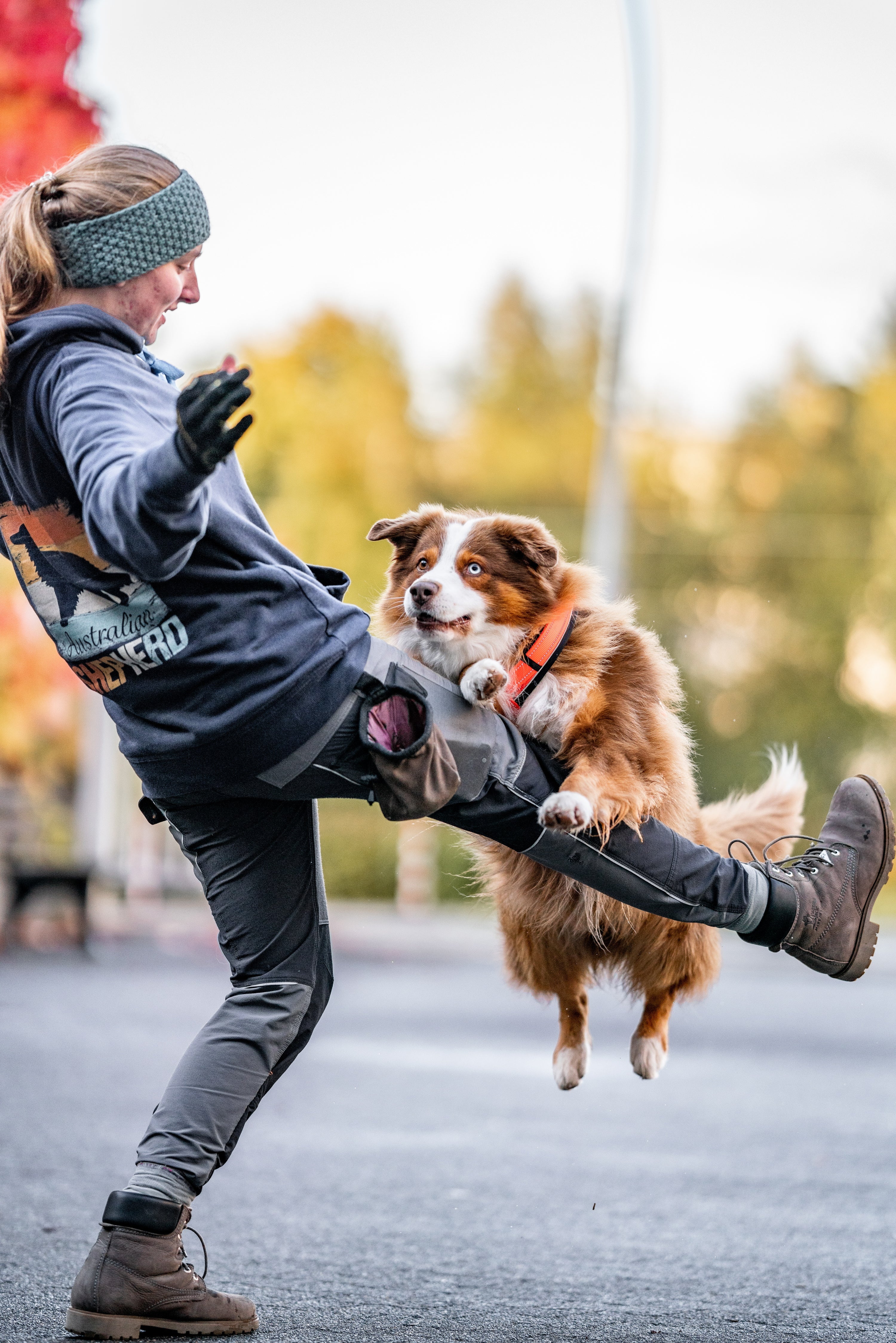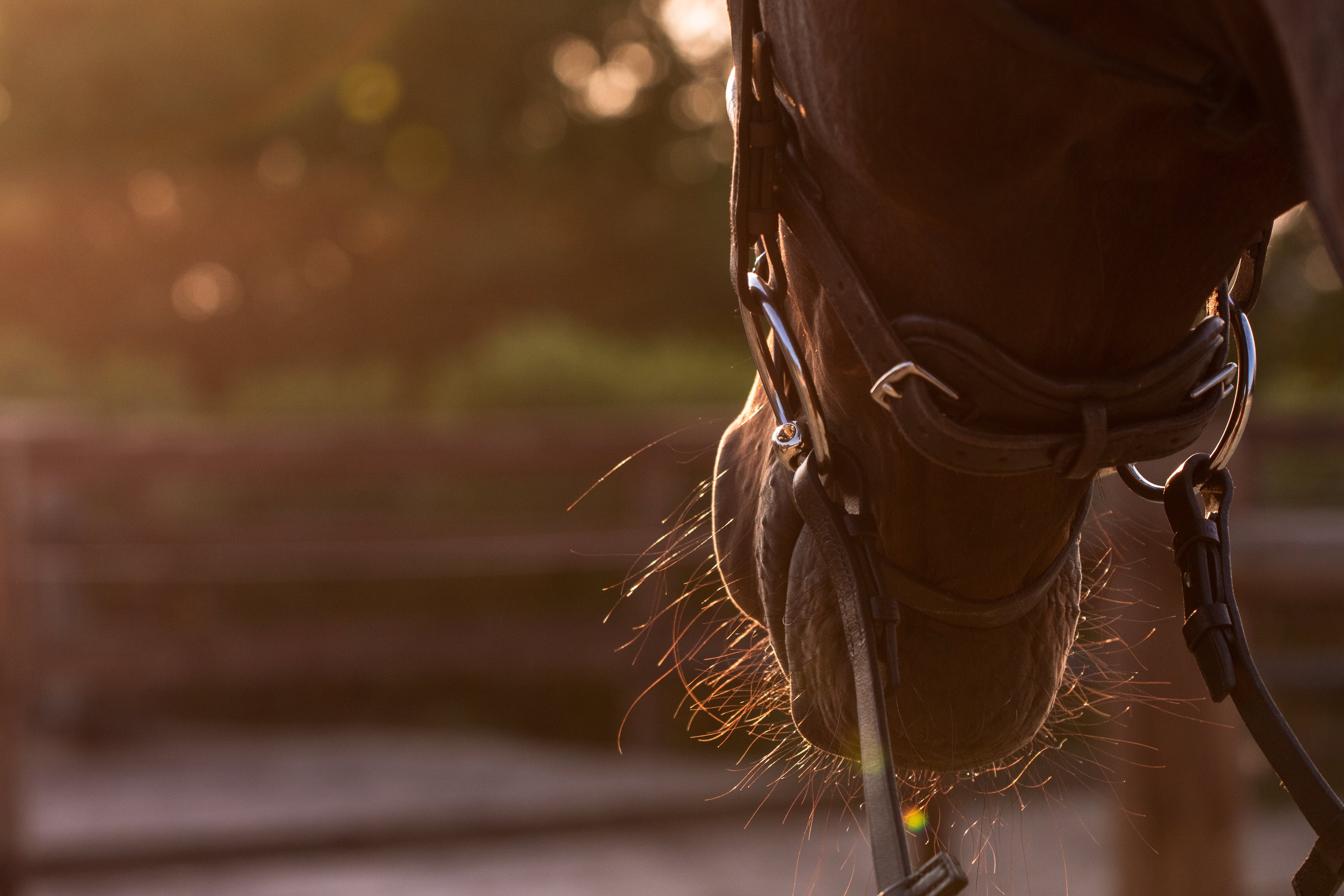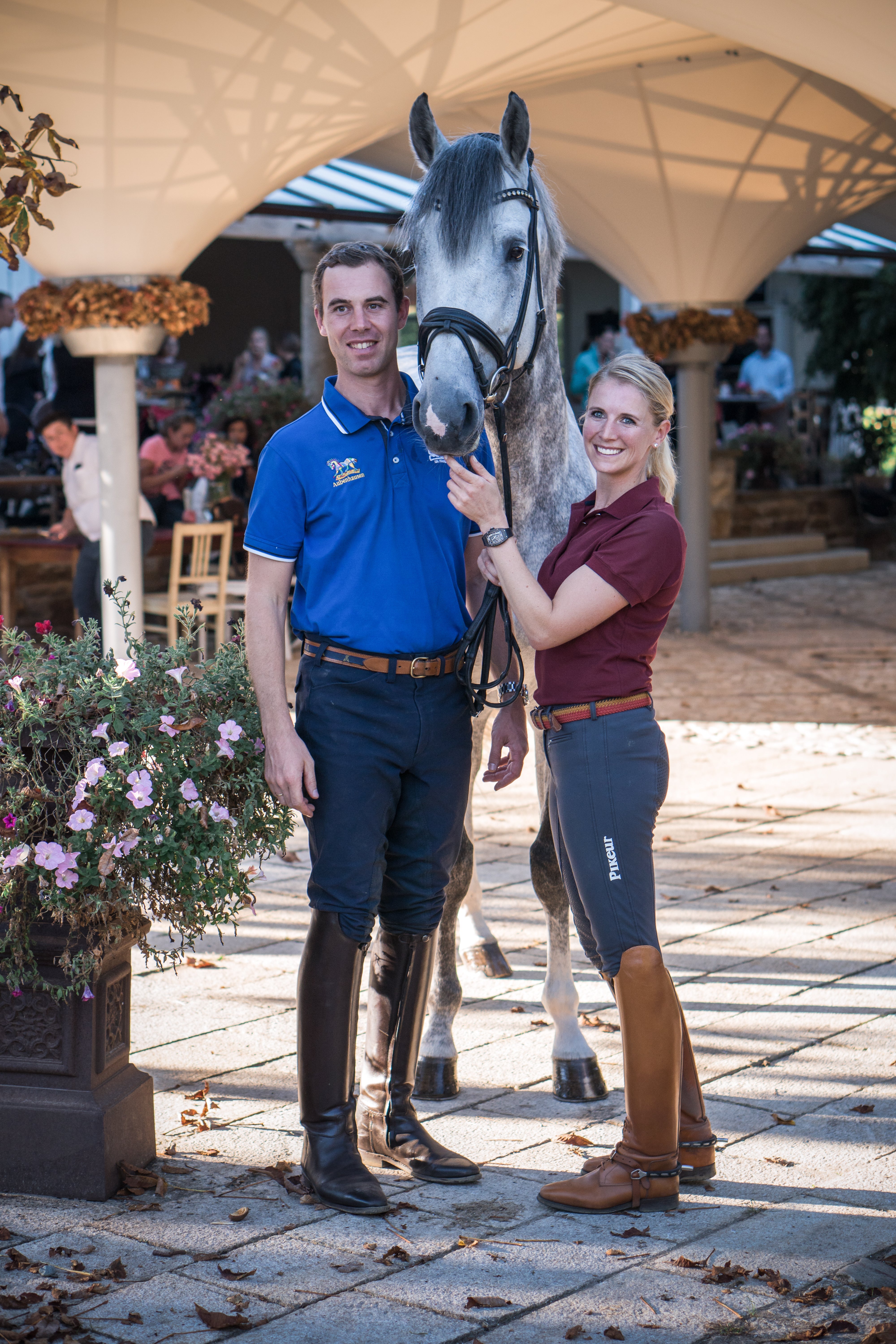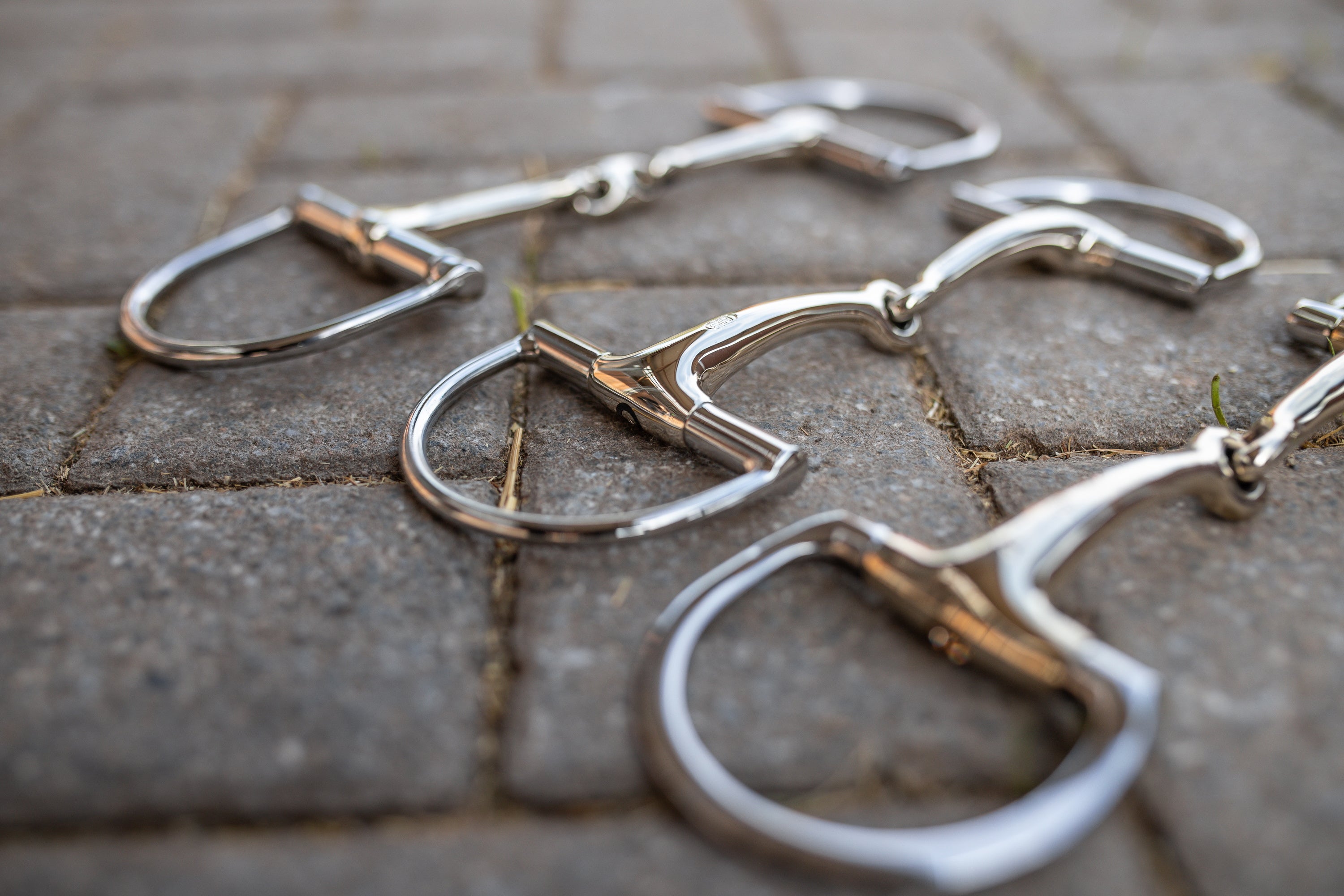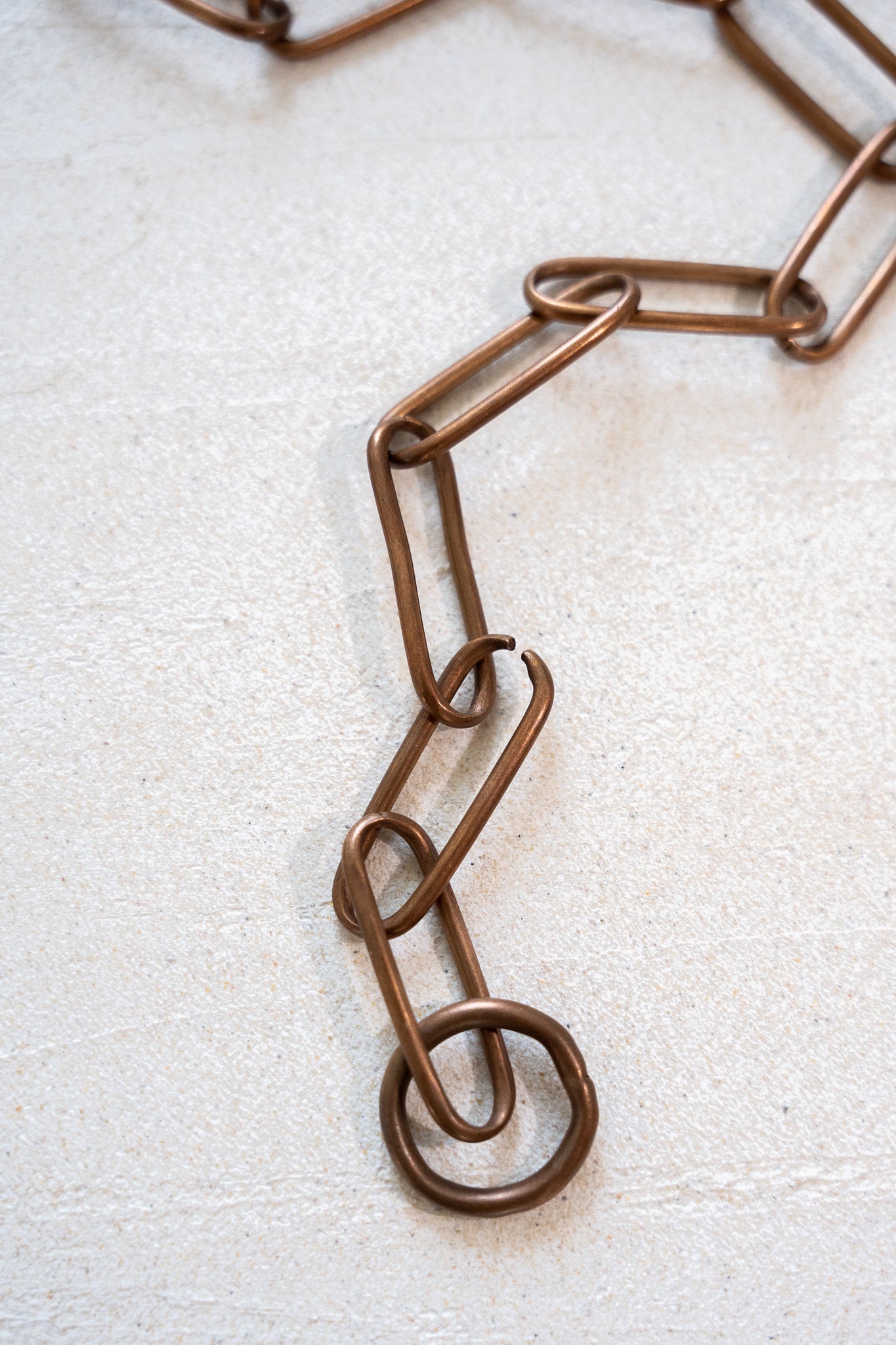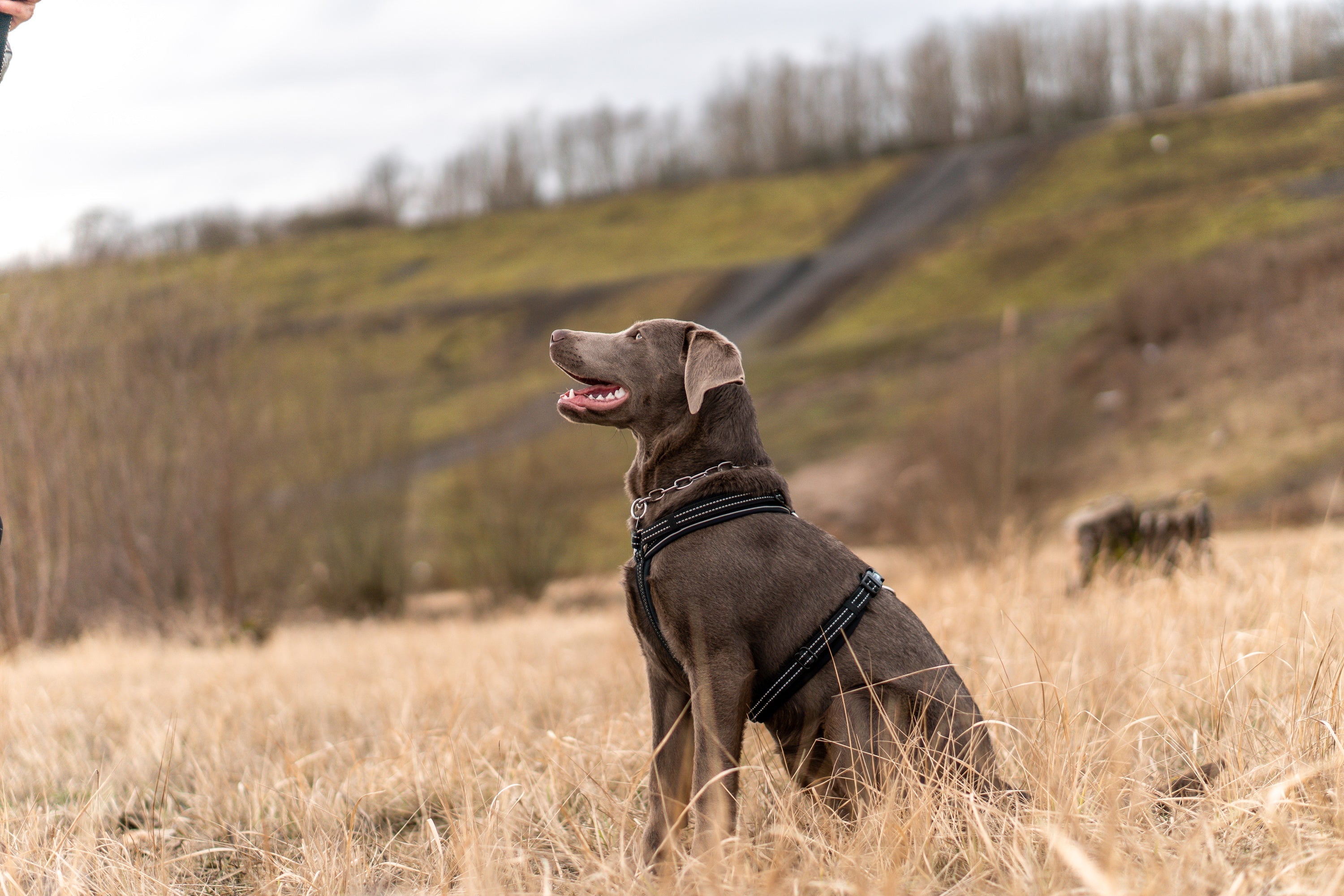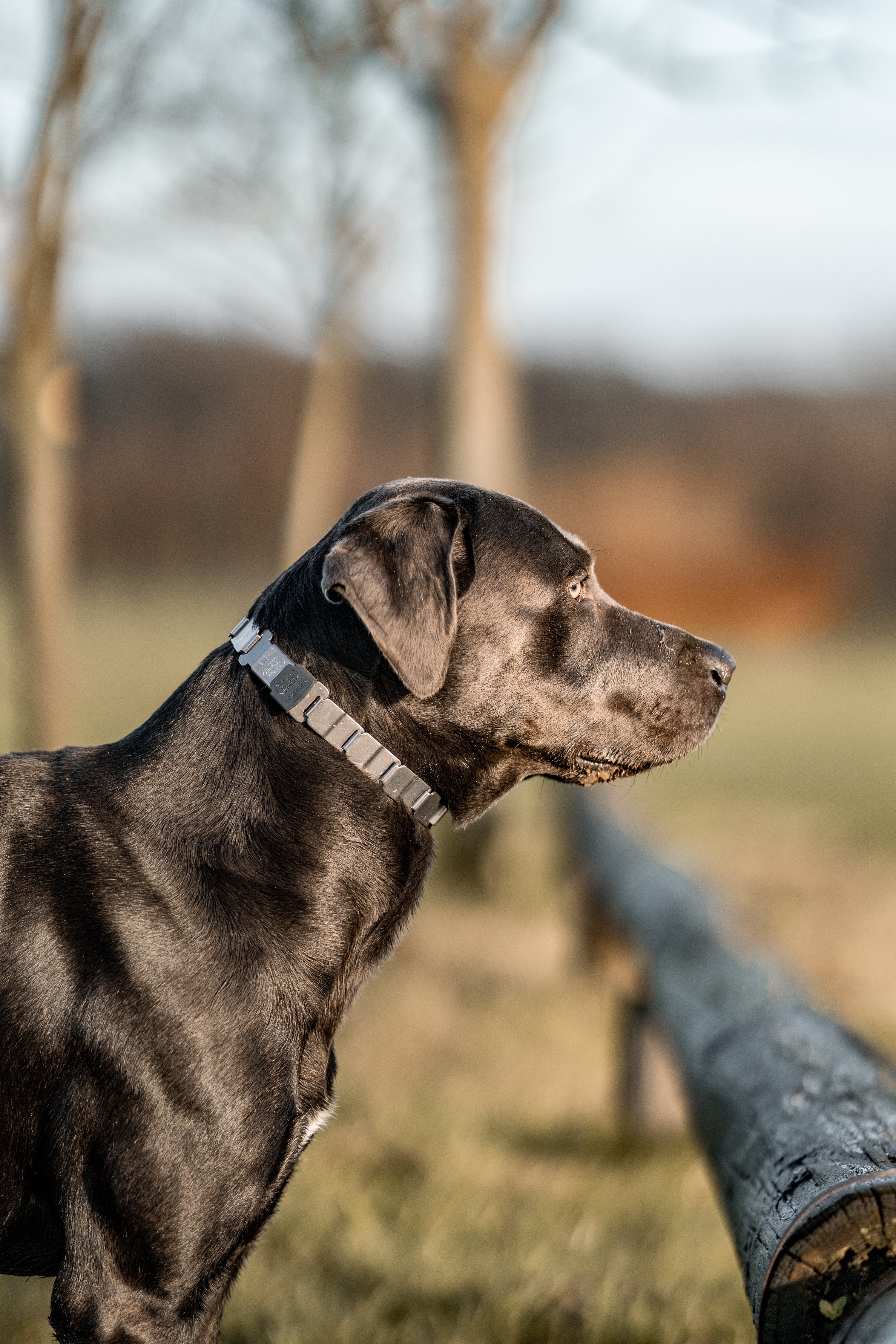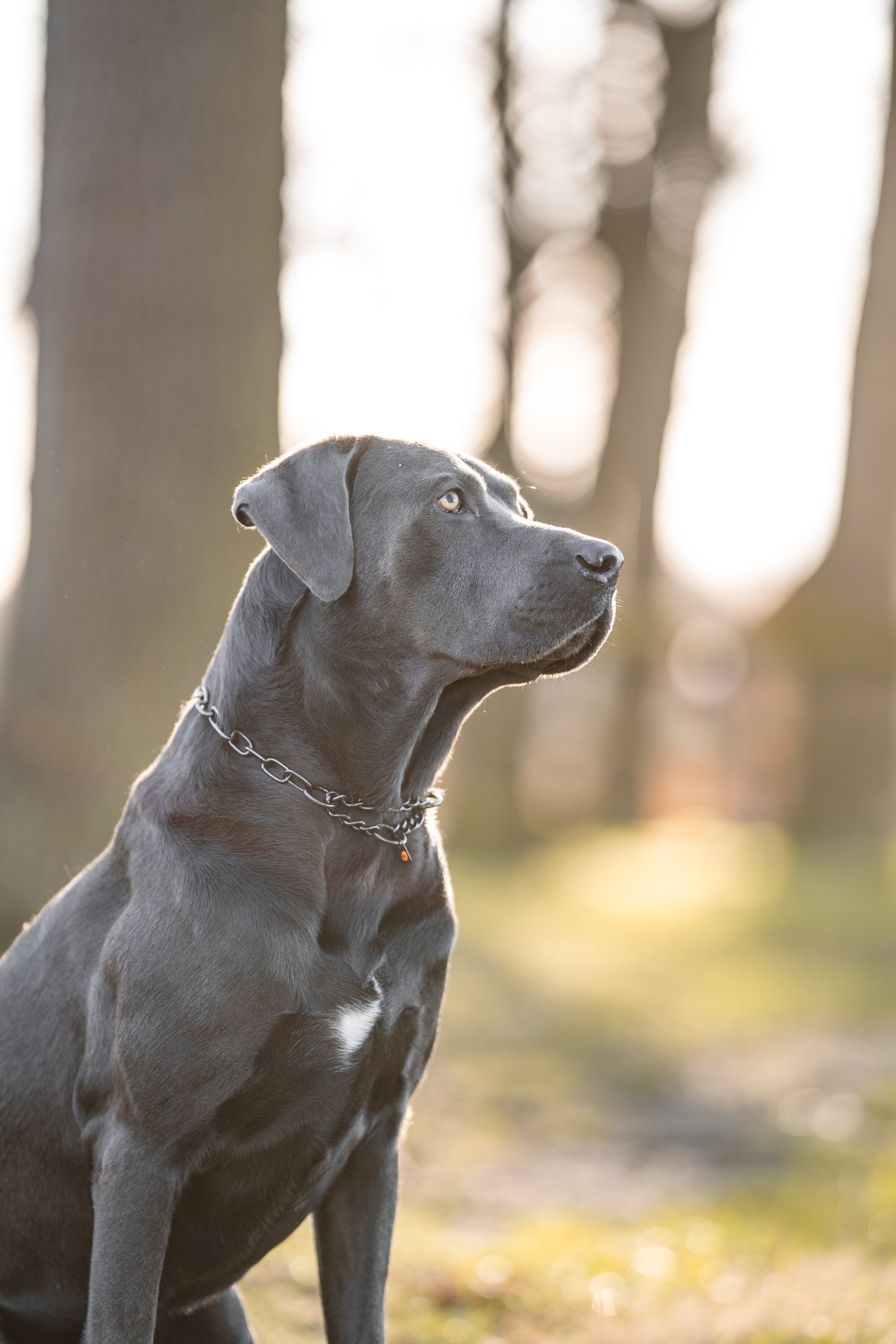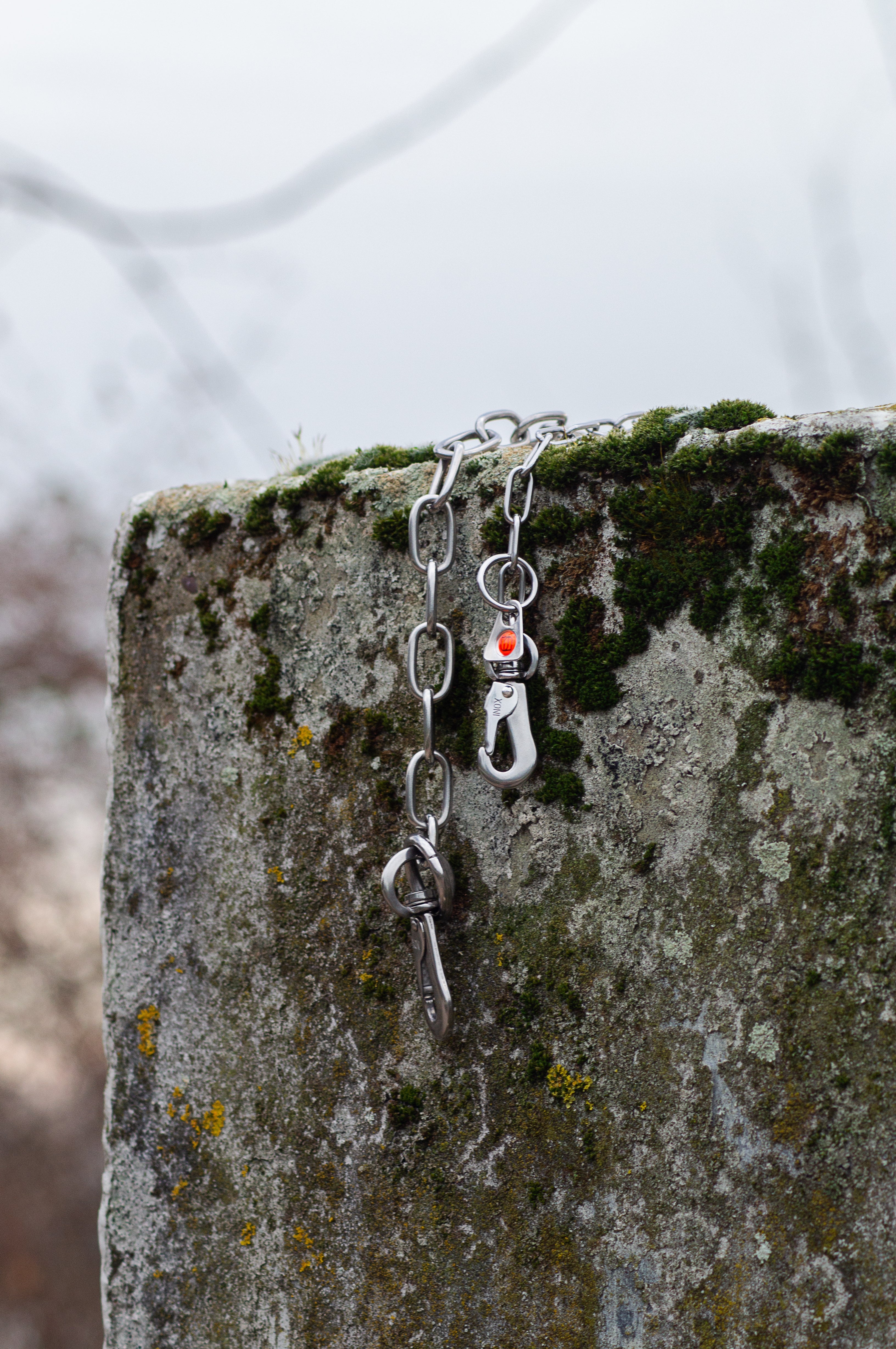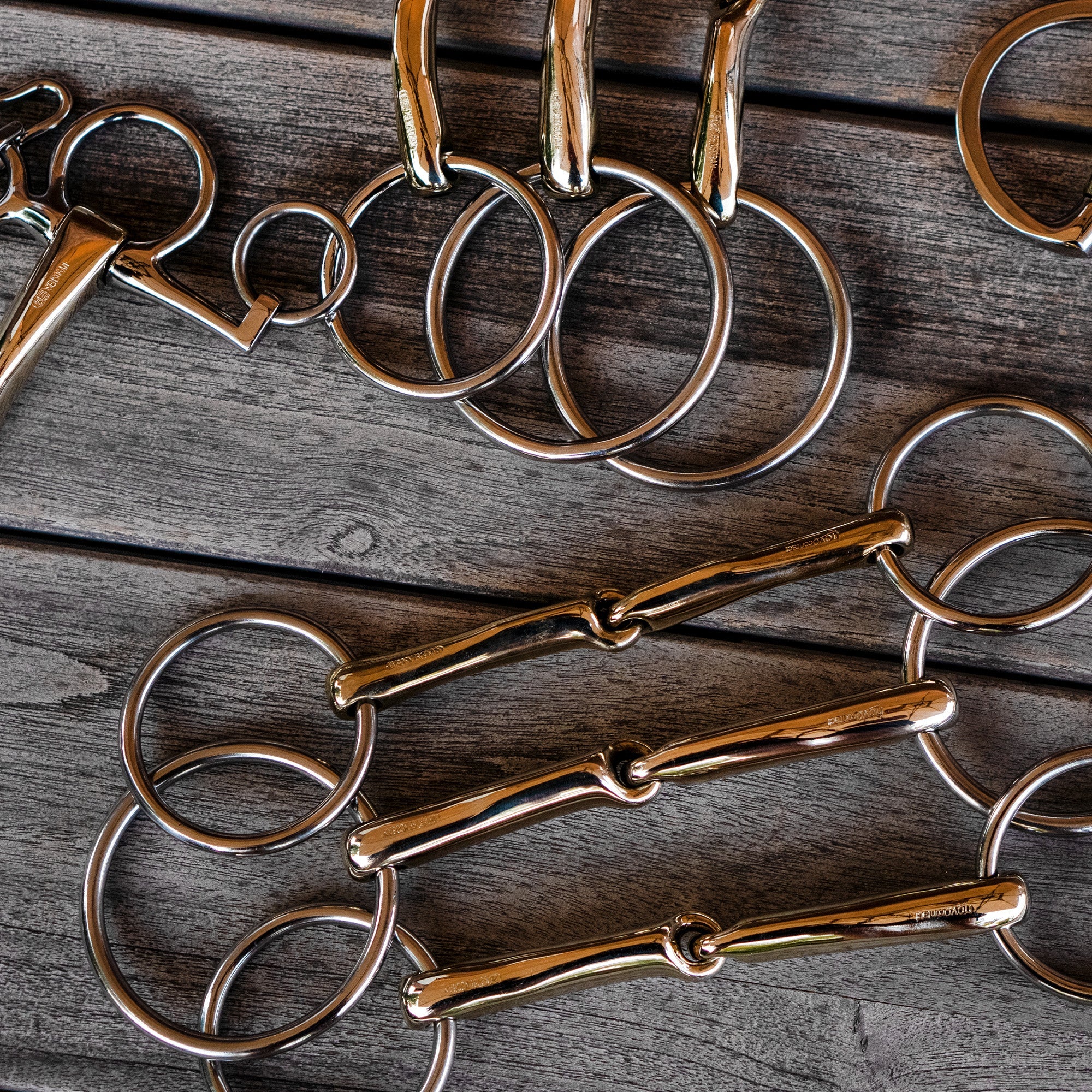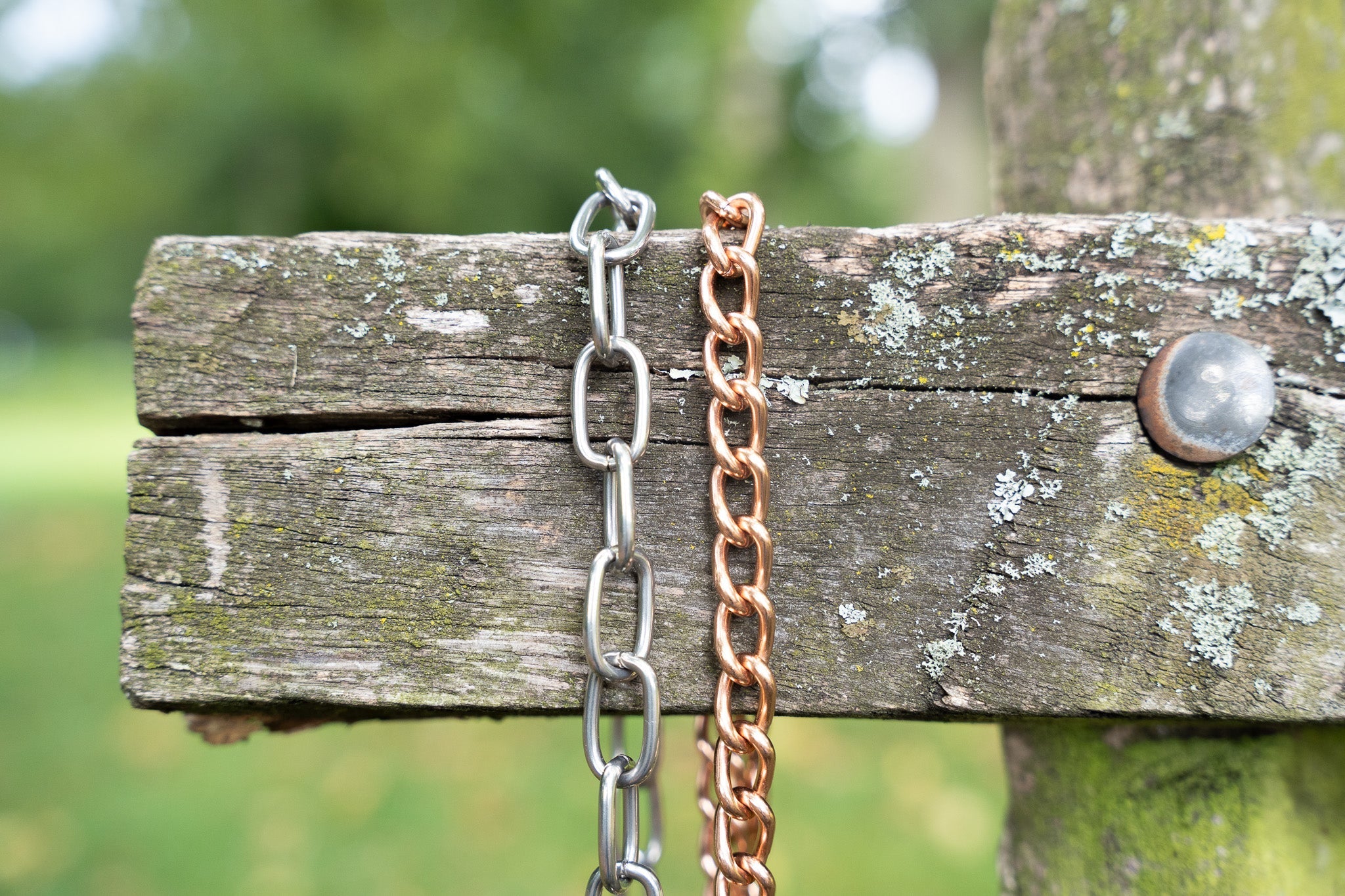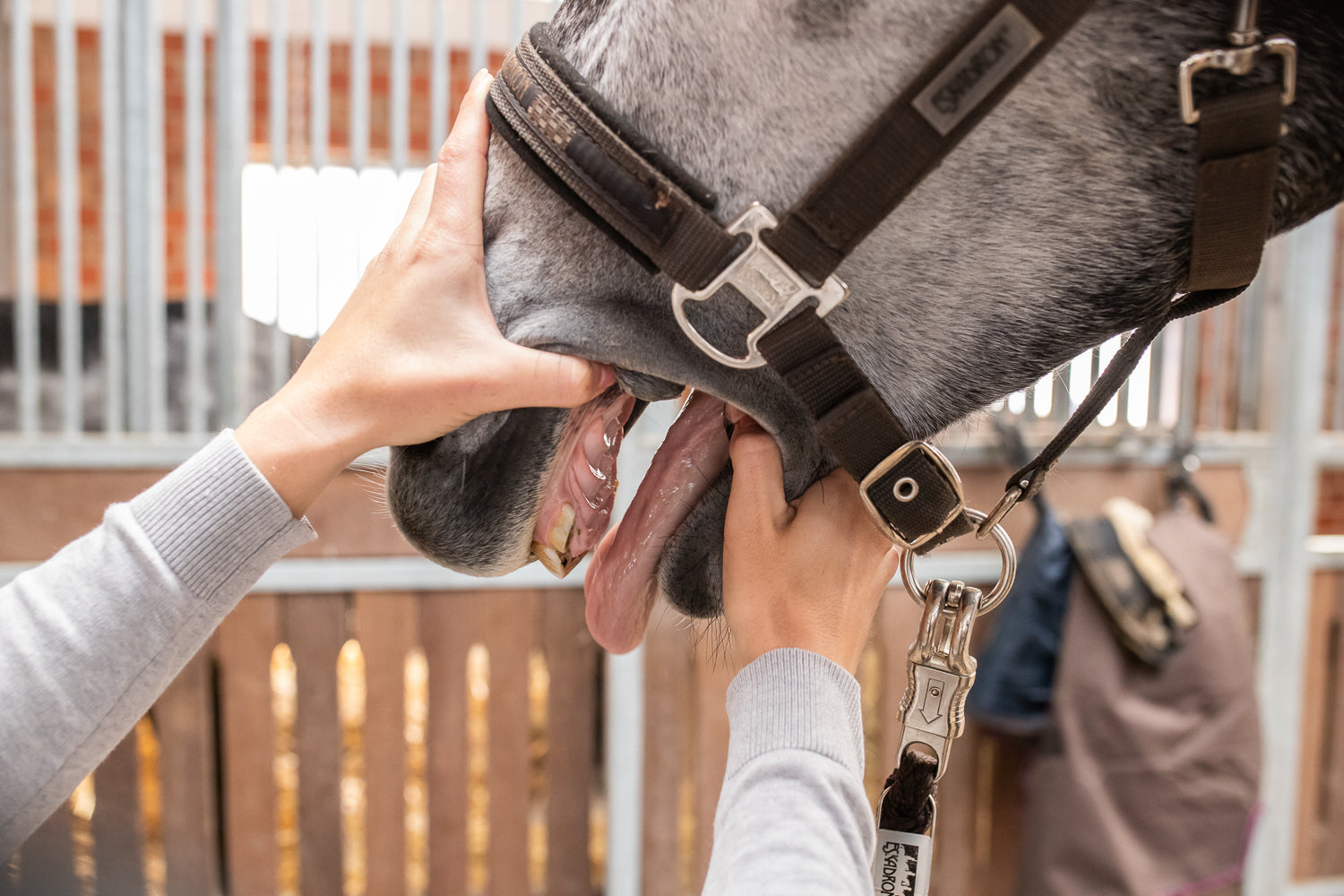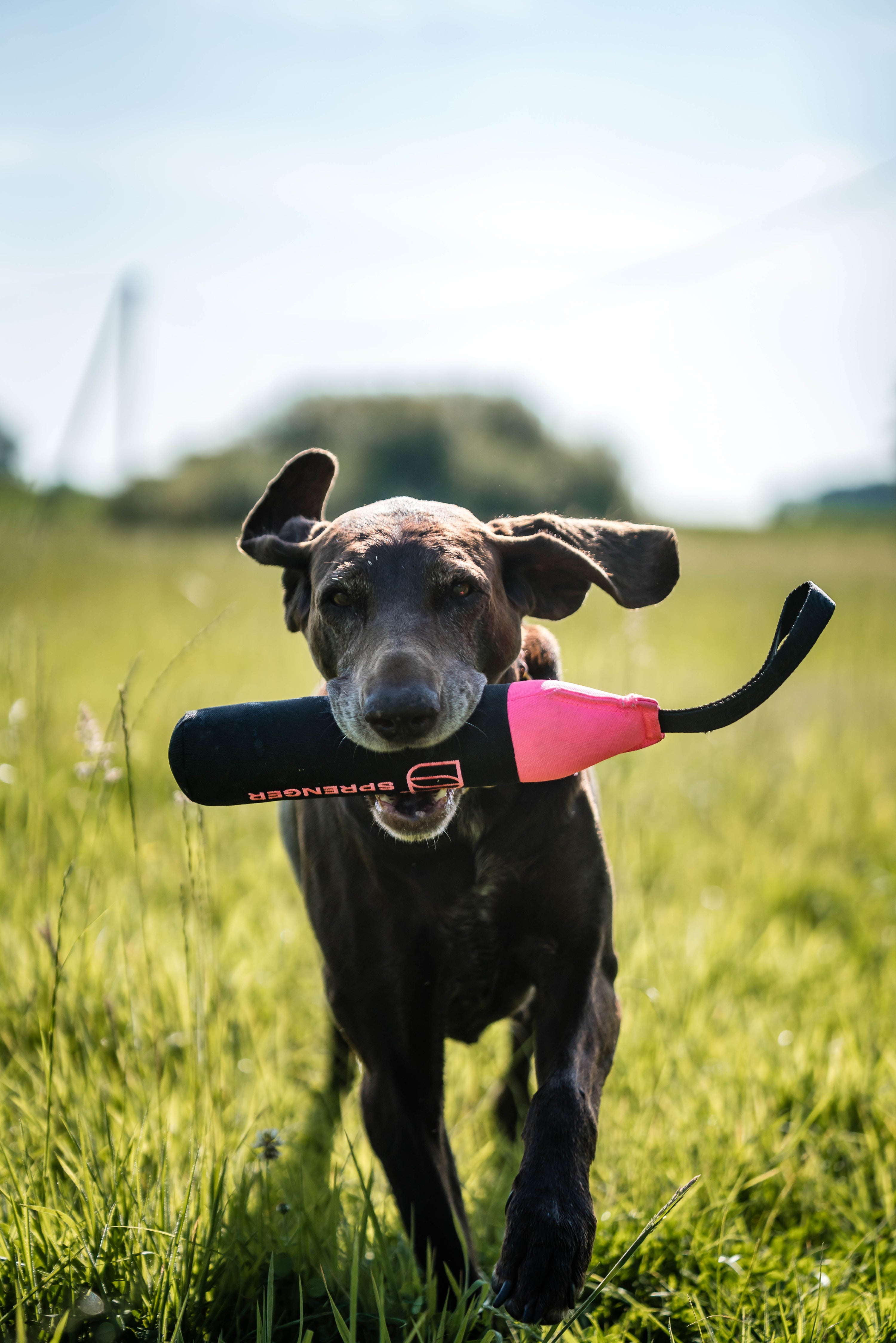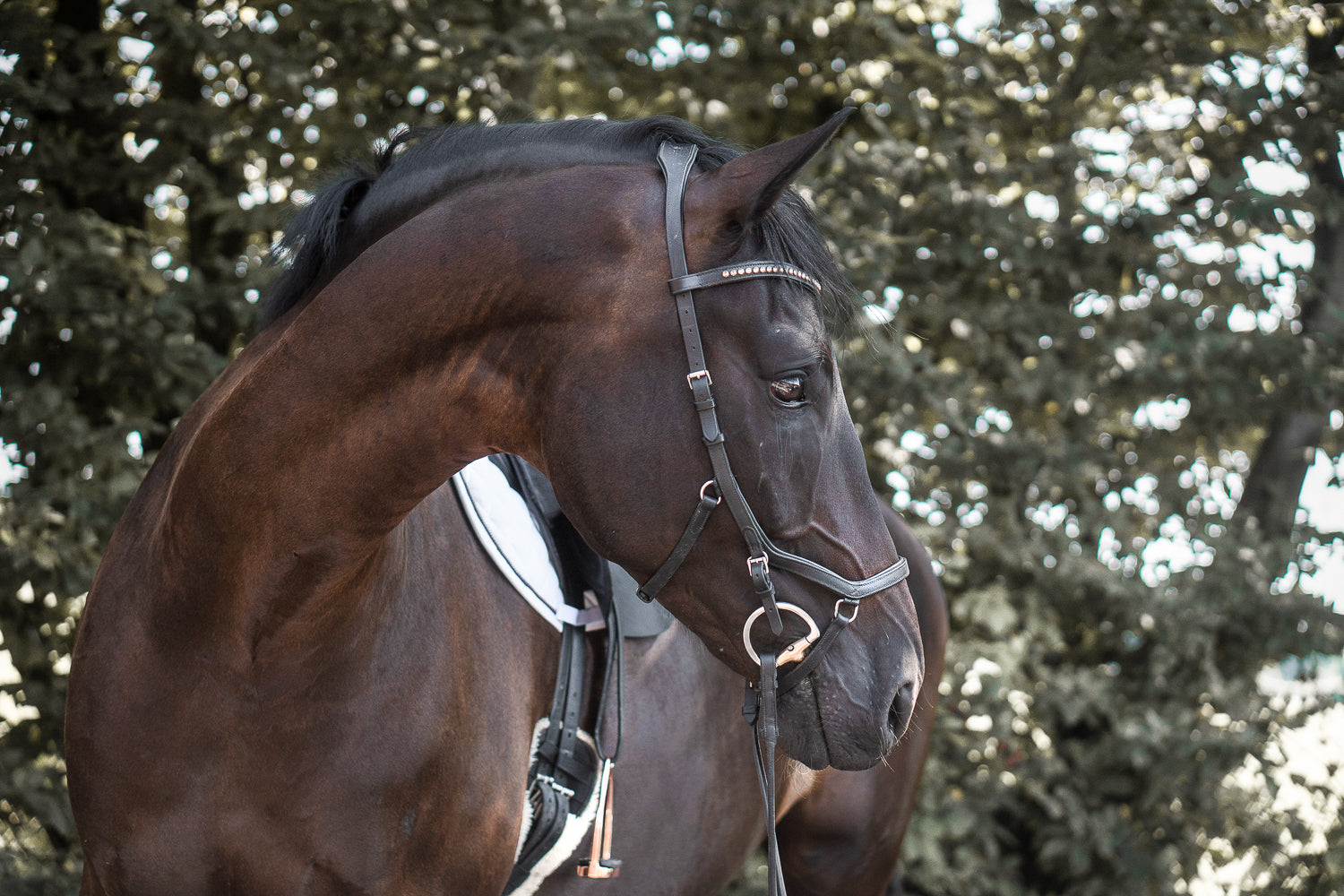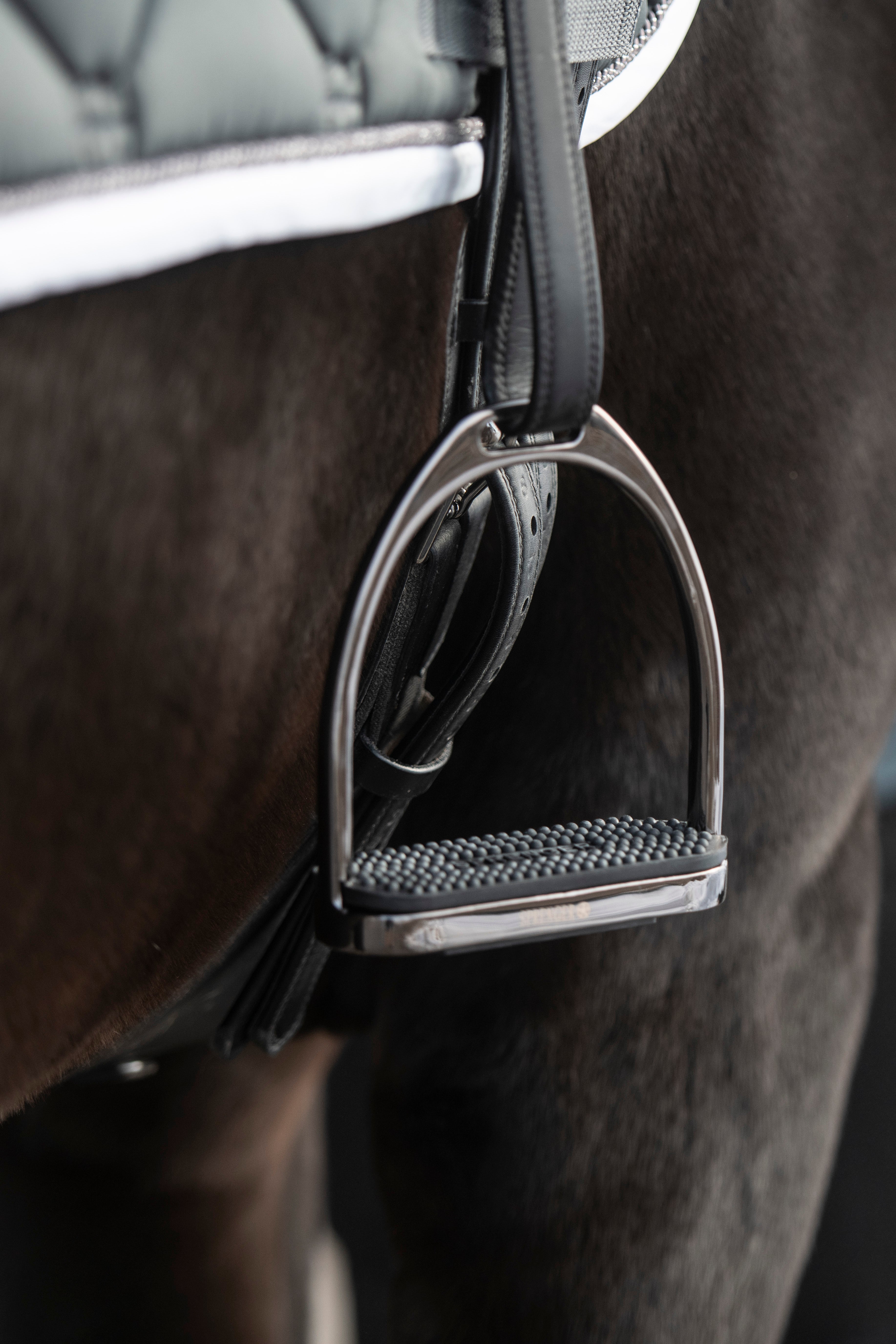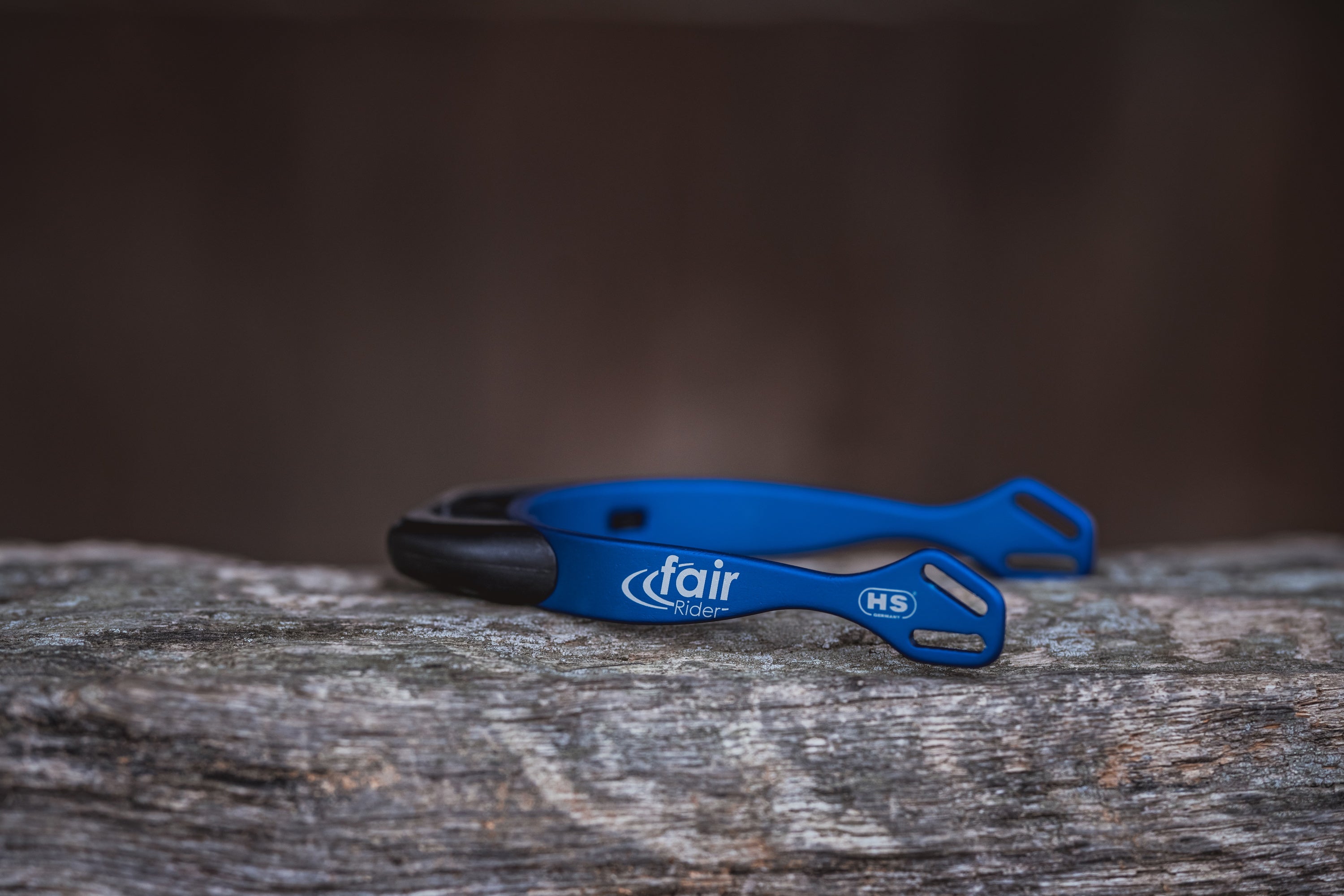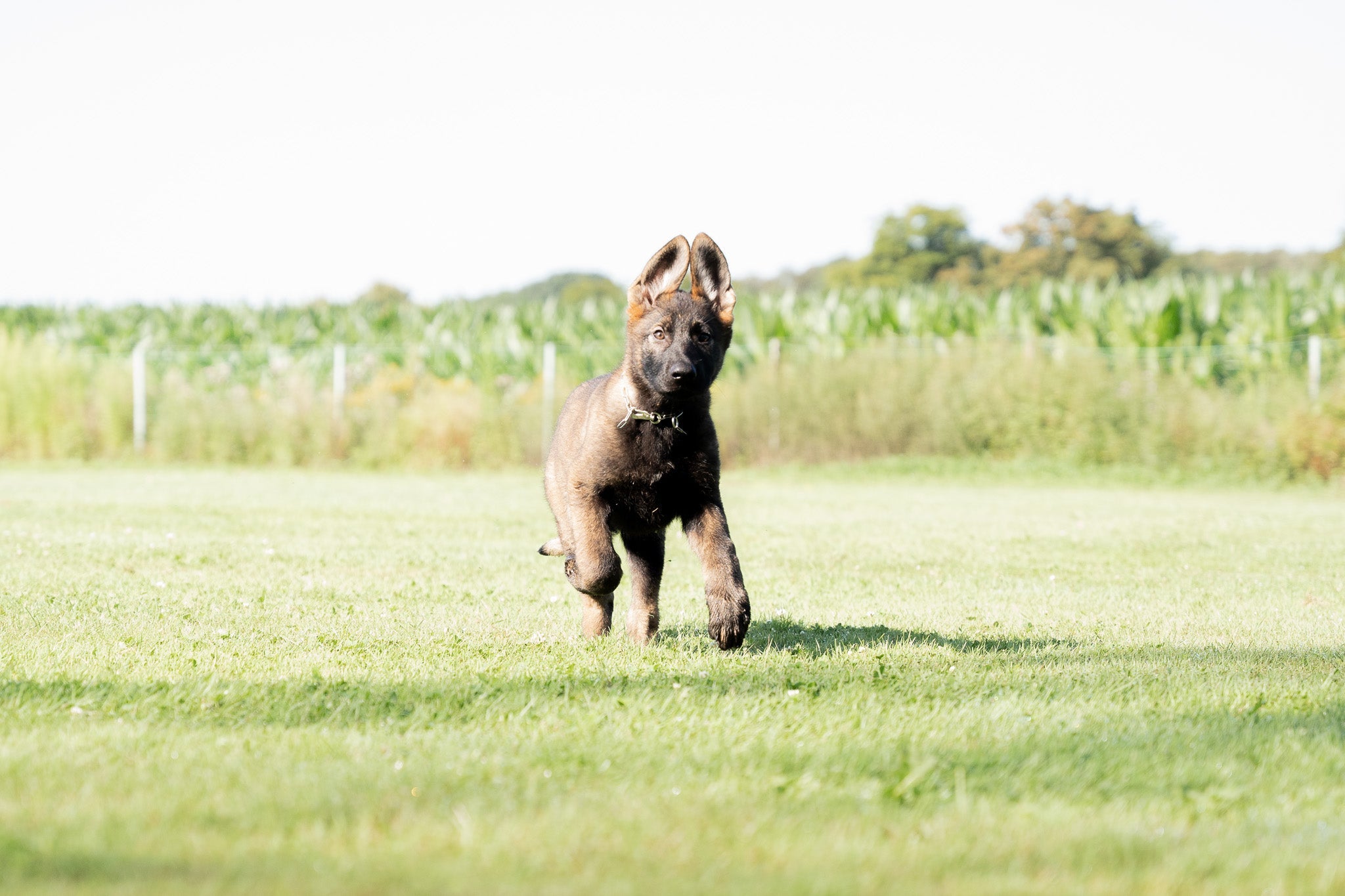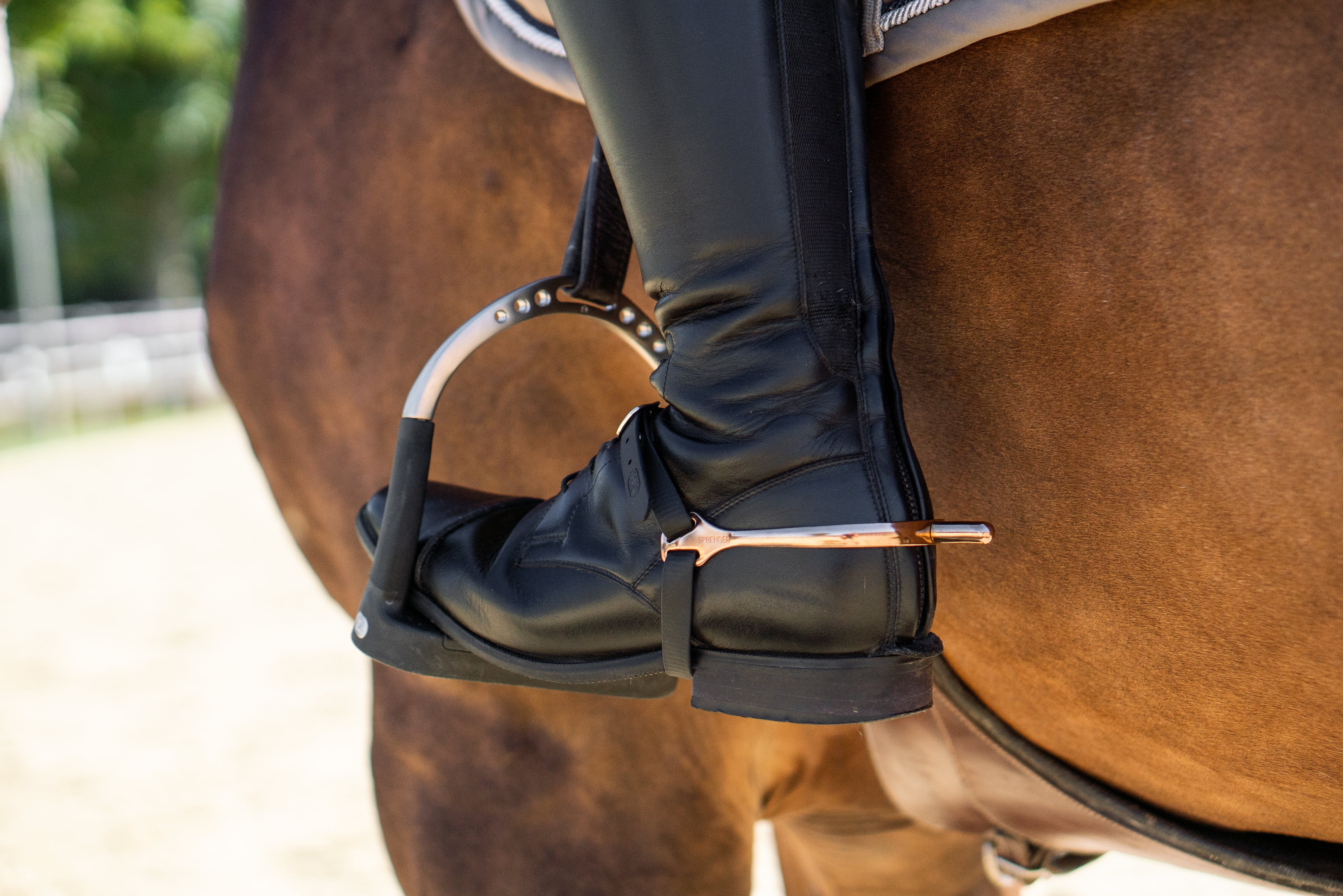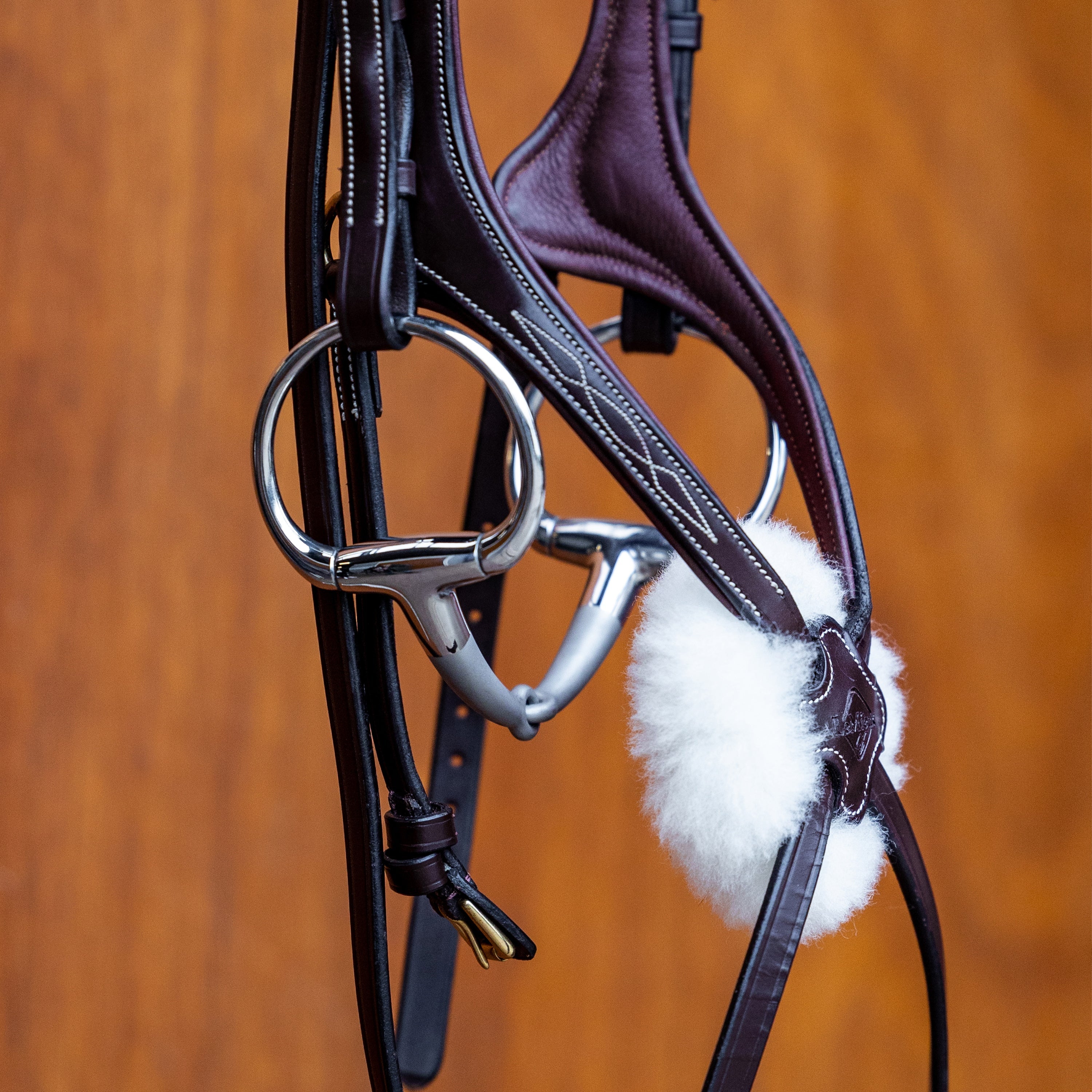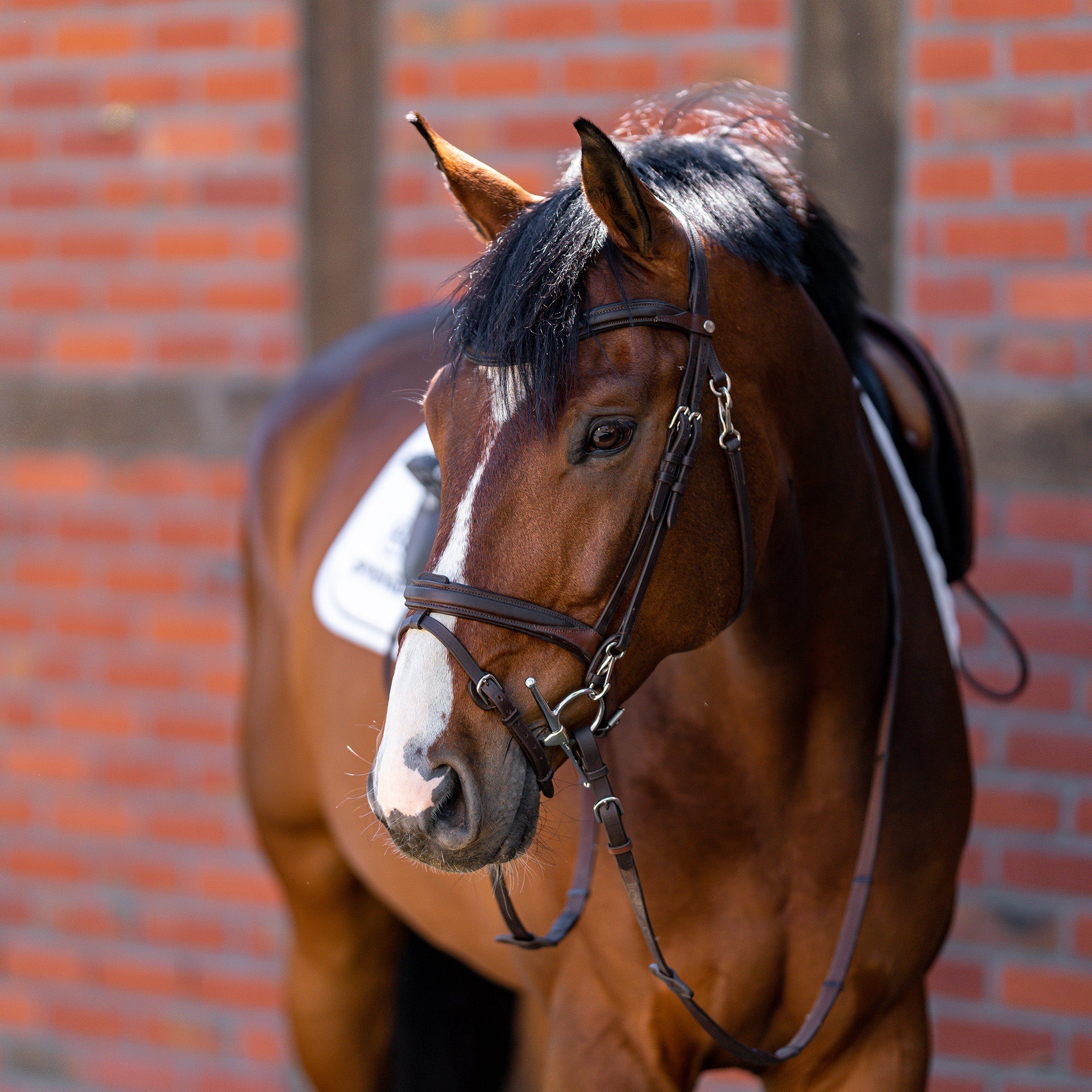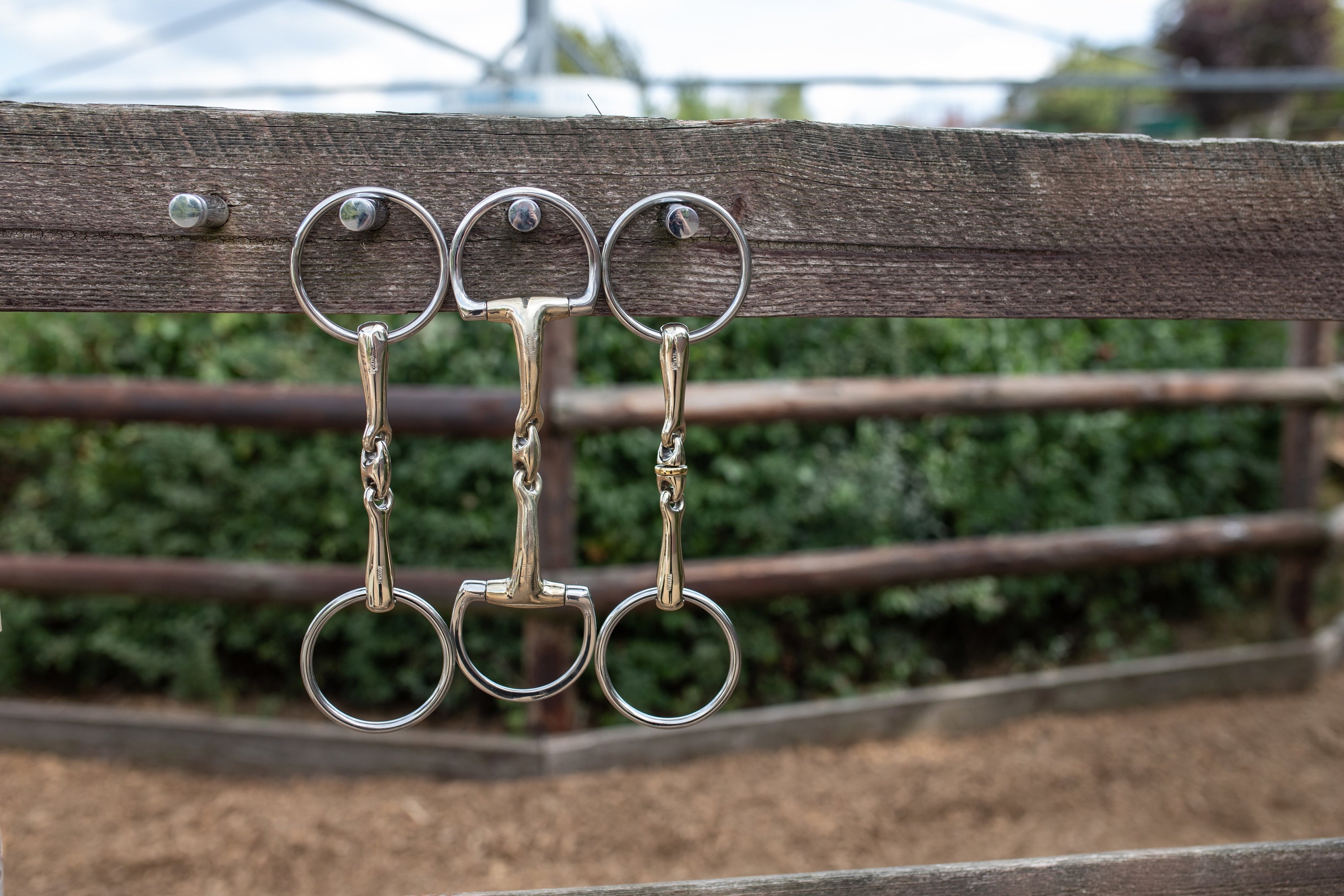
Are you confused by all the different types of bits on the market? In this article, we want to shed some light on the subject and explain the different types of bits, the different fits and materials in more detail. Of course, the bits differ not only in terms of shape and material, but also in terms of how they work. Accordingly, not every bit is suitable for every horse or rider. The choice of the right bit depends on various factors, such as the rider's experience, the discipline, the horse's character and the anatomical conditions in the horse's mouth. If you take these factors into account, you will quickly find the right bit for you and your four-legged friend with us.
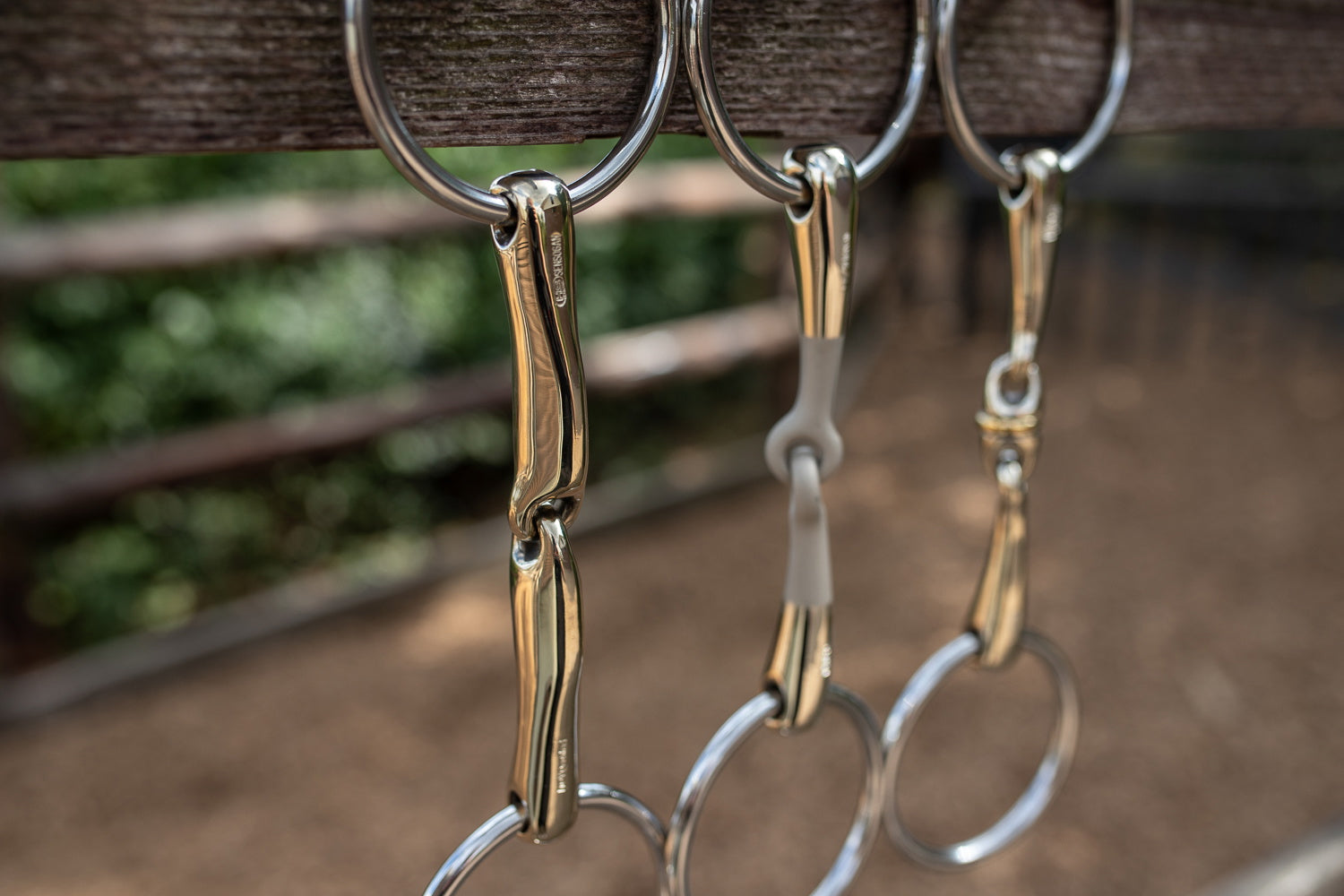
Snaffle bits, weymouth bits & driving bits
This difference is probably the simplest. The normal bridle is used with a snaffle bit, i.e. a single bit that is buckled into the cheek pieces. The reins are then attached to the bit rings. In dressage, weymouths require a special double bridle with two cheek pieces: the snaffle bit or, in this case, the bradoon is strapped into the rear cheek piece and the weymouth is attached to the front cheek piece. The latter is always a rigid mullen mouth with a curb chain. In certain riding styles, a bare weymouth is used, i.e. only the weymouth is used.
The name already suggests that driving bits are used in driving sports. Most classic driving bits are driving curbs and have a rigid or broken mouthpiece with fittings. Often the bit has different ways of buckling the reins to vary the leverage effect.
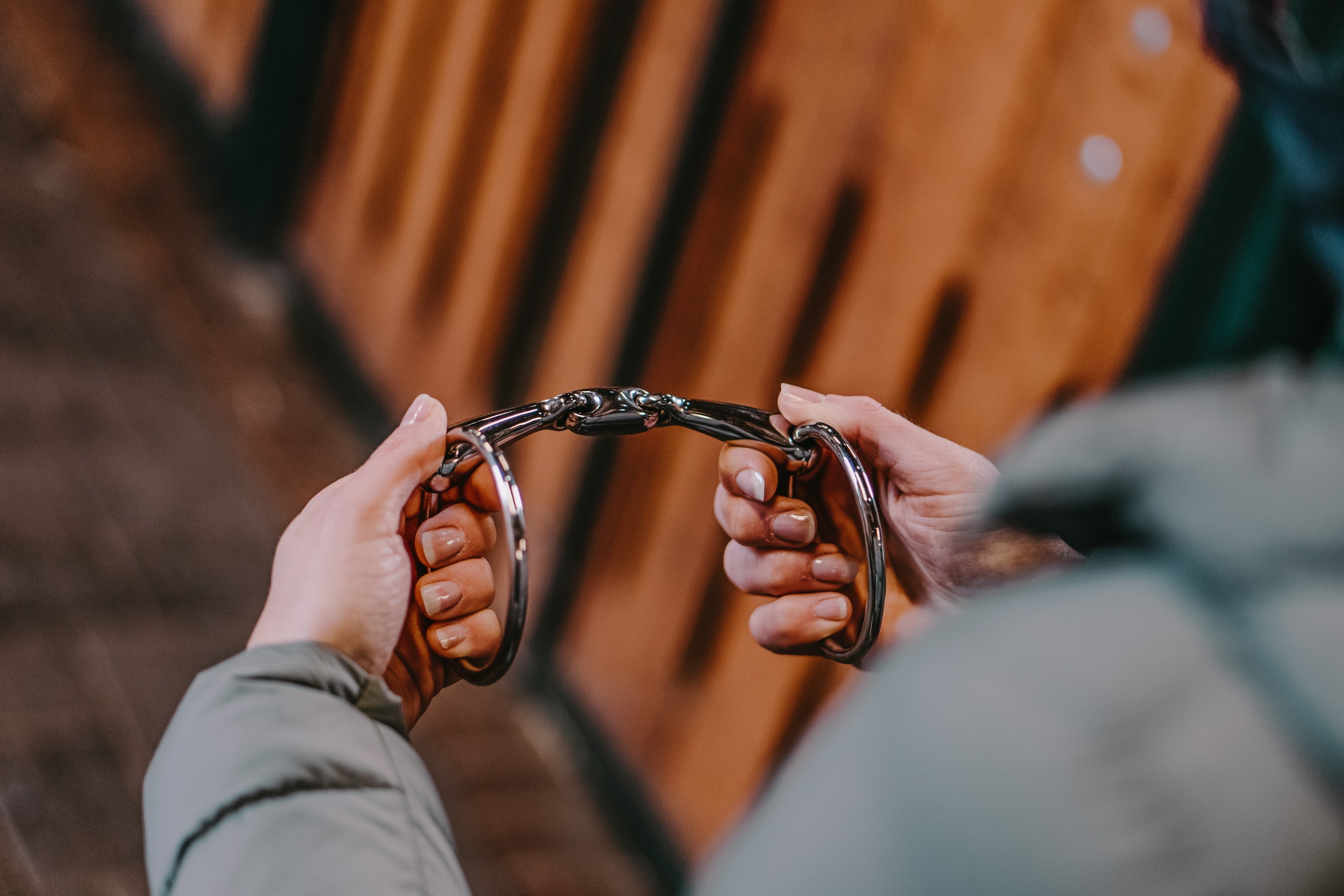
Snaffle bits by mouthpiece: mullen mouth, double or single jointed bit
Essentially, single or double jointed bits and mullen mouths are the main representatives of the various mouthpiece shapes. The most even distribution of pressure over the tongue is provided by mullen mouths. This type of bit includes straight or flexible mullen mouth bits, mullen mouth bits with port and also lock-up bits that become a mullen mouth under stronger impact. You can read more about this type of bit in our blog post on mullen mouth bits.
With double jointed bits, the pressure distribution is also quite even due to the three-part mouthpiece, as the pressure of the rein aid is distributed over the middle and edges of the tongue. In the case of bits with a single jointed mouthpiece, on the other hand, the pressure is increasingly directed towards the edges of the tongue and the center of the tongue is relieved at the same time.
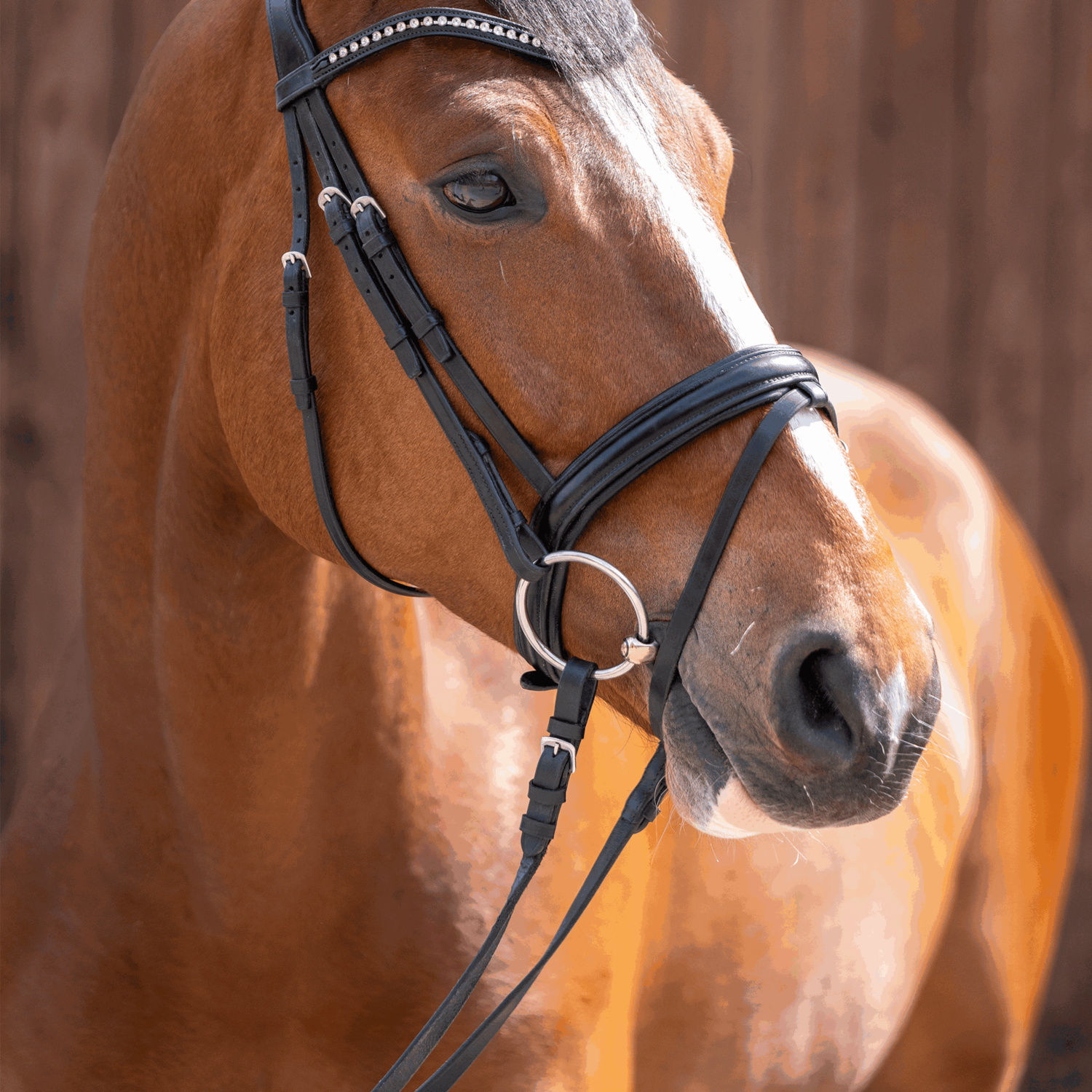
Snaffle bits by side piece: loose ring snaffle , eggbut bit, D-ring bit, full cheek snaffle, Baucher bit
The variety of snaffle bits is huge and yet every model has its raison d'être. It is not only the mouthpieces that differ, but also the side pieces. Loose ring snaffles, where the mouthpiece (whether single or double jointed, or mullen mouth) can move through the bit rings, are probably the most common.
How a loose ring snaffles works
Bits with continuous rings work exclusively on traction, whereby the pressure created when the reins are pulled is transferred to the lower jaw via the tongue. The movable rings cushion an unsteady or inexperienced rider's hand somewhat and the horse can also move the bit by tensing its tongue and thus avoid excessive pressure. This makes the loose ring snaffle a real all-rounder and not only a popular model for beginners and young horses, but also a loyal companion during further training.
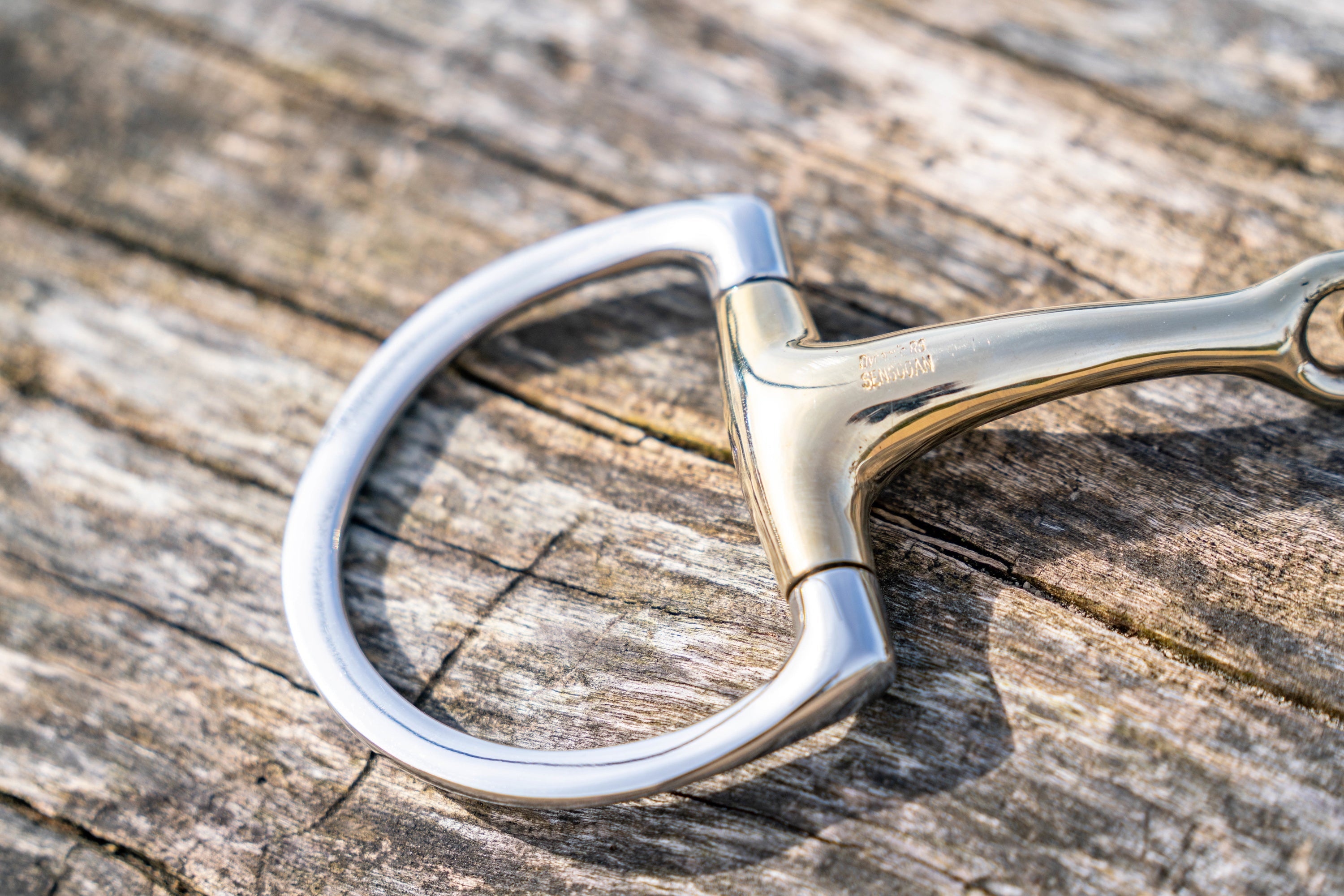
Eggbut bits, D-ring bits and full cheek snaffles
This is not possible with bits with fixed side pieces, where the rein aids are transferred more directly to the tongue (and the lower jaw), which is why the rider's hands should be able to act as calmly as possible and independently of the seat when using eggbut bits. The mouthpiece also lies particularly steadily in the horse's mouth and is gentle on the corners of the mouth thanks to the soft transitions to the side parts. The lateral contact surface of bits with fixed side pieces also provides lateral support and makes it easier to control the horse on the outside rein. The larger the side piece, the greater the lateral support (e.g. with D-ring bits or full cheek snaffles). For example, eggbut bits are a good choice for horses that tend to fall out over the outside shoulder when turning, have sensitive corners of the mouth or have a very restless mouth and ‘play’ too much with a loose ring snaffle.
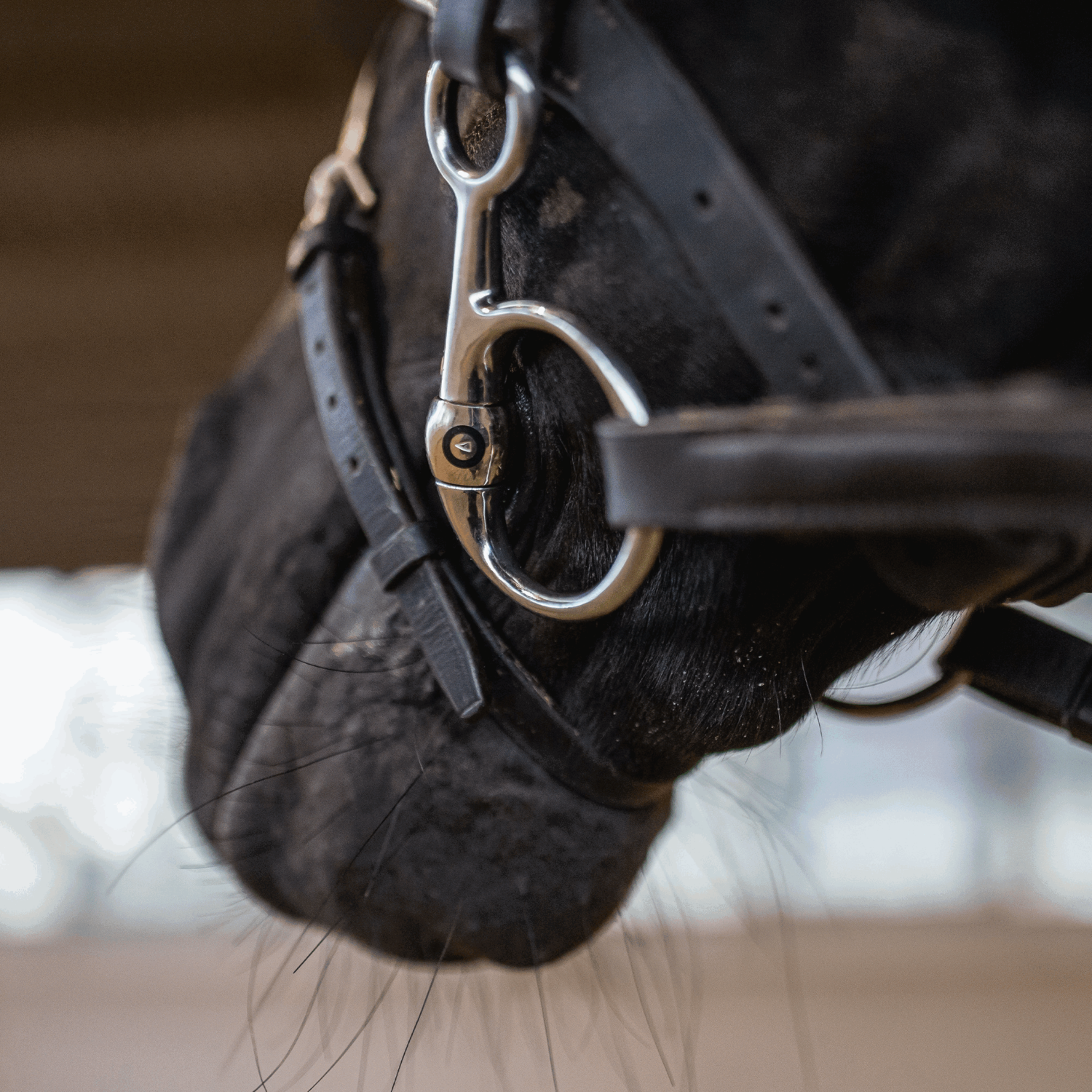
Special case of the Baucher bit
The Baucher bit (also known as the B-ring snaffle or Fillis snaffle) is a special case. The bit also has a single, double or unjointed mouthpiece that is firmly attached to the side pieces. In this case, the mouthpiece is attached to the lower end of the side piece and therefore lies particularly close to the tongue and quietly in the mouth. Unlike bits with loose rings, here, single or double jointed mouthpieces do not sag and therefore hardly move - ideal for horses that react sensitively to ‘restless’ bits or with short mouth gaps. The side pieces also have a limiting effect when riding turns.
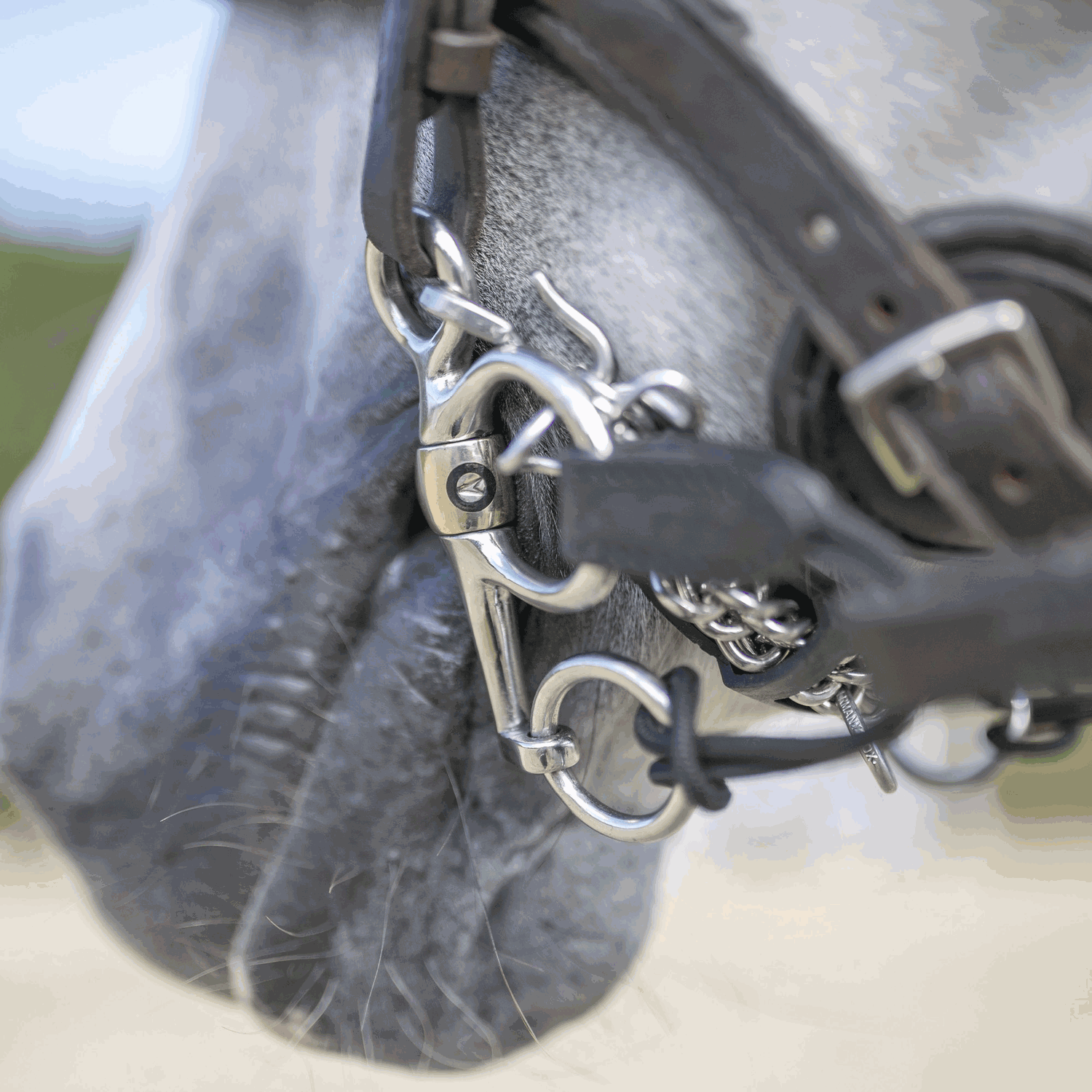
Jumping bits: Pelhams, Kimblewicks and 3-ring bits
Anyone looking for a bit with leverage in show jumping often looks for a Pelham or a Kimblewick. The classic jumping curb bit, also known as a Kimblewick or Kimblehook, has a fixed side piece with two different options for attaching the reins. To limit the leverage effect, the Kimblewick can be used with a chin strap.
3-ring bits, Pessoa bits and universal bits also offer various options for buckling the reins and thus varying the effect on the poll. The use of chin straps or curb chains also limits the effect of these bits with leverage.
Similar to a dressage weymouth, the classic Pelham also has a lower cheek. This is usually kept quite short in order to exert little pressure on the poll, but to enable quick action, which is often required on the course. Here too, there are various ways to buckle the reins: only in the upper ring (effect like a snaffle bit), only in the lower ring (always leverage effect on the poll), with a Pelham converter (always a combined effect) or with 2 pairs of reins, for a targeted and independent effect.
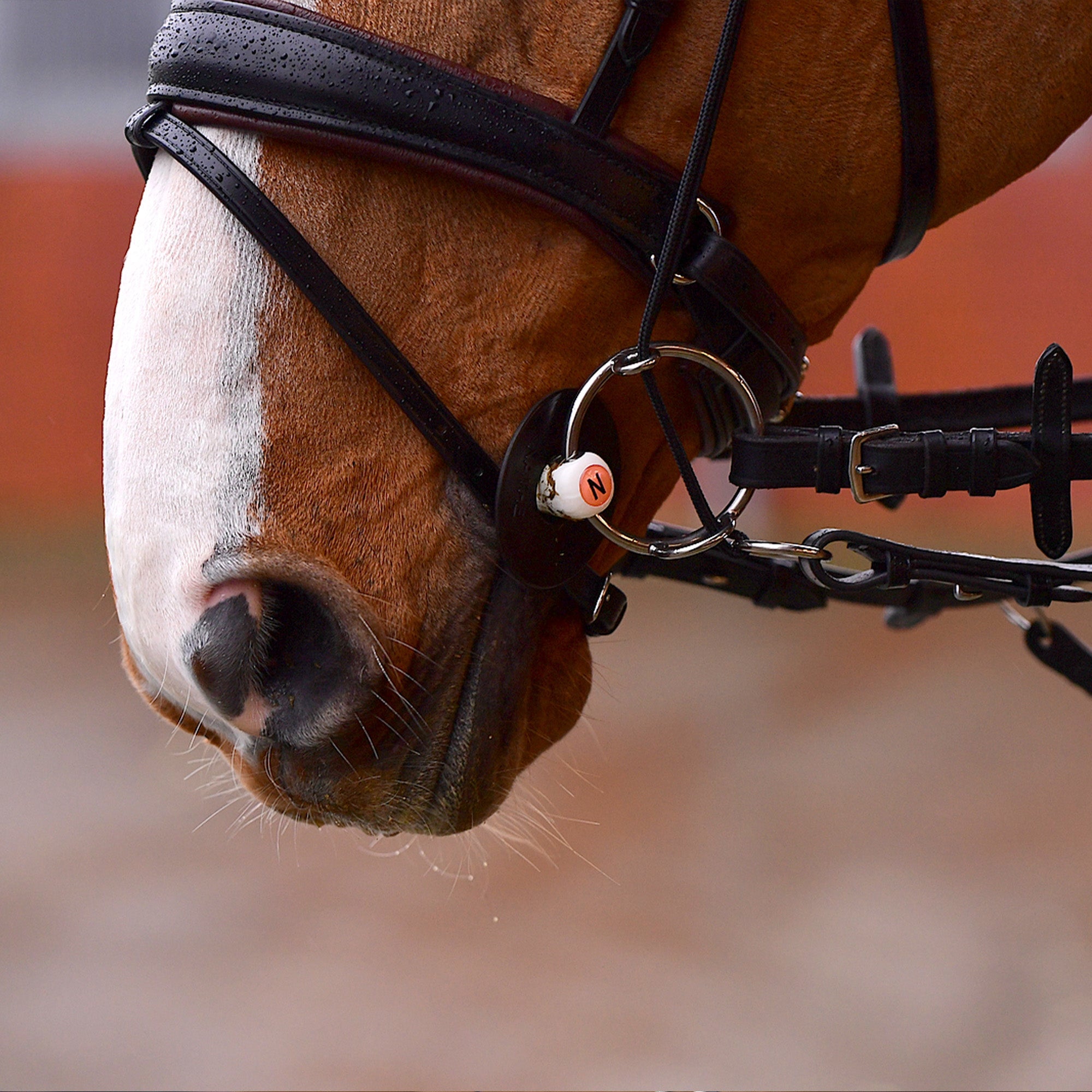
Gag bits
With gag bits, the pressure of the rein aid is also exerted on the horse's poll. At the same time, however, the gag bit also acts on the corners of the horse's mouth, causing the horse to straighten up and press down less. This type of bit is a good choice for experienced riders whose horse presses down or lies on the hand. The gag bit can also be a good choice for show jumpers who tend to dive down after the jump.
Plastic, metal or rubber - which material for the bit?
Rubber bits
Rubber bits have a decisive disadvantage due to their surface texture: if the horse does not salivate enough, the rubber acts like an eraser and rubs on the tongue. You should therefore make sure that your horse chews enough when you use a rubber bit. In addition, the soft rubber should not come into contact with the teeth. To ensure greater safety, SPRENGER rubber bits have a stainless steel core that cannot be bitten through.
Plastic bits
Rubber bits are often used for sensitive horses. But what if the horse doesn't salivate enough and the rubber rubs on the tongue? Plastic bits such as our DUO mullen mouth bits or the NATHE bitss made of thermoplastic are the ideal alternative here. The smooth material cannot cause an eraser effect and lies comfortably in the mouth. Plastic bits can also be a good choice for horses that chew hard, as there is no additional chewing effect from the material.
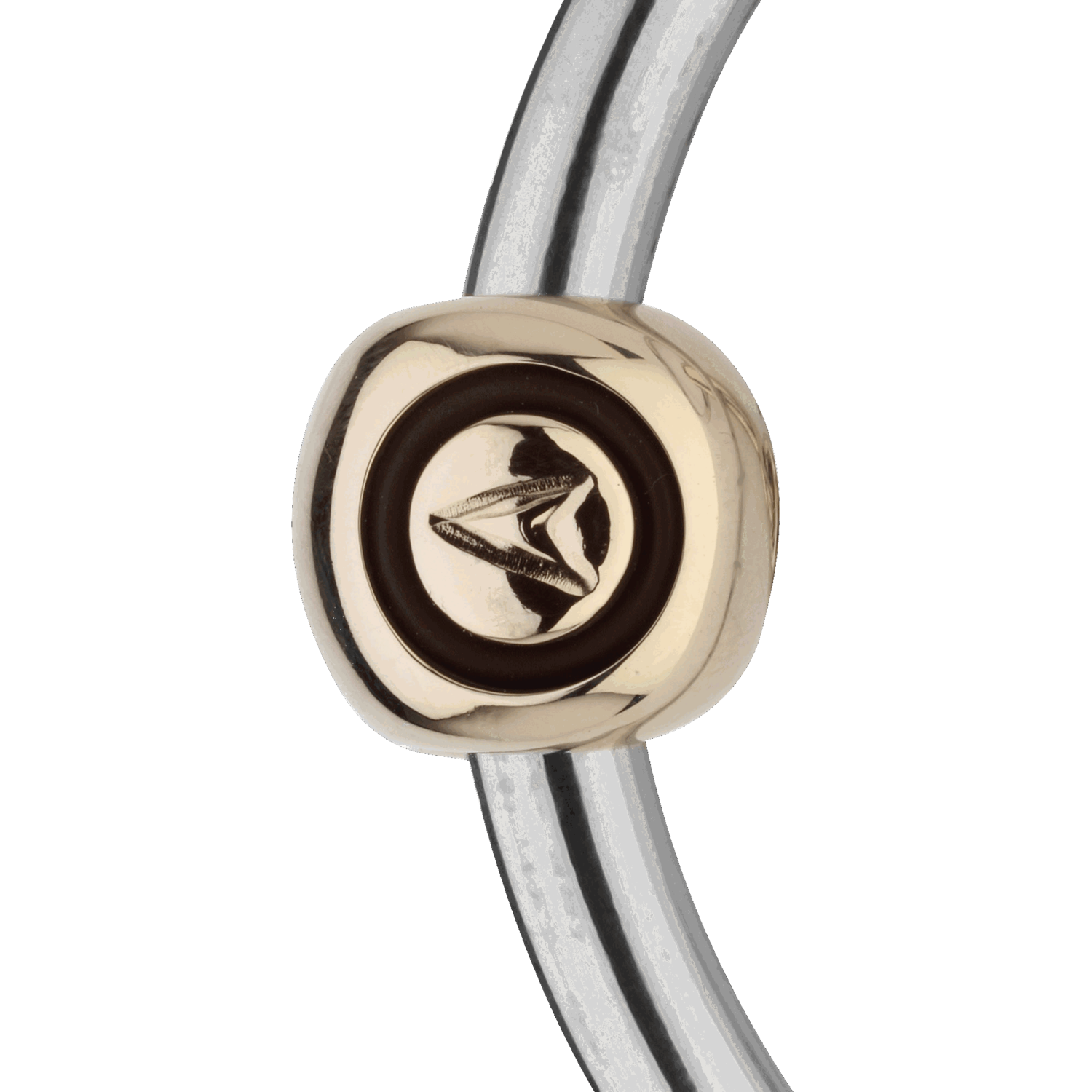
Stainless steel bit
The alloy of iron, chrome and nickel has a particularly high strength and is therefore particularly suitable as a bit material. It is tasteless and also has no chewing promoting properties. As there are significant differences in the quality of stainless steel, we ensure that our bits meet the highest quality standards! SPRENGER stainless steel bits therefore offer a good entry-level range.
SENSOGAN bits
SENSOGAN is the copper alloy developed by SPRENGER, which specifically stimulates the horse's saliva flow and thus promotes chewing activity. The other components, manganese, and zinc, harden the soft copper without interfering with the natural oxidation process. Thanks to the manganese, the alloy requires less copper than the previous AURIGAN. The trace element is also good for stress reduction and muscle regeneration. SENSOGAN bits are therefore particularly well accepted by horses and promote a trusting contact, not only due to their anatomical features, but also due to their chewing properties.
ATTENTION: Not every gold-colored bit is made of SENSOGAN or AURIGAN! Conventional copper alloys are usually hardened with aluminum, which inhibits the natural oxidation of the copper and thus prevents the chewing-promoting effect.
Which bit is right for my horse?
Your horse will normally show you whether it is happy with its bit or not. If your horse is happy to accept the bit and chews in a relaxed manner when riding, or if there is even a slight foam on the horse's mouth, these are good signs that the horse is happy with the bit model. Dissatisfaction or discomfort can manifest itself, for example, in head shaking, tensing up, going against the bit or locking up. In addition to the different types of bits that are suitable for your horse, you should also make sure you choose the right size. In the article “Does my bit fit?” you can find out how to check whether your current bit fits and what you should look out for.


